




Every Christmas when I was a girl a pair of nutcrackers and a corkscrew made their annual pilgrimage from the back of a kitchen drawer to the sitting room table.
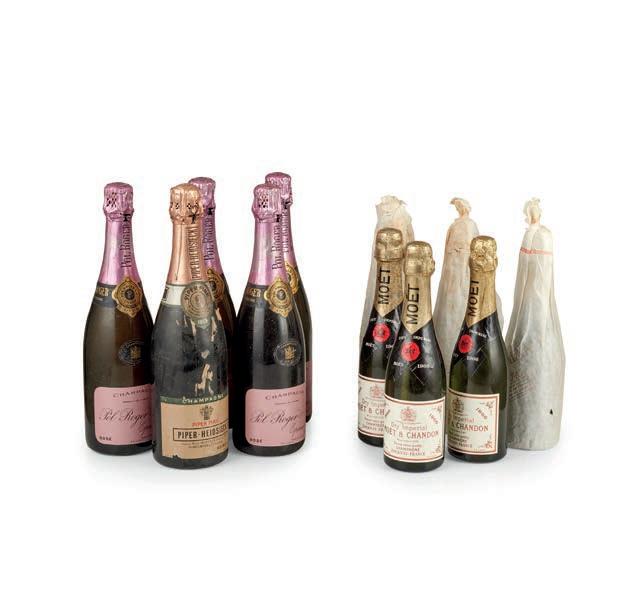
For me, it was quite the festive highlight. This was, after all, the ‘70s wh much like today, everyone was h . (I remember one year Santa bringing me a new school skirt.) So any deviation from the humdrum, no matter how slight, was a cause for celebration. I spent hours sending the pair on yuletide capers, each foray into the nut bowl more exciting than the last.
Years later, of course, I realised I’d not been alone in anthropomorphising the Brazil bashers. Tchaikovsky had gone a step further, put the whole thing to music and it t one of the greatest ballets of all time. And it turns out the Russian composer’s work was, itself, based on a story-telling tradition going back centuries. e nutcracker’s long history is explored on page 18, in a feature where we also catch up with the owner of the world’s largest collection of the culinar y device.
We are in similarly nostalgic mood (it must be the time of year) on page 30, when we look back at the equally noble history of the humble marble. Here, Jerry Burley recalls how discovering a favourite after 45 years kick started a new collecting obsession. I’m not sure I ever knew the rules of marbles (did anyone?) but I well remember the hypnotic e ect of staring into their glassy loveliness.
And, talking of games of which the ner points elude me, the nal of the World Cup takes place on December 18 and, at the time of writing, I have no idea of the fate of our national squad. But I do know one thing about the sport: the market for collecting football shirts has soared in recent times (ever since the jersey worn by Diego Maradona for his infamous ‘Hand of God’ goal sold for £7.1m in May). On page 44 we consider the clubs, players and games whose shirts attract the heftiest prices.
Finally, if you are still stuck for a Christmas present for the antiques lover in your life, why not take inspiration from our gift guide on page 34, or make the most of our festive book o ers on page 56?
From all the team at Antique Collecting I wish you a healthy and peaceful Christmas and a ver y happy new year.
Meet the Antiques Roadshow’s latest recruit, page 8
A day in the life of the Cheltenham auctioneer, page 39
 Georgina Wroe, Editor
Georgina Wroe, Editor


Write to us at Antique Collecting, Sandy Lane, Old Martlesham, Woodbridge, Suffolk, IP12 4SD, or email magazine@accartbooks.com. Visit the website at www.antique-collecting.co.uk and follow us on Twitter and Instagram @AntiqueMag
0003-584X

Reveals

53
Previews a very poignant upcoming sale, page 58
Editor: Georgina Wroe, georgina. wroe@accartbooks.com
Online Editor: Richard Ginger, richard.ginger@accartbooks.com Design: Philp Design, james@philpdesign.co.uk Advertising and subscriptions: Charlotte Kettell 01394 389969, charlotte.kettell @accartbooks.com

COVER Christmas at Waddesdon, © Waddesdon, a Rothschild House and Gardens, Buckinghamshire, photo Mike Fear. For Xmas opening times go to www.waddesdon.org.uk
3 Editor’s Welcome: Georgina Wroe introduces the bumper Christmas issue stacked full of festive fun
6 Antique News: A round-up of all the latest from the world of antiques and ne art, with a special yuletide spin
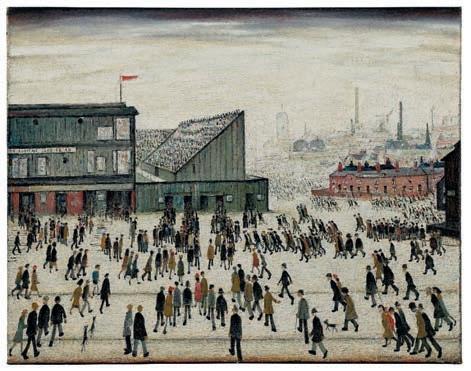
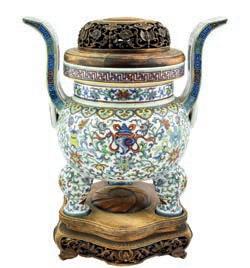

10 Your Letters: Readers respond to requests for energy-saving antiques and there’s a call to go green
12
Around the Houses: A pair of antique nun dolls goes for a song and two watches owned by Peter O’ Toole appear on the rostrum
66 Fair News: A trio of “don’t miss” January events are put in the spotlight
68 Fairs Calendar: All the latest events near you and around the UK

16

Waxing Lyrical: David Harvey gives high praise to a George III lowboy
29 An Auctioneer’s Lot: Once upon a time it was every boy’s dream gift. Charles Hanson unwraps the history of Meccano

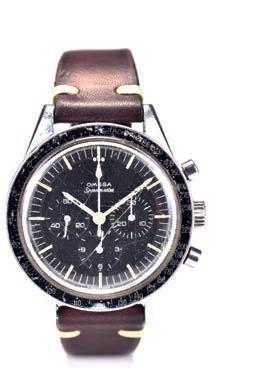
34 Christmas Gift Guide: ere is nothing like a present from the past. We select some of the best

37 Subscription O er: Give the gift that keeps on giving – an annual subscription to Antique Collecting. As well as saving 50 percent on the annual price you, or a pal, receives a free book worth £75
39 Pro le: Behind the scenes with omas Jenner-Fust, the new head of the leading Cheltenham-based auctioneers Chorley’s
Top of the Lots: Get a sneaky peek at some of the treasures going under the hammer in December and January
Market Report: Buying art at auction may not be as simple as you think, Gregor Kleinknecht lifts the lid
Puzzle Pages: Pete Wade-Wright’s festive teasers will have you scratching your head over the Christmas period
Book O ers: Make the most of our last-minute book deals and save more than 33 per cent on the RRP
58 Saleroom Spotlight: A classi ed report of the bombing of Hiroshima goes under the hammer in Derbyshire
70 Auction Calendar: A comprehensive guide to the sales taking place in December and January
74 Marc My Words: Antiques Roadshow’s Marc Allum bids farewell to what has been a troubling year for many, and looks forward to 2023
18 Nuts About: Nothing signals the start of the Christmas holidays like a bowl of nuts. Antique Collecting traces the history of nutcrackers
24 Tri ing A air: Custard cups make charming and elegant collector’s pieces, as well as revealing much about the social and culinary history of the UK, writes Rob Merrills
30 Rolling Stock: Once a schoolboy stalwart, marbles have rolled out of view. Jerry Burley sets the record straight with his collecting guide
40 Fit for a Queen: 2022 will be remembered for the sad death of Queen Elizabeth II. Edward Rycroft looks back on the design classics from the second Elizabethan age
44 Football Focus: With this year’s World Cup well underway we consider the collectability of jerseys – from easy-to- nd replicas to Maradona’s iconic £7.1m shirt
60 Taking an Ince: e little-known partnership of the Georgian furniture makers William Ince and John Mayhew is put in the spotlight by a new book and recent sale
Above e Crimson Drawing Room at Windsor Castle will be decorated in its festive best
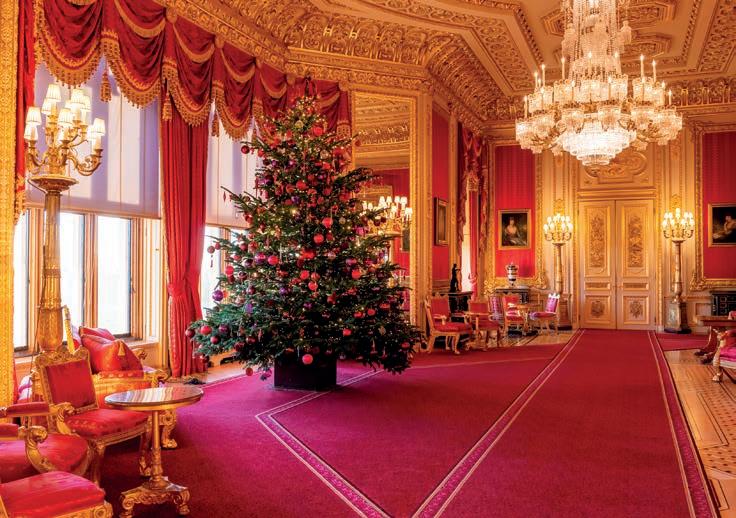

Top right Unidenti ed woman, attributed to Hans Holbein the Elder (c. 1460/65–1524), oil on panel, before 1522. Schroder Collection
A Bath museum has unveiled plans for a major exhibition considering the role of marriage in European Renaissance art.
Painted Love: Renaissance Marriage Portraits, takes place at the Holburne Museum from May 26 to October 1, will capture the broader impact of the union from the intimate to the legal joining of two families.
In addition to paintings, the exhibition will include objects associated with marriage, including love tokens, rings, gifts, and commemorative tableware, as well as written documents and love letters.
With a new King at the helm this year’s festive displays at Windsor Castle and the Palace of Holyroodhouse in Edinburgh promise to be better than ever. Until January 2 visitors to both will be welcomed by resplendent displays, including a 20ft tree in St George’s Hall, grown in nearby Windsor Great Park. Meanwhile, Holyroodhouse will showcase trees in the rone Room and Great Gallery.
Visitors to Windsor Castle on December 8, 9 and 12 can enjoy carols from local choirs in St George’s Hall, while, in Scotland, families visiting the palace on December 17, 22 and 23 can take part in festive arts and crafts activities.
A painting by LS Lowry loved by football fans and art enthusiasts has been bought by e Lowry arts centre in Salford, saving it from going into a private collection.

e centre paid £7.8m for Going to the Match, painted in 1953, at Christie’s at which it had been expected to fetch £5m-£8m.

e Lowry’s chief executive, Julie Fawcett, said: “We believe this iconic artwork must remain on public view, so it can continue to be seen by the broadest possible audiences, for free.”
e painting had been on public view at e Lowry for 22 years, after it was bought in 1999 by the Professional Footballers’ Association (PFA) for some £1.9m.
Right A watercolour by the Welsh-based artist Ken Hayes – one of the artists taking part in Direct from the Artist
Below Lowry’s Going to the Match has gone on show in Salford
Art lovers looking for an original work without breaking the bank this Christmas can bag a bargain with a new scheme from eBay. Its ‘direct from the artist’ scheme allows shoppers to buy artworks without paying expensive gallery commissions or artists’ resale rights.
EBay’s art and antiques manager, Amy Kent, said: “There is something special about buying a piece of original art directly from the artist. Since the pandemic, we’ve seen a real shift towards consumers wanting to shop from smaller, local businesses through our marketplace and art and antiques are no exception to this.”
With prices stretching from £10 and £50, artists taking part in the scheme range from talented hobbyists to graduates from established schools including the University of the Arts London and the Glasgow Art School. As well as benefitting buyers, artists applaud the scheme. Caerphilly-based watercolourist Ken Hayes, said: “I now only sell exclusively on eBay as I’ve had my fill of the greedy high street and online galleries commission rates.”
Work by artists taking part in the scheme are distinguished by a blue tick.
Celebrating events to get antiques and ne art lovers in the festive mood and a look ahead to 2023
A major exhibition on the Flemish artist Peter Paul Rubens (1577–1640) continues at a London gallery until January 28.

Showing more than 40 works, Rubens & Women at the Dulwich Picture Gallery will challenge the assumption Rubens painted only one type of woman. Instead it will consider depictions of the women who nourished his creativity and career – from female patrons to intimate depictions of his two wives, Isabella Brant and Helena Fourment, and his eldest daughter, Clara Serena Rubens.
e work of a group of four artists, inspired by a 1963 black-and-white photograph of the quartet, is celebrated at a London exhibition running until the end of January.
e exhibition, Friends and Relations: Lucian Freud, Francis Bacon, Frank Auerbach, Michael Andrews runs at the Gagosian Grosvenor Hill until January 28, based on a snap of the foursome taken at Wheeler’s restaurant in Soho, London, almost 60 years ago.

e 40 works on show include the artists’ portraits of each other, most echoing their intense friendship and, on occasions, rivalry.
Michael Andrews’ ambitious group portrait e Colony Room I (1962), depicting the friends’ well-frequented Soho drinking haunt, is on loan from Pallant House Gallery, Chichester.
Far left Peter Paul Rubens (1577–1640) e Virgin in Adoration of the Child, c. 1616. KBC Bank, Antwerp, Snijders & Rockox House
Left Peter Paul Rubens (1577–1640) Clara Serena Rubens, the Artist’s Daughter, c. 1620-1623. Private Collection


Right Jan van Huysum (1682-1749), Flowers in a Terracotta Vase, 17361737, © e National Gallery
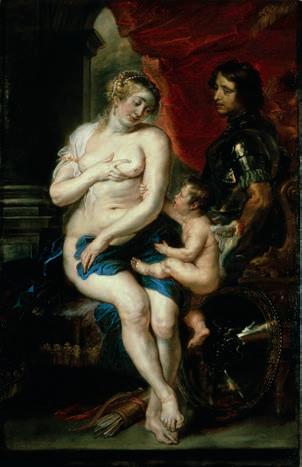
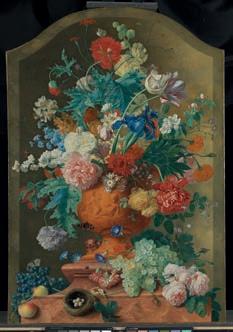
Below left Peter Paul Rubens (1577–1640) Venus, Mars and Cupid, c.1635, courtesy Dulwich Picture Gallery
Far right Ambrosius Bosschaert the Elder (1573-1621) A Still Life of Flowers in a Wan-Li Vase on a Ledge with further Flowers, Shells and a Butter y, 1609-1610, © e National Gallery

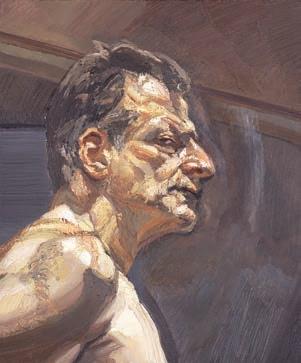
Above right Jan Davidsz. de Heem (1606-1684), Still Life, c. 1664, © e National Gallery

Below Lucien Freud, Re ection (self-portrait) (1922-2011) 1981-1982, © e Lucian Freud Archive, Bridgeman


Flower lovers have until January 15 to visit a Warwickshire exhibition exploring Dutch ower painting from the early 17th to late 18th century.
Compton Verney near Kineton is hosting the show of 10 masterpieces of the genre. Dutch Flowers includes nine works on loan from the National Gallery and another from a private collection.
At the turn of the 17th century, Netherlandish artists, such as Ambrosius Bosschaert the Elder (1573-1621), were among the rst of a group of artists producing paintings exclusively depicting owers, a change sparked by a new societal interest in science, botany and horticulture.

Right Left to right; Timothy Behrens, Lucian Freud, Francis Bacon, Frank Auerbach and Michael Andrews, 1963, © John Deakin/ John Deakin Archive/ Bridgeman Images
(1909-1992)
Head of a Man (self-portrait © Estate of Francis Bacon. All Rights Reserved, DACS 2022
Plans for the first major UK exhibition of arguably the greatest sculptor of all time, Donatello (c.1386-1466) have been revealed.
London’s V&A will stage Donatello: Sculpting the Renaissance from February 11 to June 11, offering a fresh vision of the artist and his impact on cultural and artistic development. It will also showcase works never seen before in the UK.
Donato di Niccolò di Betto Bardi, universally known as Donatello, was born in Florence in 1386 where he died in 1466.
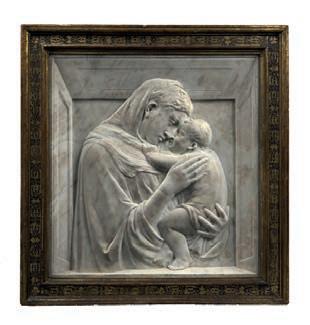
One of the largest polished diamonds in the world, weighing a colossal 303.10 carats is expected to make $15m when it goes under the hammer at Sotheby’s in New York.
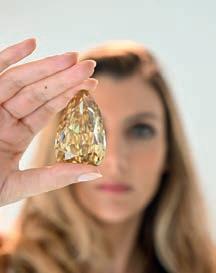
Nicknamed the Yellow Canary, the stone was found in a rubbish pile by a young girl in the Democratic Republic of Congo in the early 1980s after miners discarded it as being too bulky to be diamond-bearing.
e girl gave the stone – which turned out to be 890-carat rough diamond – to her uncle who

A Sta ordshire auction house has opened its third premises – a valuation o ce in Burton-on-Trent. Richard Winterton Auctioneers’ new unit in Burton Market Hall will o er free weekly valuations of jewellery and watches. Would-be consignors are invited to drop in between 10am and 1pm on Mondays for a free valuation of their collectables.
Associate director, Ben Winterton, said: “ e auction market is red hot right now and it’s a brilliant time to pop in and see if you have any hidden treasures tucked away in a drawer.” e new unit is the family rm’s third Sta ordshire premises, joining its headquarters at the Lich eld Auction Centre, Fradley Park and the Tamworth Auction Rooms, which opened in October 2021.
How did you start in the business?

In a very old-fashioned way, as a porter with Bonhams, which was a great way of getting exposed to all departments and understanding the auction process at every level. As my major at university was Chinese language and culture, the Asian art department was always going to be the one for me.
What makes Asian art so exciting?
Working with Asian works of art means you have to take a holistic view of the
sold it to local diamond dealers. It rst appeared in public in 1984 at the Smithsonian’s National Museum of Natural History, displayed alongside the world’s most legendary diamonds. e diamond is set to tour Dubai, Taipei, Hong Kong and Geneva before going under the hammer on December 7.
Above e 303.10-carat Yellow Canary goes under the hammer in December
A 17th-century blue-and-white Chinese jardiniere in which Horace Walpole’s (1717-1797) favourite cat drowned trying to catch a goldfish has gone on show at his former London home.
The porcelain vase was reacquired by Strawberry Hill House in Twickenham, now a museum, after being sold off in the 19th century. The death of Selima was immortalised by Walpole’s friend the poet Thomas Gray in his Ode on the Death of a Favourite Cat, Drowned in a Tub of Gold Fishes (1747).

Below e large 17th-century Chinese porcelain vase has gone on show at Horace Walpole’s former home

subject: you see how patterns and shapes change over time and how they are used across mediums. The drawback is that the field is so vast it is impossible to ever fully master. But, then, this is also its greatest appeal, because you’re never bored.
Have new collectors missed the boat when it comes to Chinese antiques? Early pottery (neolithic, Han Dynasty and some Tang and pre-Tang pieces) is not terribly expensive at the moment. Neither are some export wares, such as Zhangzhou (also known as Swatow) wares, or Bencharong, which is an 18th and 19th-century porcelain made for export to the Thai court. It is hard to say though whether they will see the same rise in prices that other Chinese works of art have seen.
Are any of the skills from the auction word transferable to TV?
I love working on Antiques Roadshow, it is such a welcoming environment and everybody is so passionate about their subject. Behind the scenes is very similar to an old-fashioned auction valuation day, where you sit at a table and look at what the public have brought in, without ever knowing in advance what it will be. When an interesting Asian object appears, I have to stop myself telling its owner everything and save it for the camera.
If I really had to pick one my absolute top pick would be a 15th-century Ngor thangka – a group of paintings on cloth made for the Tibetan Buddhist monastery of Ngor Ewam, which has a specific style with gorgeous brocading and pigment.
Roseberys’ next sale is Modern British and 20th-century art on December 8.
A 6.25 carat emerald ring, salvaged from a 400-year-old shipwreck o the Florida coast goes under the hammer in December with pro ts going to Ukraine.

For 350 years after the Spanish-bound galleon the Nuestra Señora de Atocha sank in 1622, it became the focus of treasure hunters worldwide. In the 1960s, underwater explorers, led by Frank Perdue, salvaged 180,000 coins and 125 bars of gold bullion as well as 70lbs of Columbian emeralds. Perdue mounted one gem on his wife Mitzi’s
engagement ring in 1988. She said: “I have cherished the ring which I now hope will bene t Ukraine.”
Above e emerald ring has a pre-sale estimate of $50,000-$70,000 at Sotheby’s on December 7

Above right Mitzi with Frank Perdue who died in 2005, image courtesy of Sotheby’s
regarded as his masterpiece, St Paul’s Cathedral.

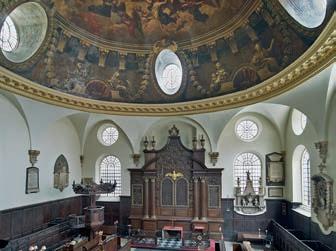

The work of the architect Sir Christopher Wren (1632-1723) is celebrated in a year-long series of events in 2023, marking the tercentenary of his death.
Wren was responsible for rebuilding 51 churches in the City of London after the Great Fire of 1666, including what is
High-tech research into one of Johannes Vermeer’s (1632-1675) most-loved paintings has revealed two hidden objects: a jug holder and a re basket.
Scans of e Mermaid (c. 1660), have revealed a hastily-applied jug holder beneath the milkmaid’s left arm. e same technology revealed a re basket, at the lower right, now painted over, which would have contained glowing coals to keep new-borns warm and dry nappies (Vermeer was a father of 10).
Below Technology has revealed more domestic implements were painted over in Vermeer’s e Milkmaid, image courtesy of the Rijksmuseum
Throughout 2023, Wren’s remaining churches will host a variety of school and community initiatives marking his achievements. For more details go to www. squaremilechurches.co.uk/wren300
Above left St Mary Abchurch, o Cannon Street, one of the churches Wren rebuilt, photo © Angelo Hornak
Above right Godfrey Kneller (1646-1723), Sir Christopher Wren, oil on canvas, 1711


A popular antiques fair has postponed its 2023 date to avoid clashing with the coronation of King Charles III, set to take place on Saturday May 6 with a Bank Holiday on May 8.
The Petworth Park Antiques and Fine Art Fair, due to have taken place over the same weekend, is now scheduled for May 19-21.
Ingrid Nilson, director of the Antiques Dealers Fair Limited, said: “The date change has been most helpfully agreed by the National Trust having been made to avoid taking place on the same weekend as the coronation, or any bank holiday planned.”
Ownership of the fair recently reverted to the ADFL after negotiations with would-be new owners, the Chelsea Antiques and Fine Art Fair, failed.
Above Petworth House and Park in West Sussex will host next year’s fair


An alpine scene by one of the key gures of modernism has gone on display at a London gallery.
e National Gallery acquired its rst painting by Ferdinand Hodler (18531918), called e Kien Valley with the Bluemlisalp massif, painted in 1902. ough not a household name, Hodler was one of Europe’s leading turnof-the-century artists.
A 1,500-year-old solid gold sword pommel, one of the first of its kind found in Scotland, has gone on show in Edinburgh.
National Museums Scotland acquired the garnet-encrusted piece decorated in symbolic and religious motifs, which combines elements from both AngloSaxon England and the kingdoms of early medieval Scotland.
National Museums Scotland senior curator, Dr Alice Blackwell, said: “Gold work from this period is virtually unknown anywhere in the UK. It is a hugely significant archaeological find, revealing more about this fascinating period.”
e alpine scene is unique among his work, as he chose a vertical format for the canvas, exaggerating the steep peaks and the interlacing of the foothills.
While Hodler is well known in his native Switzerland, a reassessment of his work began in the 1970s, as scholars compared his work to Vincent van Gogh and Edvard Munch.
Our star letter receives a copy of British Designer Silver by John Andrew and Derek Styles worth £75. Write to us at Antique Collecting, Sandy Lane, Old Martlesham, Woodbridge, Suffolk, IP12 4SD or email magazine@ accartbooks.com
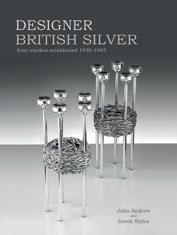
I enjoyed Doug Monroe’s timely request (Your Letters, October issue) for examples of antiques and collectables that save money.

Might I suggest that there is much to be gained by buying from antique and collectable shops, charity stores, antiquarian book dealers and also from second-hand markets, including clothes fairs.
It’s not just about saving money, it’s also about sustainable practices and saving the planet!
Of relevance is the Antiques Are Green Movement which also promotes the concept of re-using the past.
Budding collectors should please note that collecting can also be about putting sustainability into practice.
Ian Spellerberg, by email
I would like to concur with Marc Allum’s last column (Marc My Words, November issue) in which he wrote how living with antiques (albeit in this case on a temporary basis while cataloguing them) gave him a better understanding and appreciation of them.
Readers might not be aware that several dealers, Lorfords in Tetbury springs to mind, o er a ‘try before you buy’ service where you can see how an antique ts into a space before you part with your cash. It was invaluable for us in nding just the right mirror last year.
J Beckett, by email
Left Antiques are both green and economical

Above right Portrait of Samuel Pepys (16331703) whose routine was greatly disrupted by wash days

Below left ‘Try before you buy’ schemes can help you create the ideal look
It was a strange coincidence that while reading Doug Monroe’s plea (Your Letters, October issue) for money-saving devices from the past that I was also re-reading Samuel Pepys’ diary. In it he makes several references to “great wash days”.
While they only took place a few times a year, they required the whole household to be up at 4am, or on some days 2am, and went on well into the night. Never have I been so grateful for my washer tumble drier, never mind the cost.
Joyce Smith, by email
Answers to Christmas quiz on page 54
Q1 (c). There was a commonly-held belief in France the Three Wise Men were welcomed by a goose. Q2 (b). Q3 (b). Sir Roger de Coverley was a fictional character in the early editions of The Spectator after whom a dance was named. He was also mentioned in A Christmas Carol Q4(a). The first Christmas Day swim in Hyde Park’s Serpentine Lake took place in 1864. Q5(c). By allowing a horse and rider to pass through the Sussex pub on Christmas Day the right of way was preserved. In 1995 when the regular horseman was unable to take part, a volunteer rode through the pub on a bicycle. Q6 (b). Kugel made rather heavy glass Christmas tree ornaments from about 1820 to 1890. (McKee specialised in window and bottle glass, while Ensell and Wilson made tableware and, later, bar goods, lamps and candlesticks). Q7 (a). Each is a character in mumming plays for which the poor obtained Christmas charity. Bold Slasher was one of the names of St George, Little Johnny Jack was a beggar, the Doctor was a primitive magician, with Father Christmas acting as a compere. Q8 (c). It was used to collect alms, but mostly to hold mulled and spiced ale or cider. Wassailing has been replaced by carol-singing. Q9 It comes from The Diary of a Nobody by George and Weedon Grossmith, being the diary entry for December 25. Q10 The fictional diarist’s name was Charles Pooter whose socially accident-prone gaffs first appeared in Punch in 1888.
is month’s postbag reveals a snippet from a famous 17th-century diary and praise for antiques’ green credentials



A ‘toadstone’ ring, dated to the 16th or 17th century, sold for £12,500, against an estimate of £3,000-£4,000 at the Essex auctioneer’s sale on November 23.
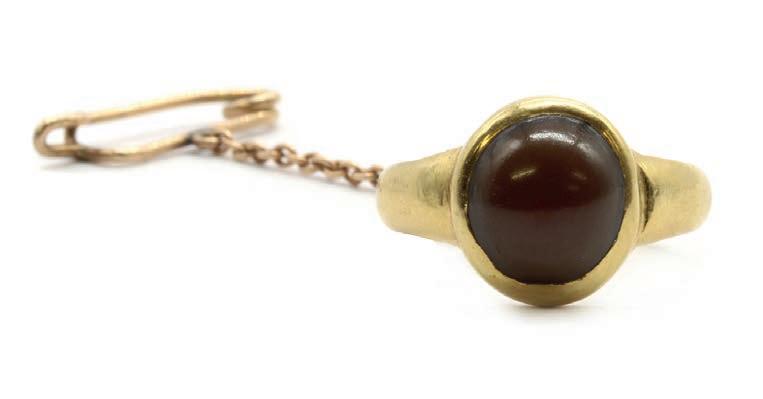
From the Middle Ages to the 18th century, ‘toadstones’ were thought to come from the heads of live toads and were highly prized for their supposed magical properties, in particular as an antidote to poison.
In reality they are the teeth of lepidotes, an extinct genus of ray- nned sh from the Jurassic and Cretaceous periods. Shakespeare references them in As You Like It, writing: “Sweet are the uses of adversity, Which, like the toad, ugly and venomous, Wears yet a precious jewel in his head.”
A Chinese porcelain censer, expected to make £1,000-£1,500, sparked a bidding war between an online bidder and eight telephone lines at the North Yorkshire saleroom’s November 12 sale before selling for £130,000.

e censer, which bears the Qianlong reign mark (1644-1911) and was decorated with a sh, endless knot, heel of law and conch shell, was consigned by a local vendor, and by repute had been in the same family for three generations.
Once part of an altar garniture, the censer is decorated in the doucai style, where the design is painted in blue underglaze before glazing and ring, with coloured overglaze enamels used for the rest of the decoration.

At the same sale an unusually large 19th-century, stained wood artist’s lay gure doubled its pre-sale estimate when it sold for £6,500.

A collection of Jack Daniel’s Tennessee whiskey collected over a decade sold for £6,250 at the Leicestershire auction house’s recent wine and whisky sale. e standout lot was a set of three Scenes from Lynchburg bottlings, which sold for £1,488 against an estimate of £500-£800, while three identical Master Distiller collection bottles in individual presentation tins also exceeded expectations by selling for £806 against an estimate of £150-£200.
Gildings’ director, Will Gilding, said: “ e prices are striking considering the contents of most limitededition bottles are the standard Jack Daniel’s Old No. 7, which you can pick up for under £30 in any UK supermarket.”
Jack Daniel’s is popular among collectors and the oldest distillery in Lynchburg, Tennessee.
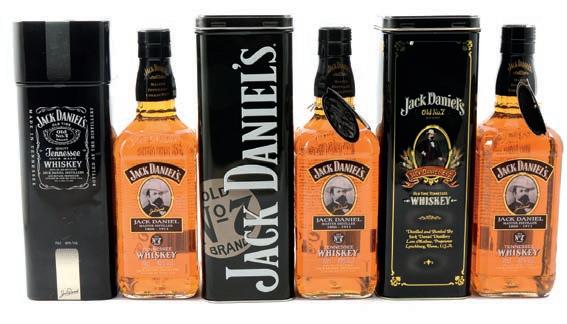
From a Banksy screenprint, to the late Queen’s provisional driving licence, the UK’s
The Qianlong reign censer sparked a nine-way bidding warArtists’
lay figures are highly sought after by collectors
Chiswick Auctions’ silver specialist, John Roger, said: “Irish provincial silver is a well sought-after eld. Dublin is the usual, Cork is scarce with a jump in rarity for Limerick items.”



Two watches owned by the late Hollywood actor Peter O’Toole (1932-2013) sold for a collective £20,300 at the Berkshire auctioneer’s sale on November 17.
The 18ct gold watch was a gift from the Sheik of Saudi Arabia
An atmospheric watercolour of the Cumbrian mountain range the Langdale Pikes scaled its pre-sale guide price of £400-£600 to take £8,200 at the Oxford saleroom’s recent sale.

Painted by the Liverpool-born artist Alfred William Hunt (1830-1896), it was the sale’s topselling lot and signed and dated 1857.
O’Toole

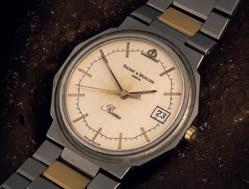

e rst, an Audemars Piguet 18ct yellow gold reference 5548, which sold for £18,000, was given to the actor by the Sheik of Saudi Arabia for his performance in the 1962 lm Lawrence of Arabia e second, which sold for £2,300, was a Baume & Mercier Riviera quartz watch.

e typewriter used to create British sitcom Steptoe and Son sold for eight times its low estimate of £100, fetching £800 at the Derby-based auction house’s London saleroom.
It was owned by scriptwriter and Bafta winner Ray Galton (1930-2018) – a former union worker who succeeded as a writer despite being struck down with tuberculosis aged 18.
Such was the impact of the ground-breaking comedy, featuring a mean and grasping father, and his long-su ering son, Harold, it was remade in the United States as Sanford and Son, in Sweden as Albert & Herbert, in the Netherlands as Stiefbeen en zoon and in South Africa as Snetherswaite and Son.

75th Academy Awards
Encouraged by John Ruskin, Hunt exhibited at the Royal Academy in 1854, and afterwards contributed landscapes in oil and watercolour to London and other provincial exhibitions.
He is especially known for his poetic rendering of atmosphere and extraordinary landscape detail.
Two 18th-century nun dolls sold at the Essex auctioneers for a total of £55,000 hammer, exceeding their combined estimate of £4,000.


At the same sale Queen Elizabeth II’s military provisional driving licence, issued to Princess Elizabeth when she was serving in the Auxiliary Territorial Service (ATS), sold for six times its lower pre-sale guide price of £1,000 when it fetched £6,800.
e 1945 War Department driving permit no.B1232 stated the future monarch had blue eyes, was 5ft 4in tall with light brown hair. Nun dolls acted as instructional tools to teach novices about the order’s speci c rules and dress code. ey were also sent by nuns to their families as keepsakes to show the style of habit, and as rst communion gifts.
Hunt is known for his atmospheric portrayal of landscapes
Silver made in Limerick is highly sought after by collectors
The maker’s mark SJ is flanked by a lion rampant
The typewriter was used to create the iconic comedy series
wore the Baume & Mercier at the
One of the pair of nun dolls which together notched up £55,000
The late Queen’s driving licence was issued when she was aged 18 in the ATS
Her Majesty served in the No. 1 Mechanical Transport Training Centre in Camberley
A poster advertising the 1968 lm, Girl on a Motorcycle, starring Alain Delon and Marianne Faithfull, sold mid-estimate when it fetched £1,900 at the Surrey auction house’s vintage poster sale on November 4.




At the same sale a rare poster for the 1969 lm Moon Zero Two, featuring artwork by renowned artist Tom Chantrell (19162001) more than doubled its low pre-sale guide price when it sold for £480. Chantrell was one of the most famous British illustrators and lm poster artists of the 20th century, noted as the designer of the Style-C poster advertising the 1977 release of Star Wars in British cinemas.
Such is the current popularity of lm posters the auction house is set to increase its number of dedicated sales in 2023.
A screenprint of four tins of Tesco Value tomato soup by the anonymous Bristol-based gra ti artist, Banksy (b. 1975), more than trebled its low estimate of £10,000 at the Kent auctioneer’s recent sale when it fetched £31,000.

Four Soup Cans (Gold and Cream), was signed and numbered 39, from an edition of 54, and accompanied by original receipt and invoice. Banksy’s provocative stencils are among the most iconic and controversial images in Street Art. At the same sale a George III gilt mirror sold for more than 10 times its low pre-sale guide of £300 when it fetched £3,100.
Seven original drawings of cats by Claire Wain (1868-1945), sister of Louis Wain (1860-1939), estimated to make £50-£80, sold for £750 at the Shropshire auction house on November 9. Louis Wain was known for his anthropomorphised pictures of felines; last year his life was portrayed by Benedict Cumberbatch in the lm e Electrical Life of Cats. At the same sale, more than 400 Observer books, ranging in theme from lichens to country houses, sold for £1,000, double their pre-sale estimate.


A cigarette case belonging to the doctor who invented the crash helmet rushed past its low pre-sale estimate of £1,800 when it sold for £2,535.
Pioneering Dr Eric Gardner became a specialist in the complexities of injuries caused by high-speed motor accident after working at the Brooklands racetrack in Surrey while still serving as a GP in a nearby practice.
Seeking to prevent damage before it happened, he developed a helmet of reinforced canvas, strengthened by a shellac coating. His innovative design was rst used to good e ect at the Isle of Man TT races in 1914.
The 1968 film poster sold for £1,900 at the Surrey auction house
Artwork for the sci-fi film was by well-known illustrator Tom Chantrell
In July 2019 Banksy was voted Britain’s favourite artist
The gilt mirror smashed its pre-sale guide price
The cigarette case crashed past its low estimate in the Midlands
The pencil drawings were by Louis Wain’s sister Claire
The well-known educational series sold for £1,000 in Shrewsbury
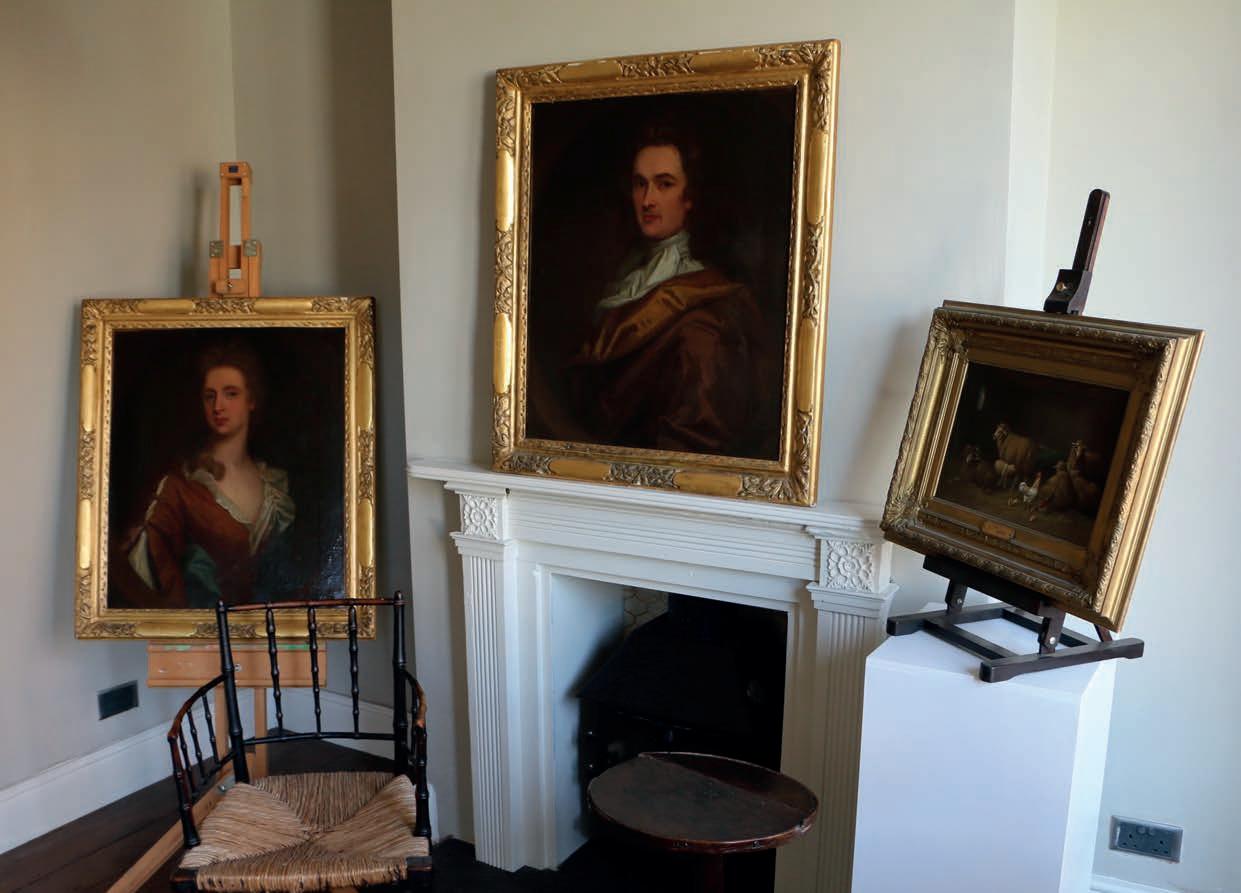




An exquisite Georgian lowboy reveals its 300-year-old secrets to David Harvey



When I rst saw this lowboy I was reminded of the iconic BBC series Lovejoy when Ian McShane, who plays the eponymous antiques dealer, feels the ‘divvy’.
Just as happened to him on countless occasions, the hairs on the back of my neck stood up and I got butter ies in the pit of my stomach because I knew straight away it was something very special.
Despite being dry and dusty, having been used as a dressing table for many decades, it had that unmistakeable feeling of quality to it.
Dating to the reign of George II, around 1730, my conservation
department and I gazed in wonder at it before starting work. en we began gently taking away layers of dust and 'tar' – the lm built up over hundreds of years standing in rooms heated by open coal and wood res, along with tobacco smoke.
We also knew it had spent most of its life in a light room because its walnut veneers had faded. Slowly but surely they came came back to life.
Above David turns detective to get to grips with an outstanding lowboy
Above right Black-andwhite chequer banding is typical of pieces made in Lancashire or Yorkshire
Right Removing the drawers and turning the lowboy upsidedown gives a valuable perspective
Left e walnut veneers soon bounced back
Another thing that became apparent early on was the feather banding, usually seen on pieces of this period, was absent with the maker choosing a black-and-white chequer banding instead.

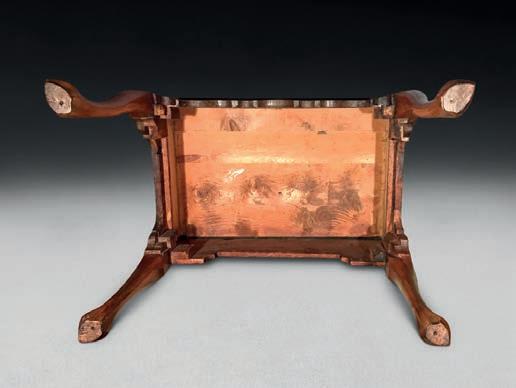
Inlay like this is most often associated with pieces made in Lancashire or Yorkshire, where the tradition of inlaying using contrasting woods was very strong.
is chequer banding continues across the drawer fronts where we can also see what appear to be the original brass handles and backplates. Once we had washed o the dirt we were able to start building up the nish with polishes and waxes. You can see how it all came back to life in the most pleasing way.
I often tell clients to look under a piece as it can reveal as much about the way it was made as the top. In this instance the unpolished surfaces were exactly what I hoped to see.
With the drawers removed it was easy to see the dust board (separating the two small drawers and the full
width drawer) is made of three planks of deal (a softwood from the pine tree) glued together. It is amazing to think that in the 300 years since the lowboy’s construction the wood would hardly ever have seen the light of day. e block work and shaping of the carcass is untouched with the darker areas at the side showing where hands down the centuries held the lowboy to move it for cleaning and dusting.
Holes in the feet are another interesting feature. ey don't mean, as one might have thought, that the lowboy originally had casters. Rather, in order to make the legs the cabinetmaker would have turned four square blocks of walnut on a lathe to form circular columns which were then shaped as cabriole legs with pointed pad feet. e holes show where the original blocks were attached the lathe. e legs’ corner ears are formed by further blocks of shaped walnut.
Right e oak drawer linings are rounded to stop them catching
Below left e legs’ corner ears are made of shaped walnut


Below right e ne sides show the lowboy was designed to be shown o

It is also gratifying to see the neat dovetailing of the oak drawer linings, in contrast to the deal of the carcass. All the drawers' top edges have been rounded to stop them catching and the drawer bottom boards all run from front to back, rather than the later side-to-side method.
We can also see the overlapping edges on the drawers, a forerunner of cockbeading, which shows the transition away from a semi-ovolo moulding around the drawers applied to the carcass.
Even the sides of this lowboy have been nished in ne walnut showing it was not destined to be hidden away where no one could see the sides.
In fact, when I look at this piece in the round, I really can’t see any element which could be improved. It has balance and charm in abundance.
I often wish these pieces could talk. But of course in their own way, they do. In so many little ways they let us know who may have owned them, where they stood and, with ink stains or traces of face powder in a drawer, even how they were used.
In this case a faded appearance suggests a light sunlit room; the choice of expensive burr walnut veneers lets us know it this was made for a wealthy owner; while the chequer banding reveals a possible Lancashire or Yorkshire connection. Heaven knows there were su cient important large homes in both counties at the time. But which one was this made for in 1730?


David Harvey is the owner of Witney-based W R Harvey & Co. (Antiques) Ltd. For more details go to the website www.wrharvey.com
Lowboys originated in 17th-century Europe, where they were a versatile piece of furniture before tallboys (a double chest of drawers, or a wardrobe on a chest of drawers) came into fashion.
Usually taking the form of a dressing table, vanity, or console the lowboy gets its name from its waistlevel height.
Lowboys of the 18th century were often made in oak, walnut, or mahogany and constructed of two or more drawers, with long, intricately-carved cabriole or curved legs, carved knees and clawed or, on occasions, slipper feet.

‘I often wish these pieces could talk to us. But, of course, in their own way, they do. In so many little ways they let us know who may have owned them, where they might have stood and, with their ink stains or traces of face powder in a drawer, even how they were used’
In many UK families, it’s the sign Christmas has nally arrived: the Quality Street next to a copy of the yuletide Radio Times and a bowlful of nuts. But just why has the humble kernel taken centre stage on the festive spread, and why has collecting nutcrackers become so fashionable in recent years?
According to Google Trends, as the boom in vintage continues, searches for nutcrackers have increased by more than 60 per cent in the last ve years, with more than 116,000 Instagram posts about them.

A system to crack a nut has existed since the earliest times man encountered it as valuable food source. While early versions were nothing more than two stones used to crack
Above A nutcracker doll in the shape of a soldier in front of a Christmas tree, image Shutterstock
Below left A lever type brass nutcracker, dated 1746, courtesy of the Arnas Jurskis collection
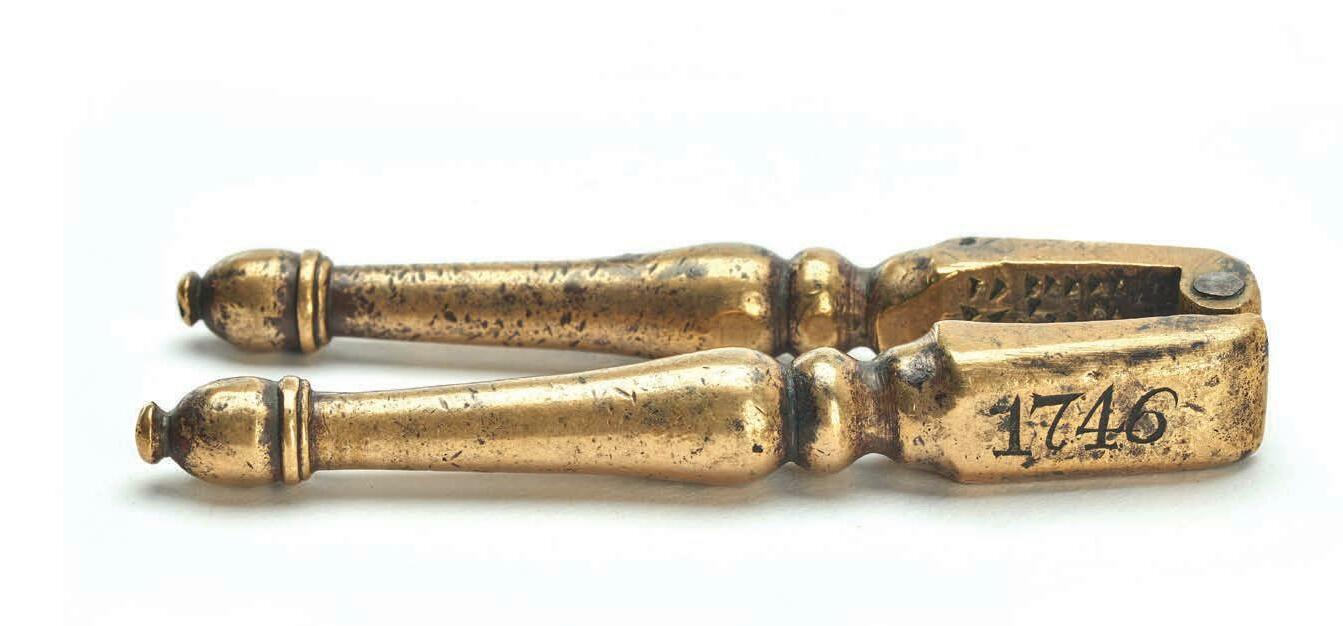

Below right Joos van Cleve (Dutch c.1485–1540) Virgin and Child, 1525, oil on board
the shell, purpose-made lever versions date back as far as Ancient Greece.
Food historian and author Emma Kay, curator of the online Museum of Kitchenalia, said: “It’s probable Romans introduced nutcrackers to Britain. However, there is no Old English word for nutcrackers after the Romans left, although the Anglo Saxons must have used something to break nuts with.”
Nutrition may not have been the Romans’ primary fascination with nuts. e Roman poet Virgil wrote about the good omen of scattering nuts. A productive nut harvest was associated with the birth of more children so nuts became a good luck charm for fertility. A tradition developed for scattering them on the ground at weddings and during the winter holiday of Saturnalia and many other feast days throughout the year.
e idea of nuts as a harbinger of bounty and fertility were given new Christian connotations. From eary times the nuts were characterised in three separate parts and seen as sign of the Trinity. e bitter outer husk representing the esh and Passion of Christ, the shell symbolises the strength of faith and the wood of the cross, while the sweet nut represents Christ’s divine nature.
Nuts’ religious symbolism can be seen in Renaissance representations of the Virgin and Child, such as a painting by the Dutch painter Joos van Cleve (1485-1541), where a halved walnut rests on the ledge in the foreground.
e hazelnut (or “cobill nut” as they were called in the 15th century) also appears in one of the mid 14th-century mystery plays in which one of the shepherds presents hazelnuts to the newborn Jesus.
e various metaphors and associations with Christ therefore make nuts an eminently suitable element for Christmas in general. Whether pagan or Christian, the idea of nuts bringing good luck at Christmastime appears to have stuck.
As nuts’ association with the yuletide grew, many European countries have Saint Nicholas bringing nuts and oranges and other small treats on his feast day on December 5 or 6.
In the Netherlands, the nuts were left in good children’s shoes which had been left out to be lled overnight. In other countries Saint Nicholas arrives carrying a large sack from which he strews the nuts and other treats on the oor for children to scramble after.
“Scrambling for nuts” became a popular game for boys in Elizabethan England and may have been predated by an earlier tradition.
Emma Kay said: “It was once customary to crack nuts as well as bob apples on All Souls Eve. In Scotland and northern England October 31 was once ‘Nutcrack Night’.
Above left Figurative lever action nutcracker with primitive carved facial details, dated 1621. e shape of the handle can serve as a stopper for tamping down tobacco in a pipe, courtesy of the Arnas Jurskis collection


Above Figurative lever type boxwood nutcracker, dated 1681 October 17, courtesy of the Arnas Jurskis collection
Above right Lever type boxwood nutcracker, dated 1751, courtesy of the Arnas Jurskis collection

Right Lever type boxwood gural nutcracker carved to depict Saint Francis of Assisi, dated 1758, courtesy of the Arnas Jurskis collection

Below right Nutcracker, early 15th century, German or South Netherlandish, copper alloy, image courtesy of Metropolitan Museum of Art

Wooden nutcrackers were first mentioned in Chaucer’s The Canterbury Tales (from 1387 and 1400) and a pair was reportedly given to Anne Boleyn by King Henry VIII.
Kay continued: “Nutcrackers officially appear in custom import accounts entering London from the 15th century and they were sometimes spelt ‘notcrakkers’ or ‘notte crakkers’.”
Nutcrackers developed into three designs: squeezing between legs (sometimes called a lever type), screw press designs, and percussion or hammering types.
“After being shelled and cracked, nuts would also be thrown on the re to determine how a courtship might progress - if the nuts jumped apart in the ames, it would be a turbulent relationship, if they simmered and burnt together all would be smooth.”
But it was in the immediate postwar period that the nutcracker became part of the American Christmas tradition. German folklore had for centuries embraced the tradition of giving a wooden nutcracker in the form of a soldier or some other erce authority gure as a way of keeping loved ones safe from harm.
‘A productive nut harvest was associated with the birth of children, so nuts became a good luck charm for fertility. A tradition developed for scattering them on the ground at weddings and during the winter holiday of Saturnalia’
Since the 15th century, German woodcarvers have been creating nutcrackers, or nutcracker dolls, known by the German word Nussknacke. While early figures resembled birds or animals, later versions were modelled on soldiers, knights or kings.
From the late 17th century, makers in the Ore Mountain region, or Erzgebirge in English, along the Czech-German border became most known for their handiwork. Formerly known for the mining of precious metals, during the 17th century, silver deposits ran out, and the former miners turned to woodworking to survive.
In 1870, Wilhelm Friedrich Füchtner, known as the “father of the nutcracker”, established a company to mass-produce Christmas nutcrackers using a lathe, selling his nutcrackers around Europe.
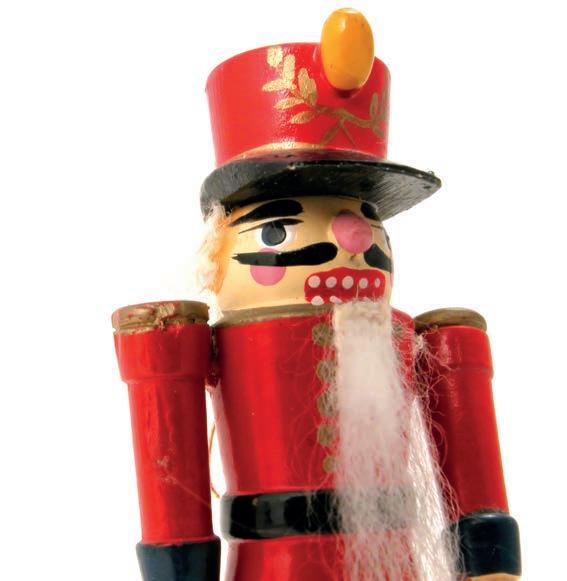
Another well-known maker was the Steinbach family which had made its fortune mining, but whose legacy is in nutcrackers. The firm sold the festive dolls at Christmas markets around Germany, soon expanding its sale territory into nearby Russia, Poland, and Norway.
The Groden valley region of Italy was also a wellknown site for the production of nutcrackers as far back as the 1700s. Most nutcrackers made here were figural nutcrackers that were carved and painted.
Above left A traditional German nutcracker, image Shutterstock
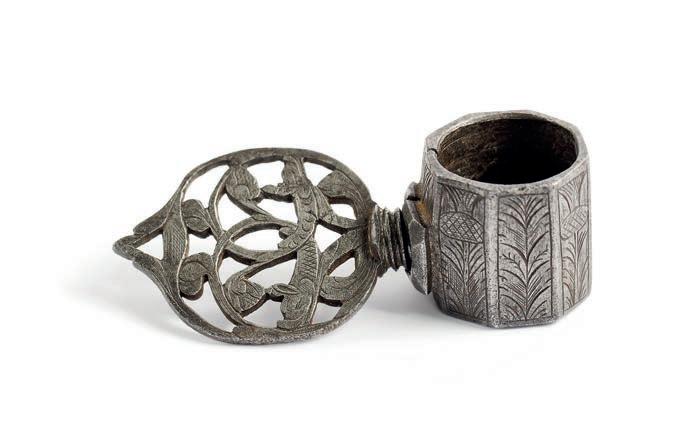
Above right Dated 1668 omas Middleton, this screw metal nutcracker is the oldest known dated version in the world, courtesy of the Arnas Jurskis collection


Right Donetsk Opera dancers perform e Nutcracker ballet in Lugansk, image Shutterstock
Below Dated 1671, a lever type boxwood nutcracker, courtesy of the Arnas Jurskis collection
It became popular for GIs stationed in Germany to buy nutcrackers, fashioned as soldiers at the country’s traditional Christmas markets to give as gifts for their families back home.
Aside from their religious and Christmas connotations nuts were, for centuries, also an a ordable and nutritious food source for the masses.
In 16th-century London vendors called ‘nutcrackers’ were responsible for selling apples and pears, as well as nuts, to theatre audiences, cracking the shell before handing them over to customers.
Kay continued: “Nutcrackers in those days would have been wooden but, by the 1700s, brass and steel nutcrackers were circulating in England.”
Screw-action nutcrackers, typically carved in boxwood or fruitwood, were popular throughout much of the 17th century, but were superseded at the end of the Stuart period by those based on the lever principle.
By the 1800s, nutcrackers had increased in value
The Christmas nutcracker soon became the subject of songs, dances, and folk tales. In 1816, German author Ernst Hoffman published a gothic fairy tale titled The Nutcracker and the Mouse King, about a seven-yearold girl, Marie, and a nutcracker.
After battling the seven-headed mouse king, the nutcracker transforms into a young man and takes the young girl, then his bride, to his doll kingdom.
In 1845, the French author Alexandre Dumas adapted Hoffman’s novel into The Story of a Nutcracker, changing the girl’s name to Clara.
considerably as fruit and nuts started to appear on the dining tables of the well heeled who preferred nutcrackers to be either silver plated as well as solid silver. Kay said: “ ere are numerous examples of domestic thefts of these types of nutcrackers in court reports through the 19th century.”
By the turn of the 20th century they had mostly become cast iron, then nickel plated and chromed.
Prices for the majority of later nutcrackers can be very reasonable, with boxed sets in perfect condition relatively cheap – although the ones including matching nutpicks are more expensive.
More ornate versions are more difficult to find and are accordingly dearer, with the most expensive being the silver-plated ones in perfect condition.
Look for good quality nutcrackers with decorative bodies, forms, and working parts. Nut residue, depressions in the nutcracker showing signs of use, and authentic designs will help you date your nutcracker collectables.
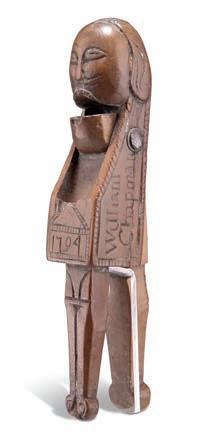
A fruitwood nutcracker from 1704, expected to make £1,500-£2,000, sold for £6,000 at the Yorkshire auctioneers Elstob & Elstob in April.
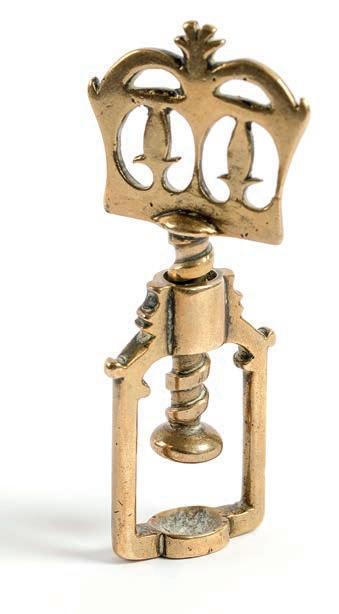
As with many of the most desirable treen works of art, this piece it is both named and dated –adding a sense of time and place to form and patination. To the side is the name of the owner William Chapman and to the front the date 1704.
In 1892, Russian composer Pyotr Tchaikovsky debuted his ballet The Nutcracker, based on Dumas’ adaptation and set on Christmas Eve.
While the ballet was not an initial success in Russia, another powerful association between nutcrackers and Christmas was forged.
Tchaikovsky’s ballet had a second life in America in the 1940s when Disney animated its 1940 film Fantasia to the The Nutcracker’s score.
While the San Francisco Ballet gave the first US performance of The Nutcracker in 1944, many credit George Ballanchine’s production by the New York City Ballet in 1954 as the performance that put the ballet on the theatrical map.
Overnight The Nutcracker, with its secular celebration of all things festive, became a seasonal American stalwart and replicated as an annual tradition.
Above right A fruitwood nutcracker, dated to 1704, sold for £6,000 in April, image courtesy of Elstob & Elstob
Above far left Dated 1676, the oldest known dated brass screw action nutcracker in the world, courtesy of the Arnas Jurskis collection
Above left A table standing gurative lever-action nutcracker with the carved head of a classical bearded gure, dated 1572, the oldest dated wooden lever type gural nutcracker in the Arnas Jurskis collection
Left Vladimir Makovsky (1846-1920), illustration from e Nutcracker and the Mouse King by ETA. Ho man


Right A screw type boxwood nutcracker, dated 1795, courtesy of the Arnas Jurskis collection
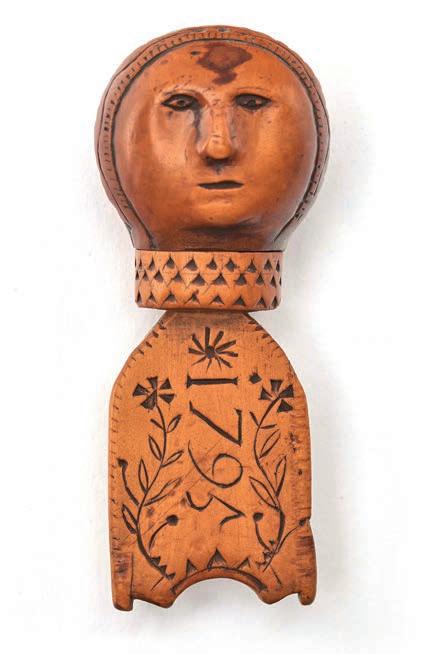
Lithuanian businessman and author Arnas Jurskis has built up the world’s largest collection of nutcrackers. He explains why he is crackers about them

AMy father had a decent postage stamp collection. From early childhood, I enjoyed watching him patiently build it up.

When I was five or six, I started collecting empty cans, beer pads and bottle cups –everything that was free since, obviously, I had no money at that time. However, I was very curious as a child.
Growing up, my curiosity never quite disappeared. And then nutcrackers appeared.

AToday the collection consists of more than 10,000 nutcrackers from 47 different countries around the world. This collection was recognised by Guinness World Records as the biggest nutcrackers collection in the world. The record was confirmed on the July 23, 2021.
ACurrently the only other collection I have is of paintings by the Lithuanian painter Adomas Galdikas (1893-1969). Galdikas is one of the most famous and innovative Lithuanian artists of the first half of the 20th century. However for a long time he was ignored by art critics.
During the inter-war period few people understood Galdikas’ painting in Lithuania with only European art critics appreciatng his work. I am delighted to own 300 of his works.
AMy mother Ramunė and I started to seek out nutcrackers at fairs and markets and later at online auctions and via other collectors.
ALuckily, nutcrackers are not expensive. The prices of the rarest pieces go to £10,000-£20,000. I constantly have to remind myself how lucky I am to collect nutcrackers, with the possibility of being able to buy some of the finest pieces in the world. This would not be possible if I were collecting vases or coins.
AI am fascinated by 16th-18thcentury nutcrackers. They reveal so much about the history of the day and were usually very well made as they were often given as presents.
ASpecialise as early as possible, don’t try to buy everything.
Jurskis’ book Dated Nutcrackers XVIXVIII Century is available to buy at www.nutcrackers.lt with another due to be published early next year.

Below Arnas is o cially the owner of the world’s largest nutcracker collection
AI bought my first nutcracker in London, at an auction 20 years ago. At first, I bought it just out of curiosity. Later, when I started learning about its history it caught my interest.
It turned out the nutcracker was in the shape of London Bridge. Apparently in 1832 when the bridge was demolished, local craftsmen divided parts of its 850-year-old foundations among themselves.
One such was a Mr Ovenston who carved the nutcracker using the oak and iron parts of the demolished bridge. I was so fascinated that I began looking for other interesting examples all over the world.
AAfter the purchase of my first nutcracker, it sparked an interest to discover more about them. The collection I have today was built up over 20 years.
As time passed, we began to collect rarer pieces and gradually the collection began to take on a more specific, systematic character, focusing on rare and more refined items.
The collection’s oldest metal and wooden nutcrackers date from the 15th century. We also have some of the world’s oldest dated nutcrackers, the oldest of which – a wooden sculped nutcracker –dates back to 1572.
The oldest wooden nutcrackers in my collection have been subjected to special radiocarbon studies to determine their age. It gives the collector such pride to secure a one-of-a-kind object, which is not only beautiful to look at but also historically significant and an insight into the 16th-century way of life.
Bottom He is also the author of Dated Nutcrackers XVI-XVIII Century
QHow and when did you get the collecting bug?
Q Why nutcrackers? What was your first purchase?
QHow long did it take you to build up the collection?
QHow many nutcrackers are currently in your collection?
QDo you collect anything else?
QWhere do you find items to buy?
Q What’s the most you ever spent on an item for your collection?
Q Is there one item you are still looking for?
Q What advice would you give a young collector?
‘The oldest nutcrackers in my collection have been subjected to radiocarbon studies to determine their age. It gives the collector so much pride to secure a one-of-a-kind object which is not only beautiful but gives an insight into the 16th-century way of life’
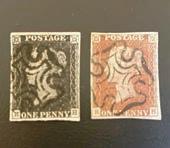


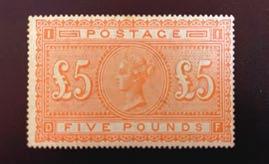






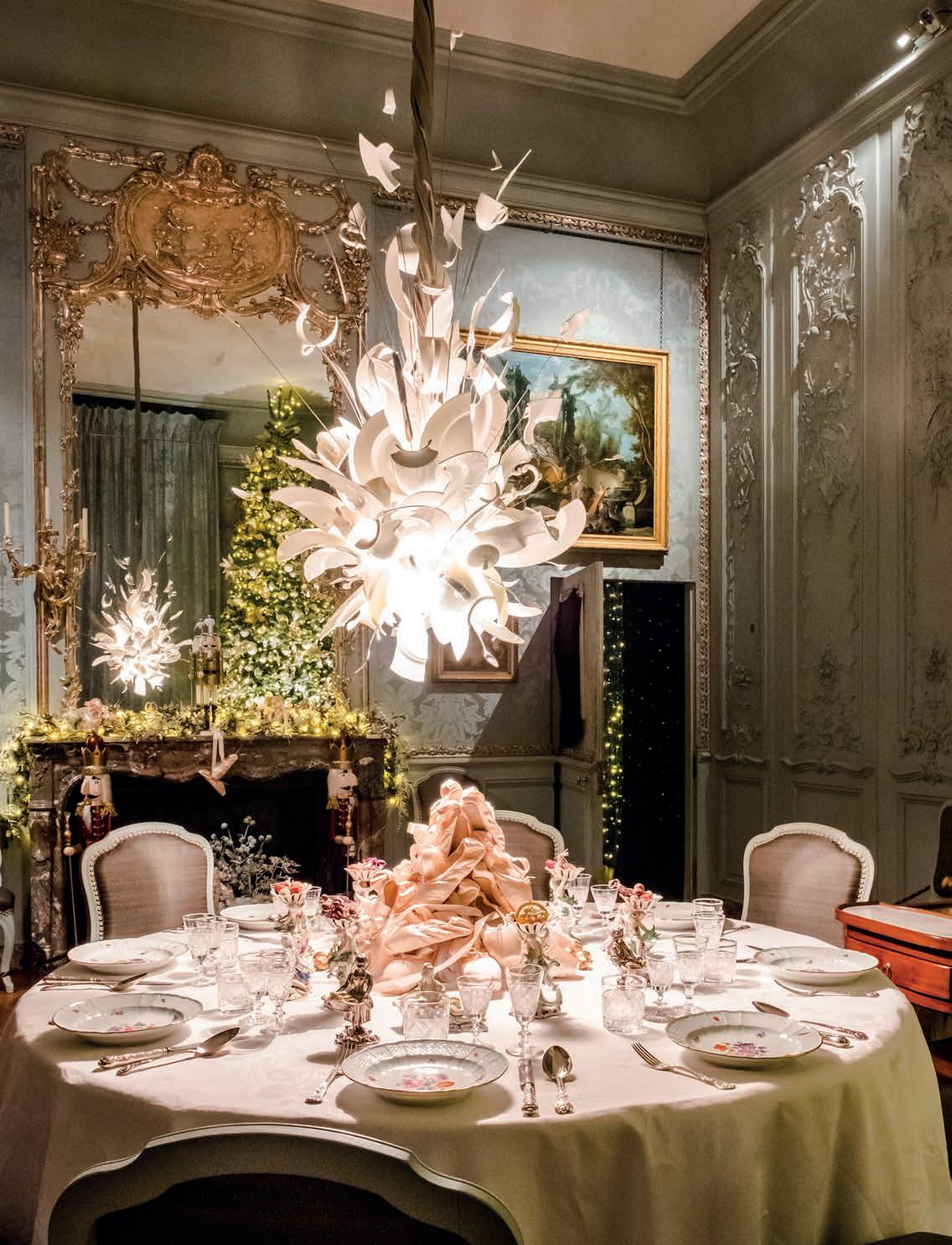
The most English of puddings it may be, but custard’s history is steeped in controversy, much of it concerning the French and their versions of the yellow nectar. Initially in the UK, ‘custard’ was taken to mean anything – sweet or savoury – eaten out of a small pastry case, for which the original French term was (and still is) croustarde. at word literally meaning the crust of a pie or an.
In medieval times, such croustardes could contain a wide variety of foodstu s; sh stews, meat dishes, even hotly-spiced preparations referred to as ‘curys’ (just the one ‘r’ in the vernacular of the day).
On this side of the channel it was the sweeter elements of the dish which most appealed to the British palate. Preparations made of sugar, milk, egg and vanilla became known as crème anglais. It was however – given the historic enmity between the two nations – unpopular to put a French label on an originally English concoction and the name reverted to croustardes, or later, the more pronounceable, custard.
at Waddesdon, © Waddesdon, a Rothschild House & Gardens. Photo Peter Greenway. For details on visiting the Buckinghamshire house this Christmas go to www.waddesdon.org.uk
Above Sèvres manufactory pot à jus, 1771, soft-paste porcelain, image courtesy of the Metropolitan Museum of Art

Above right A French porcelain lidded custard cup, 1815-1830, image courtesy of the Metropolitan Museum of Art




Left A set of six Regency Waterford custard cups, c.1825, on a glass tazza, on sale from Scottish Antiques, priced £300
Fast forward to 1577 where we nd e Garden custard.” e prediction became the rst reference to the pudding in English literature, after which there was no looking back.

A few short years later we nd it mentioned in Tobias Venner’s A Philosophical Discourse of All ings by Way Of Nourishments which warns “How great therefore is the error of eating custards in the middle or at the end of meales”, the reason being it may: “breede more plenty of phlegmaticke and excrementall humours.”
But what, by then, was the constitution of the custard referred to after being both adulterated and anglicised?
e rst recipe, as such, for custard suggests that it should be made from separated whey rather than whole milk, and seasoned with salt, sugar, cinnamon, cloves, mace and a little nutmeg. omas Dawson’s 16th century recipe for custard states: To make a Custard. Breake your egges into a bowle, and put your Creame into another bowle, and streine your egges into the creame, and put in sa ron, cloues and mace, and a litle synamom and ginger, and if you will, some suger and butter, and season it with salt, and melt your butter, and stirre it with the ladle a good while, and dubbe your Custard with dates or currants.
Not to be confused with custard, there was a growing appetite in 16th-century England for syllabub.
‘Given the historic emnity between the two nations it was unpopular to put a French label on an originally English concoction and the name reverted to croustardes, or later, custard’
Still popular today, originally milk was sweetened and mixed with cider sack – a sweet forti ed beer not unlike sherry – and left to curdle and treated as a drink served hot or cold.
in the 17th century, milk and ale were replaced with cream and wine. e word derives from Sille, an area in the Champagne region of France and ‘bub’, an Elizabethan slang word meaning a bubbling drink.
As you tuck into the Christmas tri e spare a moment to consider the history of that most British dessert – custard – and its cups. Rob Merrills reports
In 1608, Francis Beaumont and John Fletcher published their tragicomedy Philaster, or Loves Lies A-bleeding, in which a crowd of townsfolk is noted as being “dearly beloved of spiced cake and custard”, and thus the noble dessert sauce makes its rst appearance on the stage.
50 years later it was such a rm favourite Samuel Pepys recorded in his diary on August 29, 1666: “We parted, and I home, and there nd Mrs. Mary Batelier, and she dined with us; and thence I took them to Islington, and there eat a custard; and so back to Moor elds.”
Across the channel a century later, while the French continued to prefer their plateless croustardes, dining was becoming ever more opulent.
Following the extravagant lead set by the courts of kings Louis – the epitome of brash, ostentatious excess –a largesse was seen on the dining table as elsewhere.
e driver for the manufacture of ne porcelain became, in no small part, the demand for dinner services of the very highest quality. It was not just a matter of quality, prevailing tastes demanded an eye-boggling number of pieces making up a French 18th-century dinner service.
As the 18th century went on, English porcelain manufacture began to improve.
Very soon the nation’s great and good were happy to avail themselves of locally-manufactured dinner services, and homegrown custard cups took their place at table.
Soon services from Sèvres, Chantilly, St Cloud and the like were usurped by Worcester, Caughley, Bow, Chelsea and Derby – all of which were more than happy to add their marks to small, lidded pots, safe in the (albeit erroneous) certainty they were for the consumption of stout, sugary English custard, rather than anything of a suspiciously Gallic nature.
Left Custard in all its glory traces its culinary history in the UK to the 15th century, image Shutterstock

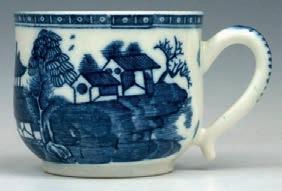
Bottom left A Caughley blue and white English custard cup, c. 1780s, image courtesy of Scottish Antiques
1 A set of six Regency Waterford custard cups, c. 1825, on sale from Scottish Antiques priced £300
2 A nely-engraved Waterford Regency custard cup, one of a set of six, the set is on sale from Scottish Antiques priced £300




3 A set of eight gadrooned Regency custard cups, c. 1830, on sale from Scottish Antiques priced £290
4 e underneath of a gadrooned custard cup from a set of eight, on sale from Scottish Antiques priced £290
One item essential to such services, and taking centre stage at any banquet, were small pots about the size of a co ee can, but with a handle and a tted (but unattached) lid. ese were known as ‘pot à jus’ and speci cally designed for serving consommé or bouillon – sh or meat stocks that were tantamount to soup starters.
Such dishes were richly avoured, reduced from cooking juices and, if they were allowed to cool, would become gelatinous and rather unappetising, very like aspic. is unwanted jellifaction was the reason for the lids which were intended to keep the contents at a serviceable temperature to maintain liquidity.
e jus, if one chose, could be eaten with a spoon, but it was considered quite acceptable to pick your pot up by its handle and drink the contents down directly. Mechanics aside, by 1730 they were a staple part of the re ned French dining experience.
On this side of the channel, unsurprisingly, culture, delicacy and propriety were struggling to gain a foothold.
British porcelain manufacturing in the rst part of the 18th century was unable to match the standard of continental production and, as a result, a great many sets of French tableware were imported for the use of England’s nascent middle classes, who had been dragged up from the gutter (not always metaphorically) by the momentum of the Industrial Revolution. ey were, none-the-less, keen to showcase their spending power.
Sta at England’s country estates and well-to-do town houses would unpack tea-chests laden with ne French porcelain, set out the contents by course and usage, only to be perplexed by little sets of lidded pots with handles.
Consommé, bouillon, jus de viande – call it what you will – had not yet made it into the English lexicon.
Indigenous soups, such as they were, were consumed perfectly adequately from standard bowls. e mysterious pots, as far as the vulgar English were concerned, were quite literally neither use nor ornament.
e bemusement didn’t last long. With an impressive disregard for their original use, the English repurposed the pot à jus, and christened them ‘custard cups’.
In one fell swoop they had been relegated from a starring role in the opening course of the ne dining experience to a place in the round of sweet desserts at the opposite end of proceedings.
Curiously, there was one other notable centre for the production of lidded pots – Sweden. Towards the latter part of the 18th century, the Swedish empire, which had once controlled the entire Baltic Sea and its environs, was in terminal decline, its borders assailed from all angles.
In a bid to bolster its dwindling reputation the Swedish royal court embraced every aspect of aristocratic pretention. Porcelain production being reloated from France was actively encouraged, with master ceramicists from France, and manufactories such as those at Marieberg, turning out high-end dining services –including small lidded pots, in the French style.
e game-loving Swedes were far more familiar with rich soups, even more gelatinous than the original dishes at Versailles and, as a consequence these Scandinavian pots à jus were to become known as jelly cups – further muddying the waters when it comes to clarity of de nition and derivation some 250 years later.
e Regency period saw the emergence of exquisitelyworked glassware as the material of choice for well-to-do dinner services.
Left English custard cup with applied loop handle, top-down with ribbon nish, conical foot with polished pontil, 72mm in height, c. 1810, image courtesy of Scottish Antiques

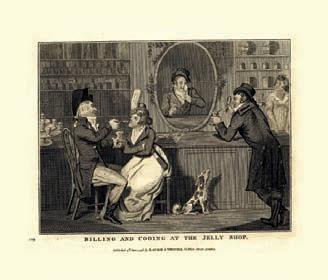
Right Billing and cooing at the jelly shop, etching 1798, photo credit creative commons © e Trustees of the British Museum

Below right After John Collet, e Pretty Bar Maid, 1778, showing an elderly o cer eating from a custard cup, photo credit creative commons © e Trustees of the British Museum
Later Georgian custard cups, and syllabubs, were predominantly made from clear glass, with their brightly coloured confections drawing gasps of admiration from diners. Jelly glasses (jelly being another popular dessert of the time) were mostly conical or bell-shaped funnel bowls, with short stems and a high, domed or conical foot.
Custard cups were shorter with bucket or cupshaped bowls and handles. ey also tended to be of more recent vintage than jelly glasses, dating from the early part of the 19th century onwards, although earlier examples dating back to around 1760 have been catalogued.
For the most part Victorian custard cups were a straightforward evolution of their Georgian forebears and, as such, have little to distinguish them other than the advent of some typically amboyant decorative twists and turns.
Advances in glass production meant it was possible to make dazzling dinner services from it – far outstripping the immediate visual impact of porcelain.
So, by the time custard cups got their second wind in the 19th century, and later, they were generally made of glass and more properly known as syllabubs.
Crucially, syllabubs were served cold or even chilled, so there was no need whatsoever for the little lids, which had characterised rst-generation custard cups.
Victorian custard e best culinary guide to the era is Eliza Acton and Sarah Hale’s 1845 book: Modern Cookery In All Its Branches: Reduced to a System of Easy Practice, for the Use of Private Families.
First and foremost is its recipe of ‘ e Queen’s Custard’, made up of a dozen fresh egg yolks, three ounces of sugar, a pinch of salt and a pint and a half of cream with the addition of ‘noyeau, maraschino or cuirrasseau’ (almond, cherry or orange avouring).
In the same book currant custard demands a pint of currant juice, 10 ounces of sugar and half a pint of cream; sharpened up with a couple of tablespoons of lemon-juice.
Rob Merrills is a specialist at Scottish Antiques based in the Pantiles Arcade, Tunbridge Wells. e dealership, chaired by Eric Knowles, also stages a number of events over the year with Christmas talks set to include Antiques Roadshow’s Mark Hill and Richard Price. To nd out more go to www.scottishantiques.com
‘With an impressive disregard for their original use, the English repurposed the pot à jus and christened them “custard cups”’



Meccano for decades topped every boy’s Christmas wish list. Charles Hanson discovers an unopened set from 1936 in a loft
Christmas is a time for nostalgia, family and festive memories and every year something emerges for sale that tugs at the heartstrings.
Christmas is also, of course, a time for toys to shine and Hansons has witnessed remarkable growth in this sector in recent years, again fuelled by nostalgia from the Baby Boomers and later.

Dolls, teddies, railwayana, Dinky and Corgi vehicles and, more recently, gaming and Pokémon items are all in hot demand.
We all remember the excitement of waking up on Christmas morning wondering what Santa had delivered. One long-dreamt of gift for thousands of young boys (and some young girls) was Meccano.
We recently discovered an unopened Christmas present from the 1930s and, melting hearts across the nation, it went viral on Twitter. e 1936 Meccano Engineering For Boys boxed gift was uncovered in the West Midlands by toy valuer Steve Fulford. e toy was untouched and still in its original festive wrapping paper.
Above Charles Hanson on the rostrum selling an early Christmas tree
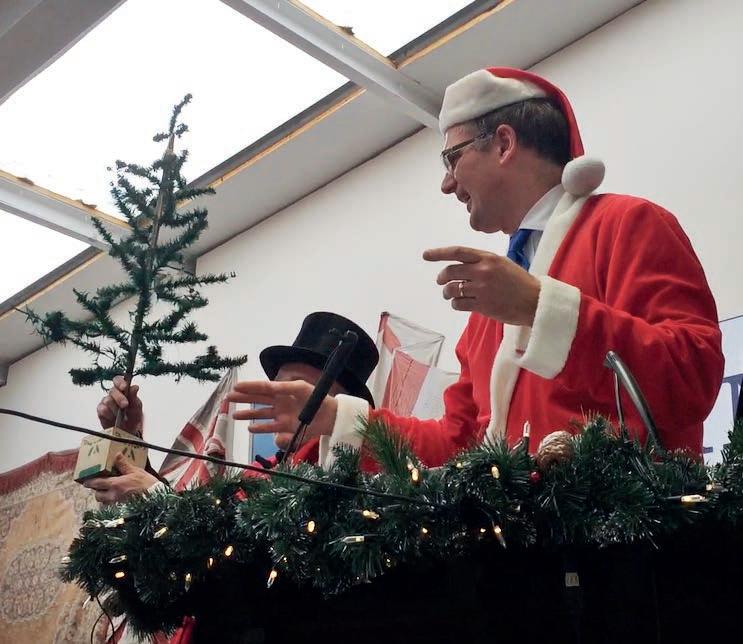
Below e popular set was found it its original wrapping paper
For children brought up before and after WWII, Meccano needs no introduction. During the 1920s and 1930s Meccano Ltd was the biggest toy manufacturer in Britain, with manufacturing bases in Argentina, France, Germany, the USA and Spain.

It was invented by the legendary toy designer, Liverpool-born Frank Hornby (1863-1936), a bookkeeper who was good with his hands and sought a diversion from his pro t and loss ledgers.
To amuse his two young sons, Roland and Douglas, he came up with a toy crane made out of perforated metal strips held together with nuts and bolts. e crane could be dismantled and the parts used to make di erent models. Hornby saw a future for this versatile toy and set to work producing it for the mass market.
e toy was patented on January 9, 1901 as ‘Mechanics Made Easy’, with the rst sets going on sale a year later containing 16 parts, and instructions for making 12 di erent models. It became known as Meccano in 1907 and went on to take the toy world by storm.
By 1922 Meccano kits of various sizes and costs were available. At its peak the Meccano system consisted of more than 300 pieces.
e vendor of this particular set discovered the stillwrapped Christmas gift while emptying the loft, becoming the rst person to open it for more than 80 years.
At auction, the Meccano soared to £250 from an estimate of £30-£40. Perhaps Santa nally delivered it to a little boy at Christmas. I hope so.
Of course presents are not the only festive o ering that nds its way into the loft. In 2019, we unearthed an arti cial Christmas tree which had spent 24 years in the attic before selling to an international buyer for £150 having been purchased at Woolworths in Dundee in 1937 for the equivalent of 6p. Quite the Christmas miracle.
In the same vein, I would like to wish you and yours all the best for a wonderful Christmas and peaceful new year. To arrrange a free valuation of your loft nds email charles@hansonsauctioneers.co.uk
1922 Meccano kits of various sizes and costs were available. At its peak the Meccano system consisted of more than 300 pieces and inspired a generation of boys to take up technical careers’
‘By
Discovering a long-lost marble sparked a collecting passion for Jerry Burley. A favourite Christmas present from a bygone era, he becomes glassy eyed at the memories



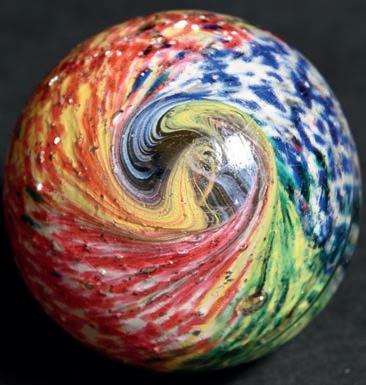



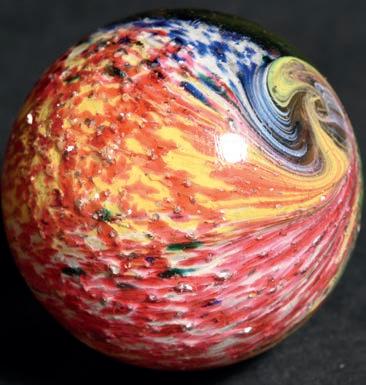

Picture the scene: a wintry playground at Portsmouth Grammar School many years ago. Four lads are deeply immersed in the technicalities of a playground game, watching intently as one lobs a small glass sphere aimed at another.
e year is 1947, the war is over and that small boy is Je Burley, my father. e shooter marble he throws out time and again had been his father’s before him and, as he told me many years ago when he gave me his marble set, possibly his grandfather’s, too.
In the time-honoured tradition, I subsequently took over their ownership. But, as happens to marbles over time, they became too careworn to use, or lost, with only one – my jumbo – remaining.
After my schoolyard days drew to a close, the marble was returned to my dad’s care and 45 years later, as I was clearing the house out following his recent death, the old marble again rolled lumpily out of a Cuban cigar box that had been its home for decades.
Still battered and chipped through generations of use: it looked like it was at the end of the line. But thanks to the hard work of a glass repairer in Rochester my family relic, which survived umpteen playground bashings and two world wars, was returned to me.
Who cares that the pontils have been ground o ? Isn’t that what antiques are all about? We are only ever custodians for future generations and that is the case here. Only a glass marble, probably costing a penny or two when it was made, but it now has its own story to tell, as well as that of the whole genre of toys to which it belongs. I was determined to nd out more.
‘45 years later, as I was clearing the house out following his recent death, the old marble again rolled lumpily out of a Cuban cigar box that had been its home for decades’
Opposite page Various views of four-panel marble, c. 1875, the silver sparkly bits in the glass are mica akes, 1.6in diameter, highly sought after valued around £1,600, image courtesy of Collectible Marbles
Left Various cane or ‘cullet’ droplets, dug up from the Lauscha German production site. While never intended for sale, they are now highly collectable, image courtesy of Collectible Marbles
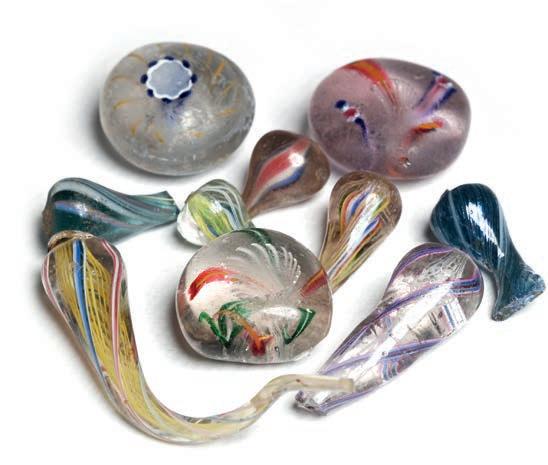
Right A rare pink swirl lutz marble set a record at auction for a marble less than 1in in diameter when it sold for $25,800 in 2012, image courtesy of Morphy Auctions
Below left e battered jumbo marble had been in Jerry’s family for generations
Below right A group of sought-after ‘Joseph’s coat’ marbles of varying values, image courtesy of Collectible Marbles
While condition and the various grades thereof are relatively inarguable, values are more subjective. Condition is measured on a scale. A 9.8 or 9.9 marble (out of an unattainable maximum of 10) would be an excellent-condition jumbo, with black or pink colours (the two rarest). It would likely command well in excess of £1,000 at 2022 prices and, at the right auction, much more – possibly tacking an extra zero on the end of that price.
At the other end of the scale, an average mid-9 peewee, the least rare marble, in common colours would set you back £5-£10 at an antique fair or from a dealer or auction site.
at said, it means a mahogany Victorian peewee solitaire board is still going to be worth around £150 minimum when equipped with the standard 32 marbles for its 33-hole base.
Pink is a rare marble colour, and many collectors had their eye on this pink swirl lutz marble (above) when it set an auction record at Morphy Auctions in Pennsylvania for a marble less than 1in in diameter when it sold for $25,800 in 2012.
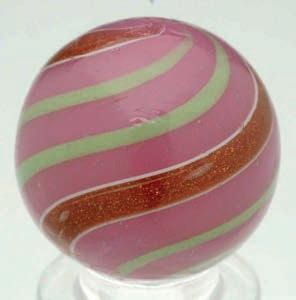
A reminder that Americans are bigger fans of marbles than us Europeans.

Toy marbles, in one form or another, have been around for nearly as long as mankind has – the Aztecs, the ancient Egyptians and before them the Neanderthals all left evidence of their using small mud, pottery or stone balls for sport and recreation.

ey are, after all, just another variation on a ball. It should be noted there is no such thing as an o cial, structured game of marbles; everyone plays to their own rules and using whatever surroundings they have available as a pitch or course.
Over time, glass became the preferred material of choice. Cheap in terms of raw material, plentiful and relatively easily manipulated and coloured, glass balls became the stalwart companion of millions of school children over the centuries, although the 1970s were perhaps the last real marble-playing era in the UK.
ere is, unsurprisingly, a culture and language surrounding marbles. An ‘alley’, for example, can be a marble made of alabaster, but it can also be another term for a ‘shooter’ or ‘taw’, larger marble used to knock around the smaller ones, which are sometimes called ‘mibs’ or ‘ducks’.
e Jumbo marble featured was almost certainly used as a taw, and paid the price for the privilege. ‘Bumblebees’ are yellowand-black striped’, ‘jaspers’ are common blue marbles made from glazed or unglazed china and ‘sulphides’ are semi-opaque marbles.
Between about 1850 and the end of WWI, the most popular glass marble, made in their millions by countless German artisanal glass workers, was the latticino ‘core swirl’. e process involves forming groups of both clear and di erent coloured straight glass rods (like multicoloured spaghetti sticks in a packet), heating them to near melting point then twisting o a length of the “cane” of glass and rolling it to make a solid sphere.
is process, a bit like making sticks of rock, forms the characteristic central core and outer swirls of the more common types of latticino. Heat that up until it is soft, twist o a piece of approximately the same length as the diameter of the stick and roll that into a ball. With the parent glass being clear, you can still see the “writing” inside the newly formed sphere. e number of glass rods used combined with their individual thicknesses, dyes and opacity explain the bewildering variety of colours, designs and diameters of latticino marbles.
e smallest examples (known as pee-wees) are ½in in diameter or less. e maximum manufactured size, is usually just under 2½in in diameter. Swirls that measure a full 2½in (and even larger) are much more valuable and are very hard to nd.
While most swirls are right-hand twist (when viewed from the pontil), rarer ones are left-handed. Being handmade, no two are exactly the same, even “twins” from the same stock can have their di erences.
Above A ‘clown’ onionskin, c. 1875, the term clown derived from it having so many colours. It is around 1.33in in diameter and dates to around 18501880 as evidenced by its nely-ground pontil, valued around £1,600, image courtesy of Collectible Marbles
Right Nine rare ‘Grenier’, hand-gathered early transitional type, dating from c.1860-1880. ey are collectable for their signi cance as a developmental stage in marble production, valued at between £100-£500 each, image courtesy of Collectible Marbles
Below left Five rare ‘endof-cane’ marbles, valued at about £150 each for their historical interest and beauty, image courtesy of Collectible Marbles


Core colours vary and are found from most common to rarest as follows:
• White – very common
• Yellow – common
• Yellow/white – difficult to find
• Orange – difficult to find
• Orange/white – difficult to find
• Red – difficult to find
• Red/white - difficult to find
• Any two-colour combination of yellow, orange or red – very difficult to find
• Three or more colours – rare
• Light blue – rare
• Light green – rare
• Dark blue or dark green - very rare
• Pink - extremely rare
• Black - almost unheard of, but it does exist.

Any Latticino core swirl at the end-of-the-cane will see ribbons and threads fan out to the surface opposite of the pontil. This is a premium marble and is worth many multiples of a similar double pontil marble. Latticino core swirls in coloured matrix glass are rare.
Imperfections (including the machine-ground “pontil” at each end that nishes the manufacture), are found in every single marble. Some have cores and no swirls while others have swirls and no cores. Misshapen, air bubble- lled and even internally cracked examples are common. Factory imperfections can add value, sometimes signi cantly, as can the colour (and the colour distribution within the marble) used for the swirls.
Tiny orbs of cheap glass they may be, but imagine each one being individually made by a man in battered lederhosen in front of a furnace at a time that predated the arrival of the rst motorcar by nearly half a century. Or think of those workers in Victorian sweatshops producing marbles by hand and then consider the generations of children who formed friendships over their beautiful creations.
Rarely played today as they were originally intended to be (due to their relative rarity and value) marbles neverthe-less make lovely collectors’ pieces. Add a solitaire board and they become a beautiful talking point, which is not only a nostalgic nod to a bygone era, but probably worth a few pounds. Not only that, you don’t need to own a barn to store them.
Antique marble specialist and dealer Nick Reynolds reveals his insider’s guide on what to look for
Since I’ve been collecting and selling antique marbles, I’ve seen the eld expand across the world as well as in both prominence and price. While top-tier pieces have been known to reach tens of thousands, the market has an accessible entry level at low prices for a variety of appreciable examples. Online provision has enabled a wide choice for collectors, many of whom are in the US; although the UK market steadily grows, with demand for premium pieces re ecting increasing scarcity (as many are regularly hoarded by major collectors). Buyers are diverse and collect at all levels, for many di erent reasons – united by their appreciation of these beautifully varied and historically interesting objets d’art.
Antique marbles are di erentiated from later vintage and machine-made types, and come in a wide range; broadly divided by factors such as material, technical construction and core type. Some of the earliest types were made in stone, clay and hand-painted crockery, however, the most widely collected marbles today are usually in glass, made in the 1800s and early 1900s in Germany. Transitional or ‘Grenier’ marbles are among the earliest; hand-gathered in a single process, with a beautiful, semi-opaque quality.
By contrast, clear glass swirl types were constructed from canes and rods and can be divided into ‘latticinos’ (with an open core of threads); ‘solid core’, ‘divided core’ and ‘ribbon’ core types – many of these are fabulously intricate and convoluted, with brilliant hues.
Coloured glass marbles include delicate ‘mist’ types, formed using nely-ground coloured glass. ‘Mica’ marbles contain attractive glistening akes in transparent glass. Another major category is the solidly-coloured swirl, including the sought-after ‘Joseph’s coats’, ‘onionskins’ and ‘peppermints’.
Opaque marbles are another desirable type with re ned and subtle styles, including evenly-striped
Above A complete boxed set of green and clear German mica marbles made by the London maker E. C. Spurin, between 18481870, with miniature stained ivory and wood tree-skittles, image courtesy of Collectible Marbles


Below left e oak board measures a mere 13cm, with the marbles being a dinky 12.5mm, valued at £500, image courtesy of Collectible Marbles

Below right Four very rare marbles, c.18801900, made from Gutta Percha (a dark rubbery, organic substance derived from tropical trees), size ¾in, valued around £250 per marble, image courtesy of Collectible Marbles
‘clambroths’, ‘Indians’, ‘butterscotch’ and lustrous ‘melon ball’ types. ese are just a few examples from a widely varied and highly collectable eld.
Certain criteria determine value, primarily, condition; with the surface ideally being undamaged excepting for ‘as-made’ marks from production. Greater sizes usually command a higher price, although unusual sizes and tiny ‘peewee’ marbles can be very collectable.
Structural complexity, precision and awless aesthetic demand a premium, as do the rarity, quantity and quality of coloured elements (black, deep oxblood red and certain core or matrix colours being harder-to- nd examples). Age often equates to quality of production, and can be roughly determined by the pontil mark – with earlier examples being nely faceted, and later marbles having a melted or led nish.
For the collector, elaborate or distinctive features are attractive – such as the presence of sparkling mica, gleaming gold lutz, rare formations such as lobed cores and certain ribbon types – as well as ‘complex cores’: with a mixture of stylistic elements. Marbles made from unusual or friable materials can be highly sought-after, such as the striking ‘Gutta Percha’ types, constructed from an early form of latex.
When found in sets with wooden solitaire boards marbles are especially valuable if they can be identi ed as belonging to an original set, for example by matching type or stylistic elements. Similarly ‘same-cane’ or identical groups are unusual, with a higher price point. Finally, but by no means comprehensively, ‘end-of-day’ and ‘end-ofcane’ marbles are highly collectable for their exquisite revelation of the technical process, with mille ori-like results.
Nick Reynolds runs a company for marble collectors on Etsy called Collectible Marbles. To view his stock go to www.etsy.com/uk/ shop/CollectibleMarbles
Vintage watches make great gifts, none better than this Omega Speedmaster chronograph wristwatch, which has an estimate of £8,000-£12,000 at Halls’ sale on December 7.

The watch is dubbed the ‘Ed White’ because it was modelled on the timepiece worn by Lt Col. Edward Higgins White when he became the first American to walk in space on June 3, 1965.
Perfect for those who are as eco conscious as they are fashion conscious, this classic navy quilted leather Chanel mini-bag has an estimate of £800-£1,200 at London auction house Elmwood’s sale on December 13. Produced between 2008-2009, it has a main compartment, slip pocket and lipstick holder.



Who wants to play Monopoly this Christmas when you can amuse yourself with this late 19th-century games compendium, including a chess set, draughts, dominoes, dice, cribbage board with markers, a leather-bound board, playing cards, draughts counter and a dice shaker. A real conversation piece and a superb piece of history reminiscent of the bygone era. Available from Pushkin Antiques in Tunbridge Wells priced £3,595. Surprise the jewellery lover in your life with this 12-rayed Victorian pearl and diamond star brooch. Made up of graduated pearls and old cushion-cut diamond, it has an estimate of £300-£500 at the Edinburgh auction house Lyon & Turnbull’s jewellery and watches sale on December 7. Lovers of treen or vintage kitchenalia will adore these 19th-century carved Welsh sycamore butter prints from Carmarthenshire-based country and treen specialist Tim Bowen Antiques. A ‘canoe’ shaped cutter is priced £380, with a cow design print and cover costing £225, with three further designs each available for £110.

Stuck for a present for the antiques lover in your life this Xmas? Take inspiration from our guide
Perfect for x Christmas table, this pairof silver candlesticks, by ChristopherNigel Lawrence, marked London, 1985,has an estimate of £200-£300 at the Essex auction house Sworders’ sale on 17-18.


An art nouveau copper and brass cigar oil lamp, c. 1900, designed by Jan Eisenlöffel (1876-1957) for the Württembergische Metallwarenfabrik (WMF). 22.5cm high and stamped with the ostrich marks for WMF, it is priced £850 from www.antiques.co.uk


Nothing says love like a diamond, so show someone how much you adore them with this dazzling Victorian piece which can be worn either as a brooch or pendant.

Shimmering with diamonds it has an estimate of £8,000-£12,000 at the Maidenhead auctioneer Dawson’s sale on December 15.
If you want to impress the wine buff in your life, how about this Georgian silver wine funnel, dated 1819, on sale from Kentbased dealer Lennox Cato priced £1,250
And collectors who really want to get in the festive mood are invited to the Edenbridge dealer’s in-store Christmas shopping day on December 10 at which the Antiques Roadshow specialist will be serving mulled wine and mince pies. There’s also a 20 per cent discount on everything for subscribers to their newsletter. Go to www.lennoxcato.com to sign up.


Whether England wins or loses in Qatar impress the footie fan in your family with Sir Stanley Matthews’ 1950-1951 football cap. Embroidered with the letters ‘E v S’, it was issued for a home international against Scotland at Wembley on April 14, 1951, which ended in an England loss of three goals to two. The cap has an estimate of £2,000-£3,000 in Stowmarket auctioneers Bishop & Miller’s Unique Auction on December 9.

The online auction site eBay has a huge number of bargains for the discerning collector. Anyone stuck for an extra table this year can opt for this stylish Anglo-Indian tea table, c. 1900. The intricately carved octagonal design is on sale from Salisburybased sellerModants Ltd,priced £420.
Anyone who likes to make the most of an interior, whether traditional or modern, will adore this unusual early blue and red vase by the famous Bohemian art nouveau glass maker Loetz.
The vase, decorated in iridescent colours, has an estimate of £500-£800 at the London auctioneer Roseberys’ sale Design since 1860 on December 7.
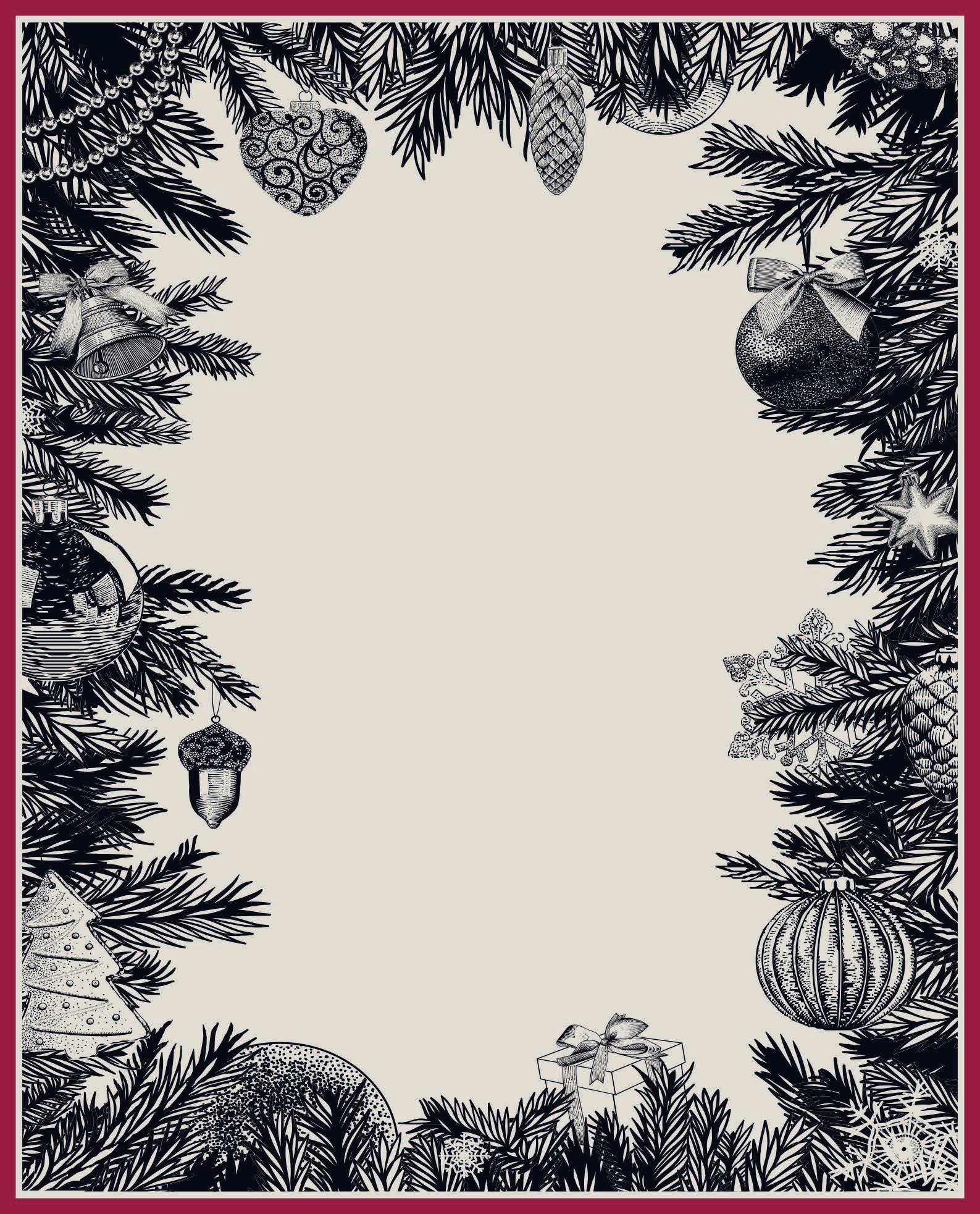






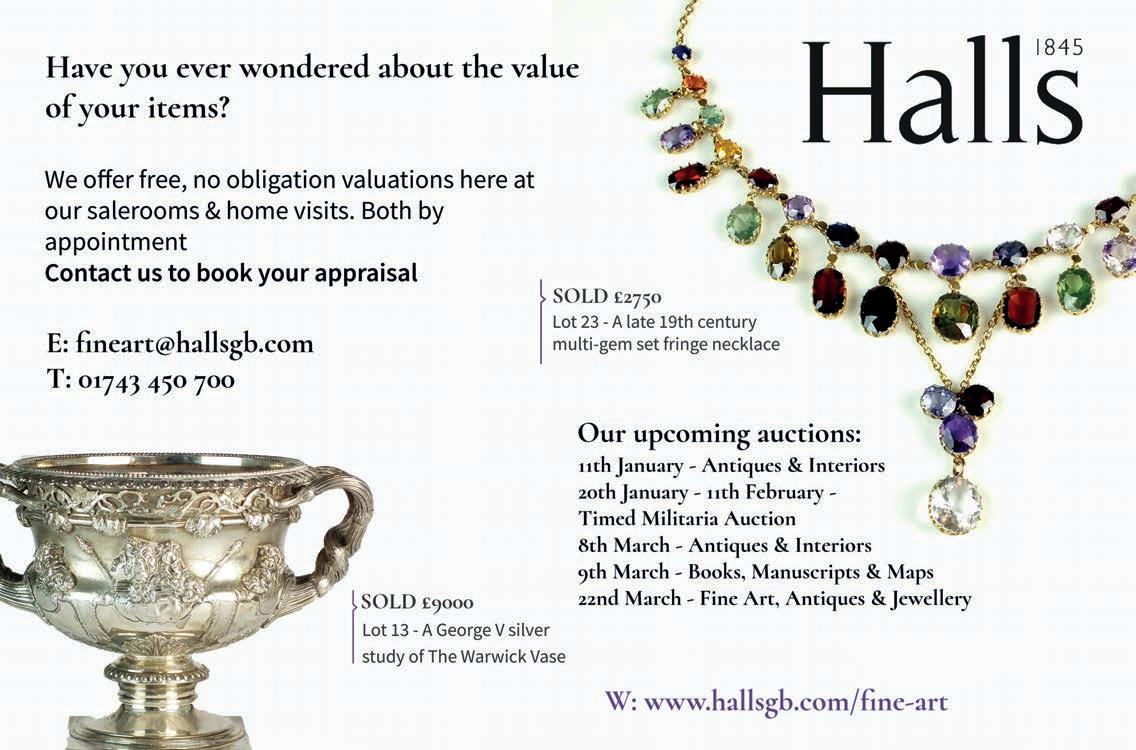
omas recently took up the reins at the Cheltenham-based auction house Chorley’s Auctioneers after previous owner Simon Chorley stood down after 50 years
auctioneers were as generous with their knowledge and encouragement as he is.
I would love to nd a family heirloom, which was sold at an auction in the mid-19th century. It was described in the catalogue as ‘Silver-mounted sword, with the Twelve Apostles beautifully engraved thereon. is was presented to the rst Sir Edward Fust by King Charles II’. If anyone knows of its whereabouts do get in touch.
I have had some fun trying to track down family portraits from the same 19th century auction. I have managed to rediscover two, one in Delaware and one in Italy, it was exciting to be able to bring them home. I suppose my biggest mistakes have been items I have purchased as a ‘project’, these are all languishing in sheds now.
I have always enjoyed the personal side. We have some marvellous clients, and we get to meet all sorts of people in this business. ere is a strong movement towards the ‘online-only’ model at present and it is one we are keen to resist for as long as we can.

ere are a minority of buyers who see the auction rooms as a casino where you cannot lose. When these people make a mistake, they will always try to throw the item back at the saleroom. Of course, when we make a mistake on our side then we are happy to refund but if one more person tells me that their cat ran over their keyboard I will scream!
What was the rst antique you ever acquired?
A kind godfather gave me a Victorian mahogany dressing table mirror as a Christening present. I have no idea what this would have set him back in 1978 but it has not turned out to be an investment piece.
I started in the business as a teenager in the mid-1990s at Wotton Auction Rooms in Gloucestershire, near where I grew up. I think this was more because of parental desire to keep idle hands busy than any motivation on my part. My love of the business came as a result of that job and has grown with the years.


I was certainly in uenced back then by Philip Taubenheim, Wootton Auction Room’s managing director and senior auctioneer, who has nurtured the careers of several auctioneers. It would be great for the business if all



Above When not ferreting about in clients’ lofts, omas enjoys a day at Cheltenham races, image Shutterstock
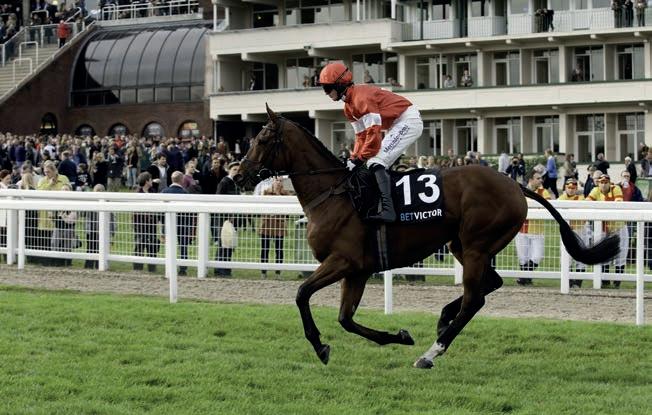
Below right omas’ go to reference book, published by ACC Art Books
I wish I had the time.
‘I have had some fun tr ying to track down family portraits sold at a 19th-centur y auction. I have managed to rediscover two, one in Delaware and one in Italy, it was exciting to bring them home’

What

the reference book you couldn’t live without?
Jackson’s Hallmarks, English, Scottish Irish Silver & Gold Marks From 1300 to the Present Day (published by ACC Art Books) is my go-to volume and ivaluable on the road..
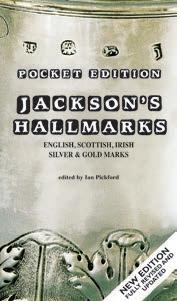
What is your favourite nonantiques activity?
I enjoy the countryside and a day at Cheltenham races always puts a smile on my face.
What single thing would improve the quality of your life?
As my job involves ferreting in attics and rummaging in drawers and a lot of driving about the British countryside, I would have to say fewer roadworks.
Chorley’s next sale is ne art and antiques on February 14, for more details go to www.chorleys.com
2022 will be remembered as the nal year of the second Elizabethan age, a 70-year reign during which the late Queen presided over some great design classics, Edward Rycroft looks back on those set to stand the test of time
Throughout British history furniture design has represented the essence of the period. e medieval period saw furniture of crude and humble form, made from primitive materials. As the country’s wealth grew in the rst Elizabethan age furniture became grander with more intricate ornamentation. e Cromwellian period saw furniture of more restraint; while the restoration of the monarchy was celebrated with the presence of a crown symbol incorporated into furniture. Centuries later the Industrial
Above Mouseman furniture from the David Lamb collection which goes under the hammer at Sworders on January 18-19, see the feature on page 49, image courtesy of Sworders

Above right Day’s chair for Hille sold for £28 in September, image courtesy of East Bristol Auctions
Revolution gave birth to overly elaborate grandeur and ornamentation which was mass produced for a burgeoning population growing in disposable income. Two world wars saw a sombre Utility style, made for practicalities and purpose, but with little to celebrate.
Perhaps that is why the furniture from the second Elizabethan age is so important. When Queen Elizabeth II ascended the throne in 1952, Britain had won the war, sparking prosperity, optimism, freedom and a vision for a new peacetime.
e new young Queen was ideally matched to the forward-thinking spirit of the age. e baby boom generation was thirsty for innovation, creating an industry requirement for furniture and home furnishings. After a period in the doldrums in the ‘70s, the a uence of the ‘80s gave rise to some of the century’s more overblown furniture designs.
Robin Day is perhaps the most well-known and respected designer of the 20th century.
He was born in Buckinghamshire in 1915 and studied furniture and interior design at the Royal College of Art in the mid 1930s.
It was there he met his future wife Lucienne who was studying printed textiles and went on to become a hugely successful designer in her own right. e couple married in 1942.
Right Robin Day’s Hillestak upholstered chair is practical in design but, intended for domestic use, more comfortable. e chair sold for £150 earlier this year; a good price for a design classic, image courtesy of Burstow and Hewett
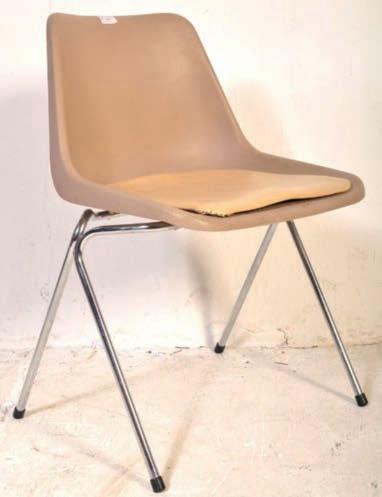

A few years later, Robin was commissioned by the furniture manufacturers Hille to create designs for mass manufacture in 1949, later going on to create more than 150 furniture designs over his lifetime, ranging from TV cabinets, to storage systems, many of which would shape furniture in the new Elizabethan age.

Anyone educated in the UK from the late ‘70s onwards will recognise the polypropylene and tubular steel chair (left) which he designed in 1963 and was manufactured by Hille in their millions for schools, public institutions, libraries and o ces. Selling for £28 this year, it represents quality design at an a ordable price.
Another designer who had a made his mark on 20th-century British furniture design was Ernest Race. Race was born in Newcastle in 1913 and studied interior design before setting up his company, Ernest Race Ltd, formed in response to the government’s Utility Scheme launched after WWII to meet the need for utilitarian, mass-produced furniture.
His Antelope chair and Springbok chair were designed for the Festival of Britain in 1951. e former going on to become one of Race’s most celebrated designs.

Another classic is his Penguin Donkey bookcase in painted plywood and made by Isokon in 1963. It is a true design classic making use of space in a stylish but practical way. is piece sold for £160 in 2018, a bargain for such an iconic piece from the 1960s.
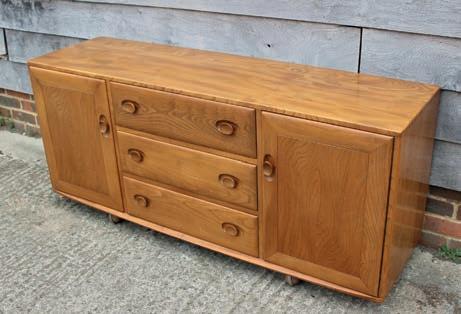
Above e Penguin Donkey Mark II book case by Ernest Race sold for £160 in 2018, image courtesy of Hansons
Right An Ercol Windsor 455 sideboard made from light elm. Its clean lines remain greatly sought after today. It sold for £260 in August, image courtesy of Jones and Jacob
Below right e Ercol Windsor 455 as it appeared in the company’s catalogue from 1963, image courtesy of Ercol


Bottom right Ercol ‘Pebble’ tables are another icon of their period which remain desirable among today’s interiors. e set sold for £270 in November 2021, image courtesy of Sworders
Left Mid-century chic. Ercol was the height of ‘60s fashion, image courtesy of Ercol
‘No whistlestop trip through the design titans responsible for making modern Britain would be complete without Ercol. The trail-blazing name derives from that of its founder Italianborn Lucian R Ercolani. Ercolani moved to the UK aged 11 to settle with his family in East London’
No whistlestop trip through the design titans responsible for making modern Britain would be complete without Ercol. The trail-blazing name derives from that of its founder Italian-born Lucian R Ercolani. Ercolani moved to the UK aged 11 with his family settled in East London.
Ercolani senior was a carpenter for the local Salvation Army and encouraged his four sons to follow in his footsteps. Lucian embarked on various drawing classes before studying a City and Guilds course in furniture theory and construction. In 1920, with his three brothers, the siblings launched their own company, known as Furniture Industries.
By 1943, the company saw a boom in prosperity due, in part, to the Utility Furniture scheme. Like Race, Ercol answered the government call for practical, easy-to-produce designs.
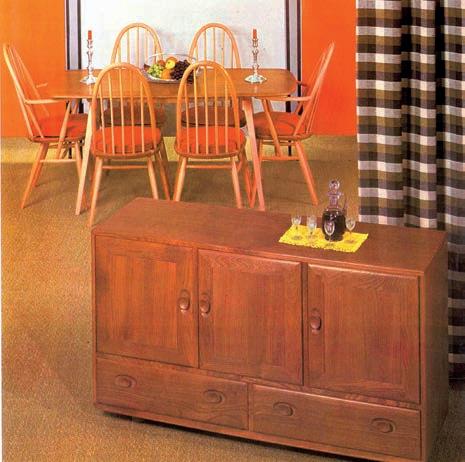
Its 1943 catalogue saw Ercol’s 4A kitchen chair design. Only a year later, Ercolani was offered a contract from the Board of Trade to produce 100,000. With mass production and the easing of wartime restrictions on materials lifted, Ercol was firmly on the design map.
The firm’s reputation continued to grow, helped by the 1946 Britain Can Make It exhibition and the 1951 Festival of Britain. During the reign of the new Queen, Ercol’s name became a symbol of modernity with its aptly-named Windsor range in
Another name synonymous with furniture in the second half of the 20th century is G Plan. Founded by Ebenezer Gomme in 1898, it was his grandson Donald who was responsible for creating the G Plan brand.
G Plan became a household name in the 1950s producing settees and upholstered furniture, as well as cabinets, bookcases and larger wall units which shaped an entire room.
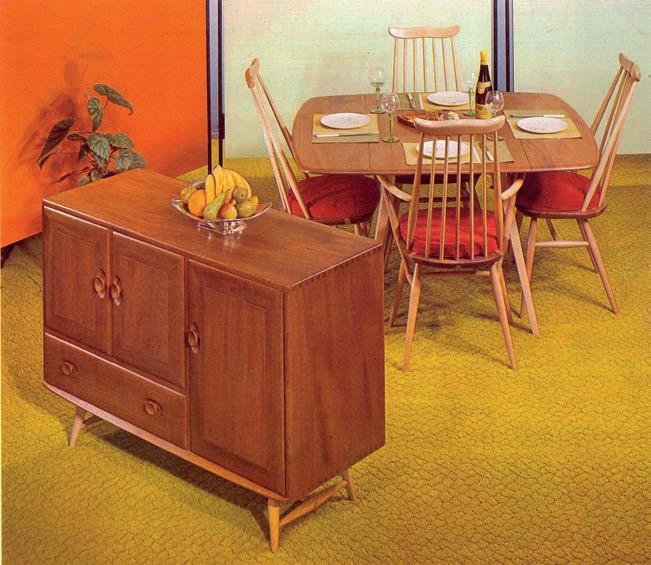
Originally based in High Wycombe, G Plan has long been considered one of the most successful manufacturers of the post war-era. Many of its design remain a stalwart of today’s UK auction houses.
One of the best-known, traditional craftsmen of the 20th century, Mouseman was famously known for his decorative motif of a carved mouse. Considered by many as the “Rolls Royce” of craftmanship, with many of his pieces more desirable than pieces from 300 years earlier.
ompson was born in Kilburn, Yorkshire in 1876. His lifelong passion for English oak craftmanship led him to develop new techniques and furniture based on 17th-century designs.
Favouring oak and joined construction, he echoed the ideals of the arts and crafts movement of the late Victorian era. In fact, you could say that he was part of the William Morris tradition as the philosophy for
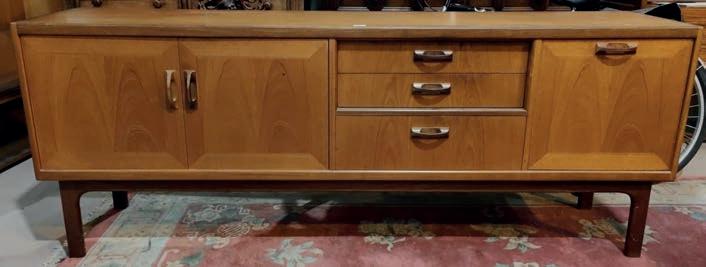
Above A G Plan sideboard in teak dating to the mid ‘60s. Its clean lines, simple form and practicality suit a number of today’s interiors. It sold for £160 in October, image courtesy of Maxwells of Wilmslow
Left G Plan nest of tables, made from teak. is set sold for £60 in October, image courtesy of Golding Young & Mawer
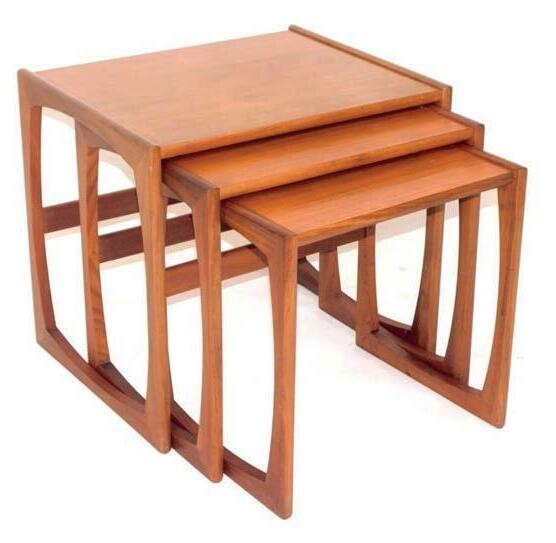
Above right A Mouseman octagonal co ee table in light oak, with an adzed top and hand-cut frame, shows English craftsmanship at its nest and, of course, features the trademark carved mouse. It fetched £700 this October, image courtesy of Tennants
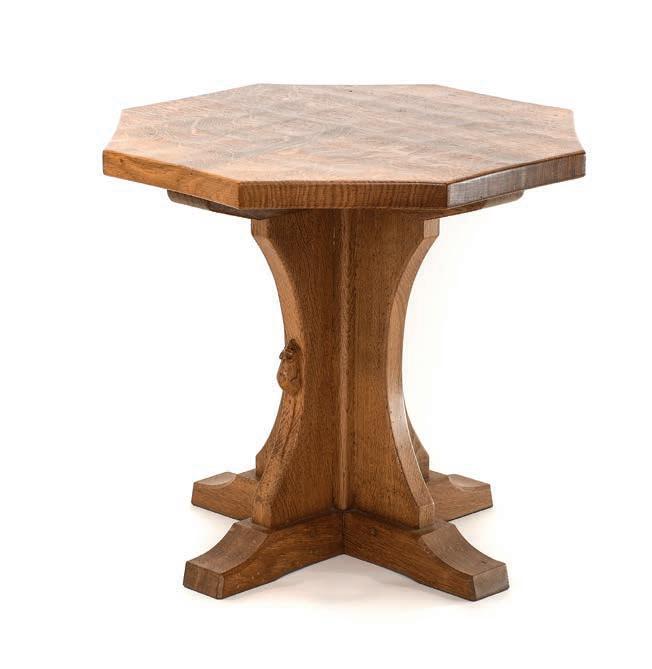
Below Like G Plan, Ercol was a familiar sight in homes in the ‘60s, image courtesy of Ercol
craftsmanship was the same. While Mouseman production started prior to the reign of Elizabeth II, it only became widely known after his death in 1955. e factory continues to exist and, during the second half of the 20th century, thrived.
‘G Plan became a household name in the 1950s producing settees and upholstered furniture, as well as cabinets, bookcases and large wall units which shaped a room’
Gri ths perhaps represents another part of Britain during the Elizabeth II era.
Based in rural Derbyshire, Gri ths produced handmade oak furniture from 1946, based on traditional English furniture design. Until 1968 he sold his furniture through high-end retail stores, including Harrods and, after that, directly from his workshops.
Similar to Mouseman, pieces were made from oak and the business continued after Rupert’s retirement under his son, Nigel. e workshop is still in operation today and continues to make hand-crafted traditional British furniture along traditional lines.
e set of six chairs (below) echo 17th and 18th-century designs with turned legs, carved terminals, rush seats and arcade carved stretchers. ey are also made in solid oak using the joined method of construction.
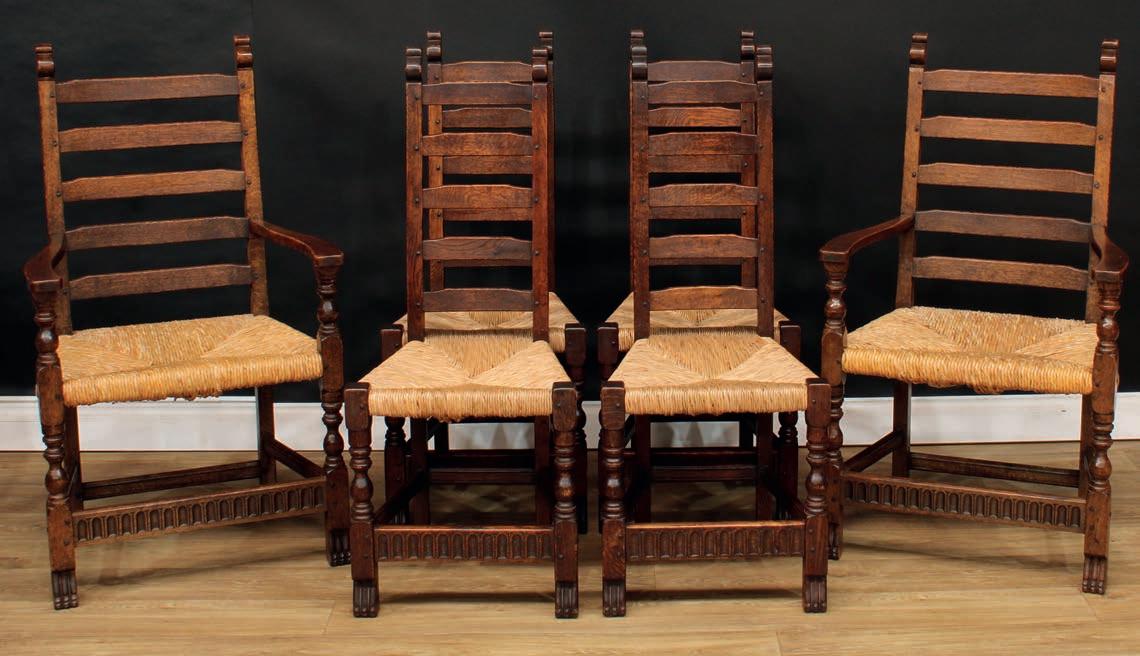
£500 in April 2021, image courtesy of Roseberys
Below A set of six chairs in the style of 17th and 18th-century designs, with turned legs, carved terminals, rush seats and arcade carved stretchers by Rupert Gri ths, sold for £240 in June, image courtesy of Bamfords
MorrisonAnother British designer who also set his mark on British furniture design during the Queen’s reign was London-born Jasper Morrison. He was born in 1959 when Queen Elizabeth II had already been on the
Morrison studied art and design in London in the 1970s before gaining a master’s degree in furniture design at the Royal College of Art in the early 1980s enabling him to spend a year at Berlin’s University of the Arts (HdK).
In 1986, he opened his O ce for Design in London. As such he collaborated with leading international brands, including Alessi, with Morrison’s designs incorporating household appliances as well as furniture designs.

e leather armchairs (above) demonstrate a simplicity and practicality of design. e deep back rests, deep arms and large seat lend ultimate comfort; while the thin steel legs give the chairs elegance, o setting any sense of cumbersome heaviness – the true purpose of luxury ergonomic design.
Edward Rycroft is a Lancashire-born antiques valuer who has previously worked in a number of UK auction houses .
When Diego Maradona’s ‘Hand of God’ shirt sold for a record sum of £7.1m this year it kick-started a new era in collecting football shirts. With the 2022 World Cup underway in Qatar, Antique Collecting reveals how you can really 2022 has been an extraordinary year for sports memorabilia. In May, Maradona’s ‘Hand of God’ shirt, worn in England’s 2-1 defeat to Argentina in the quarternals of the 1986 World Cup, shattered two world records: the most expensive football shirt sold at auction and the most expensive piece of sports memorabilia.
Since then that record has already been beaten twice when Michael Jordan’s ‘ e Last Dance’ basketball jersey fetched $10.1m, before an ultra-rare Mickey Mantle baseball card set a new market high of £10.7m. Sports memorabilia had hit the big time.
While Maradona’s shirt garnered the headlines, for the real sports cognoscenti it was another auction record set three days earlier that was the real game changer. e shirt in question was Lionel Messi’s Barcelona shirt, which sold at Goldin Auctions in New Jersy on May 1 for $450,000.
Unlike Maradona’s shirt this jersey was not worn at a World Cup, it was not even worn in an international. Messi wore it in a Spanish league match in 2017. Admittedly the game was the ‘El Clásico’, the much-hyped match-up
Above Harry Kane’s signed England FIFA World Cup No.9 jersey worn against San Marino in 2021’s Qatar qualifer. Expected to fetch £400-£600, it sold for £2,400 in May, image courtesy of Graham Budd Auctions. England defeated San Marino 10-0, with Harry Kane scoring two penalties and two goals

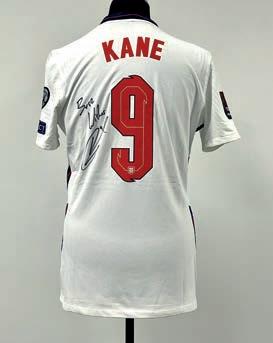
between erce rivals Barcelona and Real Madrid. And during the game, Messi scored a late winning goal – the 500th of his career. But even so, nobody expected it to sell for $450,000. It set the bar for club football shirts which had previously sold for far less than their international counterparts.
Memorabilia expert, Paul Fraser, from Paul Fraser Collectibles, said: “ ere will never be another shirt like Maradona’s World Cup ‘Hand of God’ jersey. In terms of its history and importance, it’s completely unique. But there will be others to match Messi’s ‘El Clásico’ shirt. And now the market has set a precedent. It shows the new generation of global collectors is willing to pay serious money for football memorabilia.”
According to Fraser, a lot more six- gure shirt sales will be on the cards as the market adjusts to this new level of interest. He said: “If you have a few pieces of historic football memorabilia in your own collection, you could well be onto a winner.”
Graham Budd, chairman of Graham Budd Auctions added a word of caution. He said: “ e reaction to the sale of Maradona’s ‘Hand of God’ shirt has made owners of other more moderate Maradona shirts feel that they are all hugely expensive – it’s key to understand that it’s the match and the moment in history that are re ected in the price as well. Sadly, shirts worn by Maradona in league matches etc don’t have a comparable value.”
In November, a shirt from the same quarter- nal match Argentina v England in 1986, played at Estadio Azteca, Mexico, where Maradona punched the winning goal past Peter Shilton, appeared at auction.
But this time it was the No. 8 jersey, issued to the defender Nestor Clausen, which sold for £22,000, against an estimate of £2,600-£3,000 - despite the player never appearing on the pitch. e sale proves the potential value of any collectable associated with the infamous match.
Adam Gascoigne, from Graham Budd Auctions, said: “ is jersey was bench-worn and an outstanding collectable from what is considered the most famous football match in FIFA World Cup history.”
But for the football shirt collector, what factors inform the price of what is these days essentially nothing more than a couple of metres of polyester mesh?
ere are, broadly speaking, three categories of football shirts. At the very top end are match-worn jerseys from some of the most famous players, ideally worn in remarkable games (the Maradona shirt).
is is really the domain of the sports investor, museum owner or wealthy collector. Below that are the match-issued items which have been prepared to players’ speci cations for certain matches but have never been worn during the actual game.
In the third category there are everyday football kits, known as replica shirts, which have come a long way since Leeds United became the rst club to sell a replica shirt to fans in 1973, for the princely sum of £5.
Clubs are also a factor. e most popular team in the UK to collect is Manchester United.
is is followed by Brazil, Argentina, Spain, France, Germany and Italy. In terms of who collects, the majority are European, with the Italians being among the most fanatical, followed by North and South America. Since the start of eBay, the Far East has also seen big collectors – following their favourite teams.
Graham Budd, from Graham Budd Auctions, continued: “If a shirt can complete a collection because it israre, or a change of colour, new season and was only worn a couple of times, that can lead to an increase in interest and price ”
Below left Lionel Messi blue and white under-20 Argentina No.18 jersey, h an estimate of £800-£1,200 i i t h ti
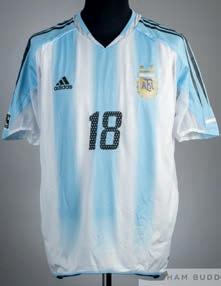


Below right Gareth Bale’s squad-signed white Real Madrid CF no.18 home jersey, season 2021-2022, estimated at £250-350, it sold for £1,800, image courtesy of Graham Budd Auctions
Top Diego Maradona whose second goal secured the 2-1 defeat of England in the quarter nals of the 1986 World Cup, image public domain

Above e shirt he wore to score the infamous goal sold for £7.1m this year, image courtesy of Sotheby’s
The current world record auction price for a sports ball is the $3m paid for Mark McGwire’s 70th home run in baseball, a record that has stood since January 1999.
‘The most popular team in the UK to collect is Manchester United. This is followed by Brazil, Argentina, Spain, France, Germany and Italy.
In terms of who collects, the majority are European, with the Italians being among the most fanatical, followed by North and South America. Since the start of eBay, the Far East has also seen big collectors – following their favourite teams’

Bobby Moore’s missing1966 World Cup shirt continues to excite collectors. Each player taking part in the match against Germany was given two shirts, one to wear and the other to keep for promotional purposes – or for swapping with opponents. Moore’s match-worn shirt was believed to have gone to his first wife, Tina.

Graham Budd said: “But when she sold Moore’s collection to West Ham in 2000 for £1.4m it wasn’t there… so it would be amazing to find it.”

Age can also be a factor, with pre-WWII jerseys very sought after as they are much more di cult to nd - sometimes for the most prosaic of reasons. Budd continued: “ e only pre-war shirts you see are from either FA cups or international matches as you have to remember that for other matches, the shirts were given in and the laundry lady washed them for the next match, the players couldn’t keep them. In today’s matches, players have roughly four shirts per game, a mixture of short and long-sleeve so they are easier to nd.”

Among the collecting cognoscenti debate rages as to whether match-worn or not is a critical factor. In Neal Heard’s book e Football Shirts Book e Connoisseur’s Guide, the collector Jessee Rabbeljee writes: “It depends on the story behind the shirt. If it’s historical, or from a certain player, then, yes. But if I am buying because of the design, sponsor or historical value, then less so. Older matchworn shirts are more special because they were worn for a
Below Tottenham Hotspur’s head of kit and equipment, Steve Dukes, whose collection of 80 signed shirts sold for £41,000 in June to raise money for the Essex and Herts Air Ambulance, image courtesy of Graham Budd Auctions
whole season, so the older the match-worn shirts the more resonance and history they have.”
And while collectors may assume a player’s signature makes the shirt more sought after this is not always the case. Graham Budd continued: “ e purer shirt collector prefers match-worn shirts not to be signed as it is an object in its own right. However, if it’s a replica shirt buyers seem happy with this. I saw one shirt that had been worn by Jimmy Greaves in the 1960s but he had signed it later in life with a thick black marker, this put the true collectors o buying it.”
Last month, the ‘Hand of God’ football, used in the 1986 Argentina v England World Cup quarter- nal, sold for £2m.

As 1986 was the era before the multi-ball system, the ball was used for the full 90 minutes and undoubtably produced the most controversial goal in football history. e ball came with a signed letter from the match referee, Ali Bin Nasser, and authenti cation from the company Resolution Photomatching.

At the same sale the penny used in the coin toss before the legendary England v Germany World Cup nal at Wembley Stadium in July 1966 sold for £11,160, against an estimate of £1,000-£2,000.
Dated 1966, it was acquired by the collector Bryan Horsnell directly from the Swiss match referee Gottfried Dienst.


Above far left Cristiano Ronaldo’s signed red Manchester United No.7 home jersey for the 2021-2022 season, estimated at £300- 500, it sold for £8,000, image courtesy of Graham Budd Auction
Above left Geo Hurst white England 1970 World Cup No.10 jersey, sold for 8,500 against an estimate of £2,000-£4,000 on November 16

Above e Chilean striker George Robledo’s No. 10 Newcastle strip worn in the 1952 FA Cup fi al where he scored the winning goal against Arsenal sold for £7,500 in May, image courtesy of Graham Budd Auctions


Lef t e football rolled to victory when it sold for £2m, image courtesy of Graham Budd Auctions
Below left e penny used in the 1966 World Cup n al sold for £11,160 on November 16, image courtesy of Graham Budd Auctions

Below Estimated at £1,000£2,000, Nestor Clausen’s Argentina 1986 World Cup No.8 jersey from the infamous ‘Hand of God’ quarter-final match v England, sold for £22,000 in November
AIt has grown hugely as investors have begun to look at sports memorabilia as a serious category. In the past, the huge prices were generally limited to US-dominated sports such as baseball and basketball but in recent times, investors have seen the potential in a variety of sports, including football and F1, which has prompted the growth in the market.
QWhat informs price when it comes to football jerseys?
AMatch-worn shirts are generally more sought after than other items because they are so rare. There may only be a couple of shirts worn by the most popular players on the market at any one time and these quickly disappear into private collections. This is what inflates the price whether it’s Manchester United or Colchester United.
When it comes to really famous matches, American companies, such as Resolution Photomatching, use highresolution imagery to zoom in on shirt details, such as a thread out of place, or a particular stain, to conclusively prove the item was worn at given match – adding provenance and value to the jersey.
Below Bobby Charlton’s signed Manchester United No.9 home jersey c. 1965, sold for £18,000 against an estimate of £3,000-£5,000 in 2021, image Graham Budd Auctions
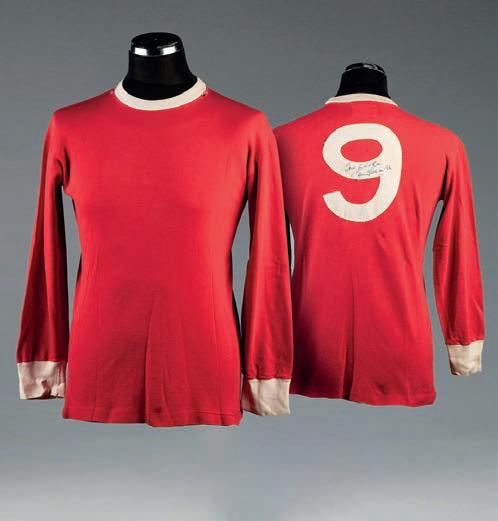
We asked eBay UK’s head of sports memorabilia, Dominic Thurlow-Wood, for his industry insights
QHow has the market for football changed in recent years?
AThe club, and indeed shirt design, can play a role in inflating the value of a match-worn shirt but, in general, these features matter more to the everyday collector and football lover who may be trying to find shirts from certain individual teams or eras.
For match-worn shirts the real value lies in the player and the moment as we saw with Diego Maradona’s “Hand of God” shirt. A match-worn shirt from Lionel Messi, Cristiano Ronaldo, Pelé or Maradona would be expected to sell for upwards of £25,000 but, if you can find the shirt from an important moment in the player’s career, you can multiple this figure by 10.
in the sport, and buy-in from the collector base, will only continue to grow over the next few years with the 2026 World Cup taking place in venues across the USA, Mexico and Canada.
Earlier in my career, at Christie’s, I was head of sale for Lionel Messi’s recordbreaking boots. These were worn by Messi to score his 644th Barcelona goal, which took him past Pelé in scoring the most goals for a single club. They sold for £125,000 which remains a world record for a pair of football boots. However, given recent results in football memorabilia, this is likely to be a shrewd investment should the buyer wish to sell in a few years once the maestro has retired.
QHow far have online sites, eBay being the biggest, transformed the market for football shirts?
AFor the top collectors, this is where the importance of photo-matching comes into play as the value of a shirt that may have been worn in an important game is different from the value of a shirt which is proven to be worn for a crucial moment.
AThere are always lost shirts and sports memorabilia ‘holy grails’ out there which are waiting to come to market.
AThis really comes down to personal preference. I have had many clients who I would now consider to be friends in the industry that place great value on items from matches that they have seen in the flesh, however some others are happy to collect anything that links to a particular moment, be it game-worn or just a replica item from their favourite player.
QWhat effect will the sale of Messi’s Barcelona shirt have?
AEveryone in the industry is keenly watching the record-breaking sales which have been taking place in the USA. It’s clear that football is now an incredibly popular market for investors and prices have been climbing but there is still room to score a bargain. We predict that popularity
Within football at the moment the hottest properties, outside the Messi and Ronaldo axis, are Erling Haaland and Kylian Mbappé. Shirts and boots from these players, particularly from their greatest matches to date and those in the future will only continue to gain in price and popularity if they continue on their current trajectory.
AIt seems very clichéd but you should always collect what you like, even if you collect as an investment. I like to collect items which can be displayed and give me pleasure, such as a signed Eric Cantona shirt (apologies to the non-Manchester United fans). I think women’s football has fantastic potential, particularly following the Lionesses’ performance in winning the women’s Euros. We saw searches for Lioness-related memorabilia spike by over 100 times during the summer and this is a trend which will only continue as the tournaments gain in popularity.
‘Everyone in the industry is keenly watching the record-breaking sales which have been taking place in the USA. It’s clear football is now an incredibly popular market for investors and prices have been climbing, but there is still room to score a bargain. We predict popularity will only continue to grow with the 2026 World Cup taking place in the USA, Mexico and Canada’ ’
AAs with many areas of collectables, online sites have revolutionised the football shirt market. Thanks to eBay, pricing is very transparent and it’s very easy to spot items to add to collections and to pick up on trends in the market, which might make it a good time to buy and sell. Another major positive is the ease with which it’s possible to sell overseas. A number of the sellers who I work with on a daily basis are based in the UK but sell around 50 per cent of all their items to countries around the globe.
AIn terms of popular club teams it’s very difficult to look past the big names with a massive global presence such as Barcelona, Real Madrid, Manchester United, Liverpool or Arsenal. However, part of the magic of the hobby, and eBay, is that all clubs are represented. Last year we launched a partnership with the English Football League working with businesses and clubs that don’t always get the limelight they deserve.
ASports memorabilia, and collectables in general on eBay, is a newlymanaged category in the UK. We’re excited about the work we’re doing to provide additional trust to buyers and greater visibility for our sellers. Our category managers work closely with sellers to showcase the best possible inventory and we’re developing even better measures to prevent fraudulent items from being sold.
Discover more about football shirts at www.ebay.co.uk/Sports-Memorabilia


QShirts from which international and UK clubs are most sought after?
QWith players being issued so many shirts per game, has it lessened its importance as a collecting category?
QHow important is it that the match was within living-memory?
A trio of pieces of English sporting history from the 1966 World Cup goes under the hammer at the north Yorkshire auction house Tennants on December 9.


A FIFA World Cup winner’s medal, won by Lancashire-born midfielder Alan Ball, who at 21 was the youngest member of the winning squad, has an estimate of £80,000-£120,000, while his No.7 shirt has an estimate of £30,000-£50,000. His World Cup cap also goes under the hammer with pre-sale expectations of £15,000-£25,000. Ball sold his medal and cap at auction in 2005, when they were bought by the owner of Bolton Wanderers, businessman and philanthropist Edwin ‘Eddie’ Davies (1946-2018).




Below e World Cup winners’ medal has an estimate of £80,000£120,000
Left Ball’s No.7 shirt is expected to make in the region of £30,000-£50,000
Below e cap was bought by Bolton Wanderers’ owner Eddie Davies in 2005
A drawing by John Constable (1776-1837) appearing on the market for the first time in 40 years has an estimate of £8,000-£12,000 at Halls of Shrewsbury’s sale on December 7.
Inherited from a collector who bought it at London dealers Agnew’s in 1979, the drawing is of a tree on the banks of the River Stour in Constable’s birthplace of East Bergholt. Dated April 20, 1821, it was sketched on the same day the artist wrote a letter to his wife, Maria, in which he records calling on a neighbour in the village, praising the hot cross buns as “quite acceptable”.
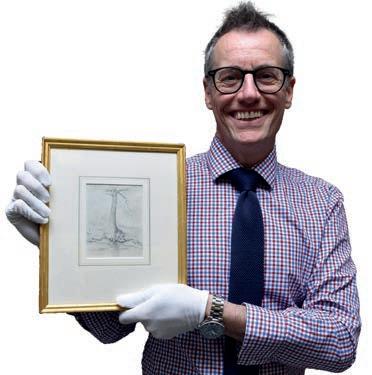
Halls’ fine art director, Gerry Berwyn Jones, said: “The letter is a charming insight into this man’s character, who comes across as warm, humane and engaging.”
Above Halls’ art expert Alexander Clement with the Constable sketch

A red chalk on paper study of an embracing couple by British artist George Frederic Watts RA (1817-1904) has an estimate of £500-£800 at Surreybased auction house Ewbank’s sale on December 9.

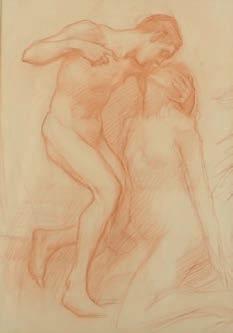
Portraitist, sculptor and landscapist Watts was widely considered to be the greatest painter of the Victorian era, earning him the title of “England’s Michelangelo”.
With his wife, Mary, a talented garden statuary designer, the couple founded the Watts Gallery and Artist Village in Compton near Guildford.
Three flagons of rum from the last ever batch issued to Royal Navy sailors by the Ministry of Defence (MOD) each has an estimate of £1,500-£2,500 at Maidenhead auctioneer Dreweatts’ sale on December 8.
The tradition of giving sailors a daily rum tot started with the Royal Navy’s West Indies Squadron in Jamaica in 1655 and ended in 1970 – the date the flagons’ current owner purchased them directly from the MOD.
Dreweatts’ head of wine and spirits, Mark Robertson, said: “For five centuries British sailors gathered together from 11am-12pm for ‘Up Spirits’, the serving of their allocated tot of rum made up of an eighth of a pint of more than 50 per cent ABV. While regular sailors’ rum was mixed with lime juice and hot water, officers were permitted to drink theirs neat.”
Above e agons were the last to issue the traditional rum tot
Right Les Amants is expected to fetch £500-£800
A Roman glass drinking horn, known as a rhyton, has an estimate of £25,000-£35,000 at Bonhams’ antiquities sale on December 8.
Dated to the late 3rd-mid to 4th-century AD, the delicate green glass vessel was part of a collection assembled over 30 years by the Dutch glass enthusiast and expert Nico Bijnsdorp.

Rhytons were made with either an open or closed tip, the former forcing the drinker to finish the contents in one, while the latter’s design allowed it to be put down between mouthfuls.
Above e 1,700-year-old glass drinking horn is expected to make £25,000-£35,000
From a glass Roman drinking horn to a collection of Mouseman furniture, there is much to enchant collectors this winter
A collection of 40 pieces offurniture by Robert ‘Mouseman’ Thompson, and an eclectic mix of 19th and 20th-century furnishings make up part of a downsizing sale in January from life-long Yorkshire collector – and “Mouseman obsessive” – DavidLamb.
The auction at Sworders, Stansted Mountfitchet in Essex on January 17-18 is one of a series of sales of the collection taking place in 2023.
Lamb used bonus to buy his first serious piece of art in 1984 – a Bridget Riley gouache from the gallery Karsten Schubert London.
He said: “My dad exploded when he found out what I had done. But that picture has been a source of pleasure for almost 40 years and is probably the best financial investment I have ever made.”
Mouseman also became another of Lamb’s obsessions as his collection grew. He said: “I love craftsmanship. And indestructibility. And the power of a brand. The Mouseman story is charming and the furniture beautifully made. It fits within just about any decor, withstands daily use and steps up to the most special occasions. People love to sit around it and spot his trademark mouse. But I am overrun with mice now.”
Mouseman’s light oak furniture provided an ample foil for Lamb’s collection of post-war silver from some of the leading British makers and Australian-born silver and goldsmith Stuart Devlin whose death in 2018 has seen a number of pieces appear on the secondary market. One of his silver-gilt bowls with a ‘pebbled’ body, marked for London, 1969, has an estimate of £250-£350.
Art pottery also features in the sale, including a yellowglazed dog bowl made as a one-off for Liberty & Co. by CH. Brannam of Devon. It has a guide price of £250-£350.

While selling pieces to downsize, Lamb will continue to collect. He said: “This won’t be the end of my collecting. My new house has just enough space and the occasional blank wall to allow me to explo
The David Lamb collection is p
A pair of Mouseman oak dining chairs has an estimate of £800-£1,200
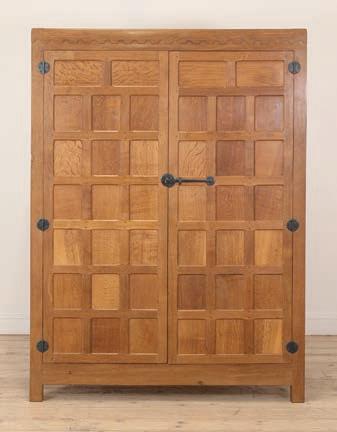
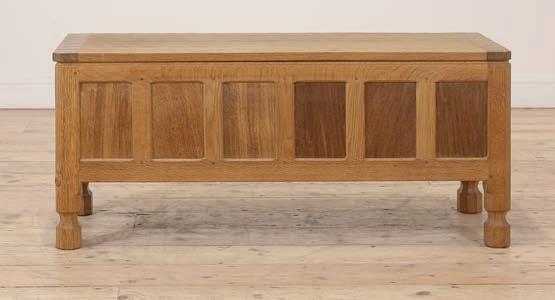

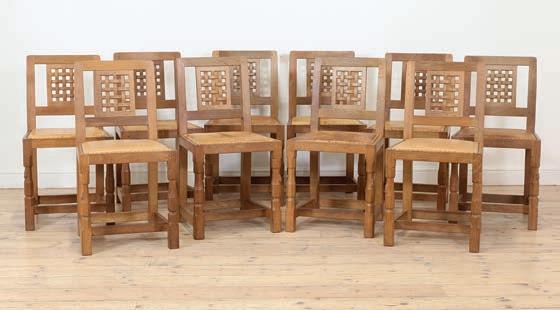


A Mouseman oak blanket box has an estimate of
A Mouseman oak cow stool is expected to make £300-£500 in January 4 A Mouseman wardrobe has an estimate of £4,000-£6,000 5 A silver-gilt bowl, by Stuart Devlin, London 1969, decorated with a ‘pebbled’ body, on a low foot, 10cm diameter 5cm high, has a pre-sale estimate of £250-£350 6 A Longines gilt and rosewood bedside clock, 1970s, with a calendar aperature, raised on three lug feet, 5.8cm wide 6.5cm high, is expected to make £100-£150 7 A set of 10 Mouseman oak dining chairs has an estimate of £2,500-£3,500 at the January sale
An oil painting by the Scottish artist and sculptor, John Duncan Ferguson (1874-1961) has an estimate of £ 5 at the Edinburgh auctioneers Lyon & Turnbull’s sale on January 25. Ferguson is widely regarded as one of the major artists of the Scottish Colourists school of painting.
The painting comes from the Chris Hancock collection of British art and design, a private collection featuring works from the arts and crafts movement to contemporary art.
Other lots in the sale include pieces by Christopher Dresser, William Moorcroft and Archibald Knox.

Above An oil painting of boats by the Scottish artist John Duncan Ferguson (1874-1961) is one piece in the sale of the Chris Hancock collection

A 1903 double-sided face character jug by R.W. Martin & Brothers bought direct from the well-known makers’ Southall studio in 1914 has an estimate of £2,500-£3,500 at Roseberys’ sale on December 7.
It comes with a somewhat dismissive letter from the buyer, a reverend WG. Beardmore who was purchasing it on behalf of an Australian collector. In it he writes: “Yesterday I went down to the Martins place in Brownlow St, Holborn on your behalf, but found the place closed. They are now only to be found at their works in Southall - 10 miles from London! It is a very grave error of judgement. They are very unworldly and unpractical men in relation to business.”

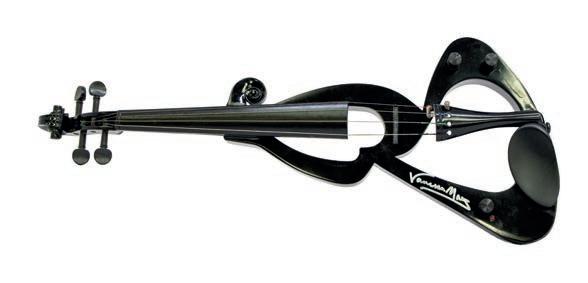
Above e jug comes with a letter and other documents relating to the sale made direct from the brothers’ studio in Southall
A striking violin owned by Vanessa-Mae has an estimate of £2,000£3,000 at Hansons’ sale on December 8.
The Singaporean-born British violinist, whose album sales stretch to several million, gave the instrument to a dog-loving fan. In a letter accompanying the signed violin she wrote: “I felt that the work you do for animals is a real credit and as the owner of two Shih Tzus myself I understand the importance of animal welfare and indeed human welfare.”
An iconic armchair, dated 1933, by the maker Gerald Summers (1899-1967) has an estimate at £8,000-£12,000 at Mallams’ Oxford sale on December 8.
In 1929, Summers and his wife, Marjorie Butcher, started the company Makers of Simple Furniture and began experimenting with free-form designs and malleable materials. Summers specialised in airplane plywood, which resulted in some of the most innovative designs of the period.

The chair on sale is made from one piece of wood and considered a Modernist masterpiece.
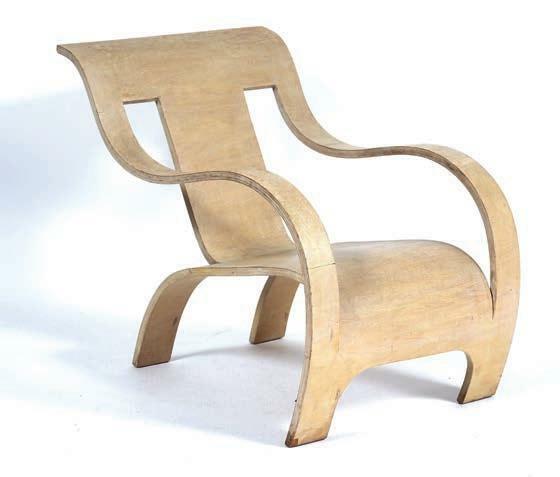
Above Like much British inter-war design, Summers’ work was largely forgotten by the market until the 21st century
A used lipstick belonging to the Hollywood icon Marilyn Monroe has an estimate of $1,000-$2,000 at Julien’s Auctions’ sale on December 17-18 in Beverly Hills, California and online at www.julienslive. com. At the same sale boxes of her false eyelashes are expected to make $800$1,200 each, with a spray can of hairspray having a guide price of $1,000-$2,000.
Left Makeup owned by the Hollywood icon is up for sale



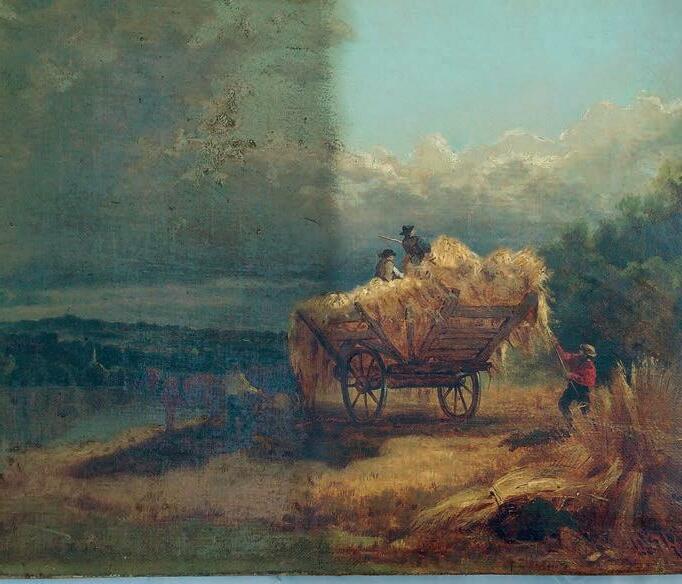
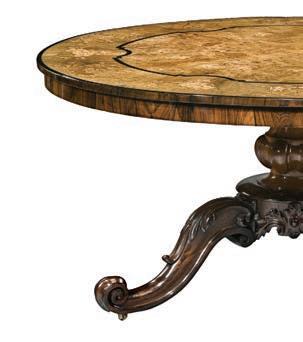



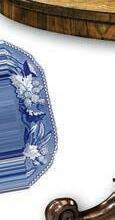





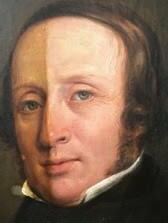


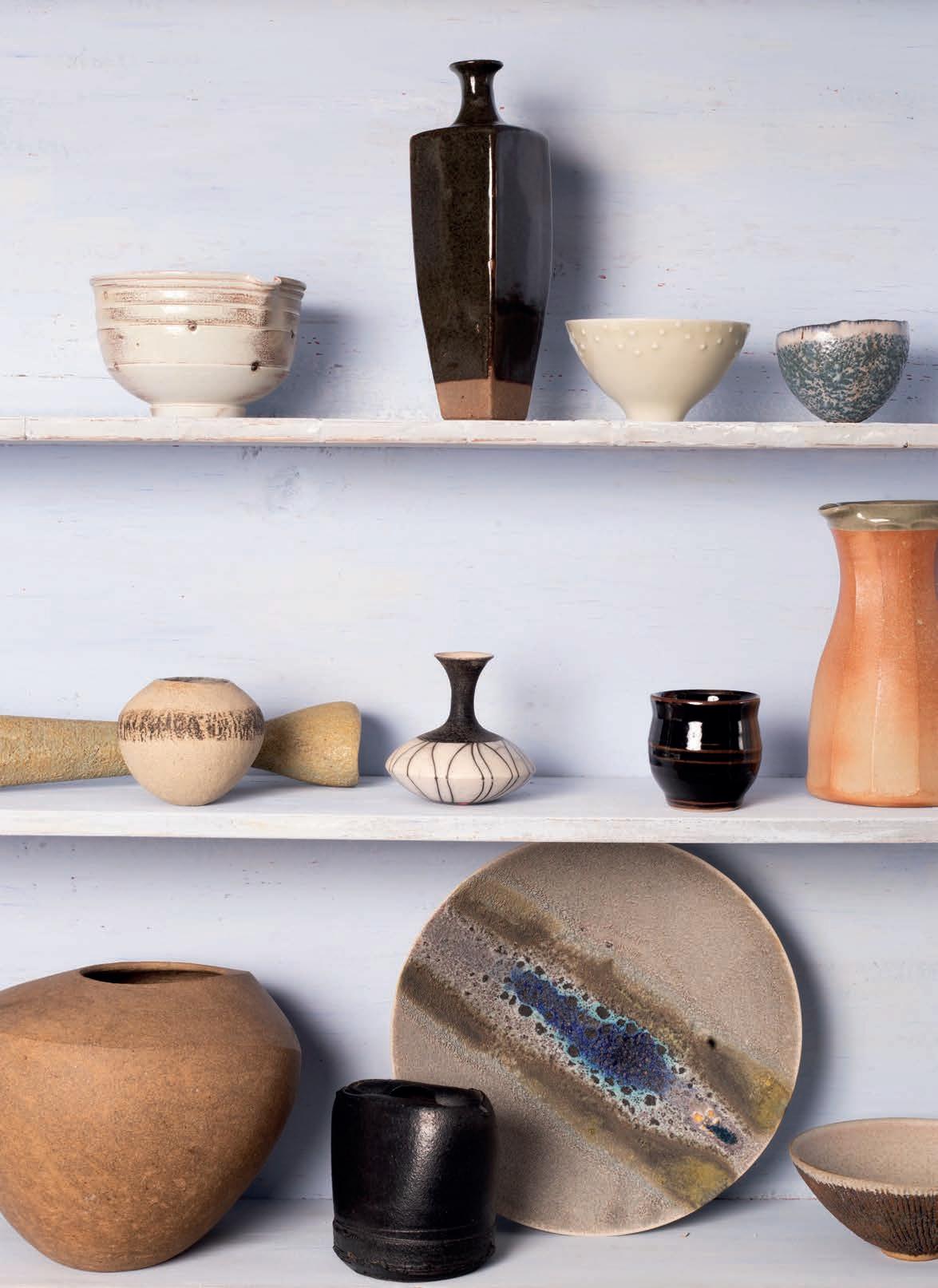

Despite recent headlines of record-breaking sales (the recent auction of Paul Allen’s collection being the biggest sale in art history), beyond the glitz, collectors need to follow some basic rules when buying art at auction.
While purchasing art through an established gallery or dealer a ords the buyer some consumer protection, the same rules do not apply at public auction where the maxim caveat emptor comes rmly to the fore.
e buyer’s legal rights and remedies are not only limited by law but are often circumscribed yet further by the terms and conditions of sale applied by auction houses, and claims can be subject to very short contractual exclusion periods. is makes it essential that due diligence enquiries are carried out in advance of the sale, not afterwards.
Auction houses can sell either on their own account (for example, if they previously bought in a work that would otherwise have gone unsold) or on behalf of a consignor.
Above Georges Seurat (1859-1891) Les Poseuses, Ensemble (Petite version). An 1888 oil on canvas depicting three nude women, it fetched $149.2m, becoming the top seller at the sale of Paul Allen’s collection recently, image courtesy of Christie’s


Understand who the seller is and ask for evidence, rst, that the seller is either the owner of the artwork, or is otherwise entitled to sell the artwork on behalf of the owner; and, secondly, that the artwork is free from liens and third party rights and that the buyer will acquire clear and unencumbered title.
Check whether there is a known attribution to the artist, for example, in a catalogue raisonné, and check publications about the artwork and any claimed exhibition history.
When buying an Old Master painting, obtain expert advice on the authenticity and attribution of the artwork. e terminology used by auction houses to describe authorship can be confusing and the lines between an autograph and studio work can be uid.
Challenging authenticity post-sale can be di cult and expensive. Modern and contemporary artworks should be authenticated by the artist’s studio or estate and be accompanied by a certi cate of authenticity. Beware recent re-attributions that increase the value of an artwork.
Enquire about the ownership history of the artwork, identify possible gaps in provenance that could hide historic claims. A complete and fully documented provenance adds to the value of any artwork.
Con rm the artwork has not been recorded as lost or stolen. If an artwork has been imported from overseas, make sure that any export permits that may have been required from the source country are present.
Obtain a condition report from the auction house and investigate further if there are signs that an artwork may have been repaired or restored. Heavy or clumsy restorations, or the use of incorrect materials, will adversely a ect the value of an artwork.
Obtain an independent valuation and check online market data if the artwork was more recently sold. When bidding, bear in mind that the sales estimate advertised in the catalogue will not be the nal price. e auction house will add buyer’s premium to the hammer price, and the buyer may in addition be responsible for VAT payments and import duties if the artwork has come to the UK on a temporary import basis. Artists’ resale royalty may also be payable.
Obtain a written invoice including full details of the artwork in accordance with the catalogue description, together with any supporting documents.
Buyers will normally be responsible for collection or shipping arrangements. Put insurance cover in place from the time when risk of loss and damage passes to the buyer under the auction house’s terms and conditions of sale; this may have to include transport and transit cover.
Gregor Kleinknecht is a partner at the law rm Keystone Law, London. For more go to www.keystonelaw.com

Microsoft co-founder Paul Allen’s collection may have fetched $1.5bn at auction but buyers in general are advised to tread carefully, writes art law specialist Gregor Kleinknecht
‘Confirm that the artwork has not been recorded as lost or stolen. If an artwork has been imported from overseas, make sure that any export permits are present’
Send your answers to Crossword, Antique Collecting magazine, Sandy Lane, Woodbridge, Su olk, IP12 4SD, UK.

Photocopies are also acceptable, or email your answer to: magazine@ accartbooks.com. e rst three opened by January 10 will win a copy of Jackson’s Hallmarks, Pocket Edition: English, Scottish, Irish Silver & Gold Marks From 1300 to the Present Day, worth £6.95

Night. What is it labelled as? (a) a charity bowl, (b) a companionship bowl, (c) a wassail bowl.
Q1 You spot an old, but charming, painting of a family enjoying a Christmas goose. It is not a British family. In the absence of any other clues what nationality are they most likely to be? (a) German, (b) Norwegian, (c) French.

Q1 ere’s a copy of Dickens’s A Christmas Carol purporting to be a rst edition. What date would you expect it to be? (a) 1840, (b) 1843, (c) 1846.
Q3 You see a well-thumbed pack of playing cards claiming to have been sent to a poor family in Sir Roger de Coverley’s parish in the early 18th century. (He allegedly sent every such family a yuletide hog’s pudding and playing cards.) Are you tempted to buy it? (a) yes, (b) no, (c) maybe.
Q4 ere is a Victorian bathing costume labelled ‘Hyde Park, 1864’. You avidly collect such costumes. Would you buy? (a) yes, (b) no, (c) maybe.
Q5 On one stall is a riding helmet labelled ‘Fox. Bucks Green’. What does it mean and where does it come from? a) A Christmas Day fox-hunting meet, (b) a Victorian helmet owned by a Lord Fox, (c) e helmet worn by horse riders trotting through the Fox pub in order to preserve it as a bridle path
Q6 You come across a set of mid 19th-century glass Christmas tree decorations. Which glasscompany name would you associate with them? (a) McKee, (b) Kugel, (c) Ensell and Wilson?
Q7 ere’s a house-keeper’s journal in which (among others) the names Bold Slasher, Little Johnny Jack, Doctor and Father Christmas are written with varying amounts of money next to them. To what might they refer? (a) Christmas charity to particular people, (b) charade characters and amounts spent on costumes, (c) food items with early labelling.



Q8 Another dealer o ers a large bowl made of maple wood labelled Christmas Eve ’til Twelfth
Q1 Which country would have a goose on its Christmas
Q9 As you leave the fair you notice someone has pinned-up a quote on the noticeboard from one of life’s ( ctional) characters reading: “I am a poor man, but I would gladly give ten shillings to nd out who sent me the insulting Christmas card I received this morning.” From which 1892 literary gem has the quote been taken?
Q10 And what is the name of the ctional character to whom the card was sent?
The letters in the highlighted squares could be rearranged to form the words ‘cheval mirrors’ also known as horse dressing glasses. The three winners who will each receive a copy of the book are: Chris Evans, Leominster; Peter Zorn, Sydney, by email, Jason Andrews, Exeter.
1 Popular Churchillian-type article, cutters for which are varied and collectable. (5)
6 Boost worth…sometimes with a lot of hot air? (7)
7 Giant hunter in Greek mythology (and now a prominent constellation). Poussin depicted an event from his (supposed) life Blind _____ Searching for the Rising Sun. (5)
8 Japanese female artists and entertainers. (pl.) (7)

10 Chair, bench etc….and a Spanish car manufacturer. (4)
12 Italian painter and architect (1483-1520) in whose works are expressed the ideals of the High Renaissance. (7)
15 Red precious stone believed, in Medieval times, to protect the wearer against poison. (4)

17 A rosette shape, hence a _____ fan is one that opens 360 degrees. (7)
19 A small drop, or drop-like ornament, and as _____-percha, a waterproof but hard material that was one of the first rubber/ plastic materials with many uses in the 19th century. (5)
20 Inexpensive object (sing.) (usually porcelain) once bought or won at an amusement event. (7)
21 _____ - bottle. Olfactory accessory. Silver ones in the forms of animals are rare and desirable. (5)
1 The botonée, fitchée, fleury and tau, are all forms of _____ (sing.) (5)
2 Collectable musical instrument of the 20th century, eg Gretsch and Hofner, Gibson and Rickenbacker. (6)
3 See 4-down
4 With 3-down. Piece of jewellery with an assemblage of stones made popular in the early 19th century (7, 4)
5 Greek mythological Titan condemned to support the heavens. Now associated with books first published in 1595. (5)
9 A sleeveless surplice-type garment originally worn by Jewish priests in ancient Israel. (5)
11 Drinking vessel. The earliest English silver examples date from the 17th century. (7)
13 Iridescence, such as that produced on pottery using metal pigments. (6)

14 Marine material used in decorative arts for thousands of years. (5)
16 Fungus, said to be one of the first ‘domesticated’ organisms, and essential for the liquid to fill 11-down. (5) 19 Fabergé’s most famous creations. (pl.) (4)
Finally, rearrange the letters in the highlighted squares to form the name of the intense colour associated with lapis lazuli and the historic region of southwestern Asia. (7, 4)

BY TERRY O’NEILL

ISBN 9781788841283 RRP £35.00 OFFER PRICE £22.75
O’Neill captured many of the most unforgettable faces from the frontline of fame, and his photographs exude his own brand of serene simplicity, intimate behind-the-scenes moments and the rare quality of trust between photographer and subject. The list of people Terry O’Neill has worked with over the past 60 years is a Who’s Who in celebrity: from film to music, sports to politics. From the morning he spent with Faye Dunaway at the pool in Beverly Hills, to walking around Vegas with Sean Connery dressed as James Bond, a chance encounter with Bruce Springsteen on the Sunset Strip, to taking Jean Shrimpton to a doll hospital – these are the stories behind the images as only Terry O’Neill can reveal.
Maps that Made History is like a 1000-year-long journey around the world; every one of the carefully selected maps featured here has influenced the course of history in some way. This beautifully illustrated book gathers 100 marvellous old maps, each with a fascinating story to tell, from a 12th-century Persian world atlas to a Soviet spy map. These maps were used to resolve conflicts, situate battles, construct a road or a canal, establish important shipping routes, even as propaganda.

There’s an elemental satisfaction to living in a cosy sanctuary in the midst of a snowy landscape. It evokes feelings of warmth, security, refuge, and comfort. Winter Homes beautifully illustrates examples from winter wonderlands around the globe and provides ingenious solutions on how the home’s design is formulated, and the architectural and interior design techniques used to create both a connection to nature and contend with biting winter conditions.


BY DAVID HOCKNEY
ISBN 9781907533242
RRP £16.95

OFFER PRICE £11.02
David Hockney’s interpretation of the Brothers Grimm fairy tales are like no other version you will have read before. Although inspired by earlier illustrators of the tales, from Arthur Rackham to Edmund Dulac, Hockney’s extraordinary etchings re-imagine these strange and supernatural stories for a modern audience, capturing their distinctive atmosphere in a style that is recognisably the artist’s own.

BY SHANA CLARK
ISBN 9789401485463
RRP £30.00
OFFER PRICE £19.50
For wine lovers, both professionals and hobbyists, vineyards are must-see places. They are found in the most scenic regions in the world where you can wander for hours, or unexpectedly, right in the middle of the city. This beautifully illustrated book presents a carefully curated selection of the world’s most exceptional vineyards, from Japan to Argentina and South Africa to France. In this guide you’ll discover tips on how to visit the vineyards, along with interesting stories about each place, and, of course, where to taste wine. The perfect gift for the wine aficionado who dreams of travelling the world.

BY VANESSA GRALL
ISBN 9781916430938
RRP £30.00
OFFER
OFFER PRICE £19.50
This book will encourage the wanderer within. It is a true traveller’s companion as much as a beautifullydesigned collectable for your bookshelf. You are about to acquire this curious local’s key to the city that will unlock a precious vault of addresses. Within the pages of this beautifully bound hardback, you will find endless good-to-know Paris tips.
e Allies produced two types of atomic bombs: “Fat Man”, a plutonium implosion-type nuclear weapon, and Hiroshima-bound “Little Boy”, an enriched uranium guntype ssion weapon.
Over the next two to four months, the e ects of the atomic blasts killed between 90,000 and 146,000 people in Hiroshima and up to 80,000 people in Nagasaki. Roughly half occurred on the rst day.
An archive of British military documents from the British government scientist tasked with recording the devastating e ects of the nuclear bomb blast at Hiroshima in 1945 are up for sale in January.

e unnamed military expert had been sent to the city as part of a UK mission to record the e ects of the ‘Little Boy’ atomic bomb on the city.
e archive, going under the hammer at Hansons on January 9, with a guide price of £2,000-£3,000, includes one of only 92 original o cial copies of a con dential report, with four o cial aerial photos of the bombsite taken by the US Air Force. e views were captured so soon after detonation that res can be seen blazing on the ground.
On August 6, 1945, the United States detonated an atomic bomb over the Japanese city of Hiroshima, followed by another on August 9 at Nagasaki.
Above Wrecked framework of the Museum of Science and Industry in Hiroshima shortly after the dropping of the rst atomic bomb, on August 6, 1945, image Shutterstock, not part of the archive on sale in January
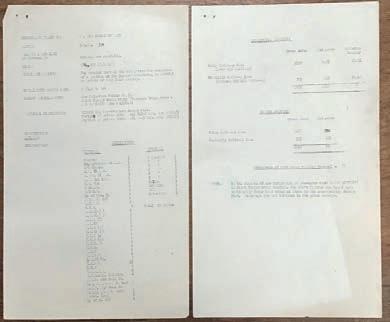
Above right Hiroshima military report detailing damage in the city, credit Hansons Auctioneers

Left e report states the devastation stretched almost ve square miles across the city, credit Hansons
Right Ariel photos of the bomb site were taken by the US air force


For months afterwards, many people continued to die from the e ects of burns, radiation sickness, and injuries, compounded by illness and malnutrition. ough Hiroshima had a sizable military garrison, most of the dead were civilians. Japan surrendered to the Allies on August 15, 1945.
Documents include a “damage” map, over-printed on an aerial photograph. Another page, entitled “Details of Damage”, lists numerous key infrastructures in the city –all with the word “Destroyed” next to them.
ese include a large industrial complex, Hiroshima main station, telephone exchange, power station, electricity sub-station and barracks.
One page marked “Con dential November 6 1945” tries to give the destruction a uniquely UK perspective, reading: “ e debris is so great and appears to be so evenly distributed as to obliterate the greater part of the original street plan of the city…the main area of destruction runs over an area of 5,188 acres (4.9 square miles) including waterways. is area in London would correspond with a circle centred on Charing Cross the radius bounded by Russell Square on the North, Lambeth Square on the South, St Paul’s on the East and Berkeley Square on the West.”
e impact of the blast is also brought home by a Sake bottle, warped by the heat of the blast with dirt melted into the glaze, and likely picked up as a poignant souvenir.
With peace on many people’s minds this new year, stark reminders of the devastation of the Hiroshima nuclear blast go under the hammer in Derbyshire
The seller, from Herefordshire, said: “I was given the collection by a close friend who had it for several years. I believe he purchased it from a collector of historical military items.
“I was told that in 1945 a government scientist, unfortunately name unknown, visited Hiroshima as part of a UK mission to record the effects of the “Little Boy” atomic bomb on the city. The reports and photographs must have been given to him as part of his work at the time.”
It is thought the scientist worked as a lecturer at a British university after the war and passed the rare documents on to an interested student.

Such pieces are uncommon outside a museum and it is unusual to fine them in private hands. The vendor continued: “The atomic attacks on Hiroshima and Nagasaki were pivotal moments in world history and utterly tragic and horrific. The scale of human suffering was terrible. I hope the collection will be viewed and appreciated for the events it represents, and that it will remind people of the horrors of war. It doesn’t feel right to keep such important historical items locked away in a box unseen.”
WHAT: The Hiroshima collection When: January 9 Where: Hansons Auctioneers, Heage Lane, Etwall, Derbyshire, DE65 6LS Viewing: Dates to be confirmed, check online at www. hansonsauctioneers. co.uk
How important is the archive?
With conflicts raging around the world including, horrifically, threats of nuclear war, this group of objects provides a timely reminder of the loss of life and devastation caused by these ferocious weapons. It is important to learn lessons from the past, and to remember the millions of people – military and civilian – who have lost their lives in war.
From where is interest likely come?
Like our vendor, I hope it is a museum which will acquire these items for public view.
They are simply too important to remain in private hands. In terms of interest, the historic relevance is global with interested bidders no doubt being international, including one might hope Japan.
Is there a particular piece, photograph or text you find especially poignant?
The stark documentation of such a human tragedy is striking. One paragraph compares a “fully built-up zone” with a “partially built-up zone”, the former having a building density of more than 40 per cent.
What is not documented are the people who would have been living in those buildings and inevitably lost their lives in the blast.
Above left Aerial images by US Air Force of Hiroshima showing res still burning, part of the collection on sale in January with an estimate of £2,000-£3,000, credit Hansons Auctioneers

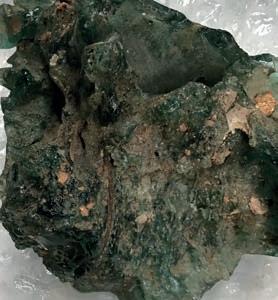
Left Melted glass, part of the sale of the Hiroshima collection which is expected to make £2,000£3,000, credit Hansons Auctioneers

Right A map of the city showing the damage in red, credit Hansons Auctioneers
‘The views were captured so soon after detonation fires are seen blazing on the ground. Though Hiroshima had a sizable military garrison, most of the dead were civilians. Japan surrendered to the Allies on August 15, 1945’
It is the melted sake bottle which lends a heartbreaking human context. One can almost imagine a happy domestic scene of friends and family being shattered in a moment by the horror of war.
We asked Charles Hanson, owner of Hansons Auctioneers, for his sale highlights
IN MY OPINION...
Long overlooked by better-known titans of 18th-century furniture makers, such as omas Chippendale, a new book and recent auction has put the long partnership of William Ince and John Mayhew in the spotlight
The partnership of William Ince (1737–1804) and John Mayhew (1736–1811) ran from 1758 to 1804 and was one of the most enduring and well-connected collaborations in Georgian London’s tight-knit cabinetmaking community. e partners’ clientele was probably larger, and their work was arguably more in uential over a longer period, than most other leading metropolitan makers – perhaps even than that of their older contemporary, the celebrated maker omas Chippendale.
Despite their considerable output and an impressive tally of clients, including some 97 commissions, much of their work remained unidenti ed – until recent times. But a new book, 40 years in the making, by Hugh Roberts and Christie’s International deputy chairman, Charles Cator, has trawled private family archives, county record o ces and bank archives to reveal compelling new evidence about the business and its in uence within cabinetmaking circles.
Above A pair of George III pier tables, c. 1770, (against the wall), attributed to Ince & Mayhew, part of the collection of Lord and Lady Weinstock. It sold for £163,000 at Christie’s sale on November 23 against an estimate of £100,000-£150,000, © Christie’s Images
Right Cabinet-on-stand, by Ince & Mayhew, made for the Duchess of Manchester, 1775, (Victoria and Albert Museum)
In some key areas, namely marquetry decoration and popularising painted furniture, Ince and Mayhew led fashion more than many of their rivals.

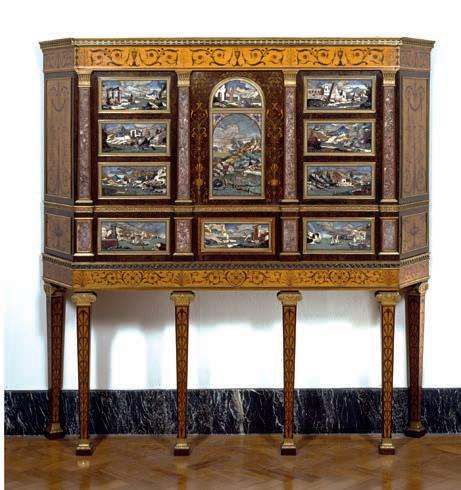
Both men were raised in the heart of the capital’s artisan quarters and the centre of the cabinetmaking trade, Soho and Covent Garden, and were therefore extremely well placed to exploit their trade connections.
Mayhew was originally apprenticed to William Bradshaw, the upholsterer, of Soho Square, and Ince apprenticed to John West of Covent Garden from 1752 until West’s death in 1758.
Once partnered, the pair had workshops in Broad Street, Soho, followed by a space on Marshall Street, Carnaby Market. Initially describing themselves as ‘cabinet makers, carvers and upholders,’ this was variously amended over the term of the partnership to include such terms as ‘dealers in plate glass,’ with the categories of ‘cabinet maker’ and ‘upholsterer,’ however, remaining constant.

ey worked closely with Robert Adam, most notably for Sir John Gri n at Audley End in 1767, for the Duchess of Northumberland in 1771, for the Earl of Kerry in 1771 and, most importantly for the Duchess of Manchester in 1775, creating the Kimbolton Cabinet.
With carvers, gilders, painters, upholsterers, brass founders and metalworkers, as well as suppliers of timber, mirror glass, fabrics, tapestry and upholstery materials, all within the partners’ reach, their comprehensive service foreshadowed that o ered by later 19th-century furnishers and more than equalled that of modern designers.
Despite their obvious capabilities, until recent times little more than the partners’ names and their reputation as authors of a pattern book published in 1762 – e Universal System of Houshold Furniture – had survived. Similarly, little of the rm’s very considerable output, or its impressive tally of clients and commissions, had been identi ed, let alone studied.
ere is, regrettably, no surviving equivalent in Ince and Mayhew’s oeuvre to Chippendale’s spectacularly rich, largely intact and well-documented schemes of furnishing and decoration at Dumfries House, Harewood House, Nostell Priory and Newby Hall.
Ince’s design skills were put to the test early in the rm’s existence when the partners decided on the ambitious publication of a substantial new design book.
It was to be a conscious imitation of Chippendale’s highly successful 1754 publication, e Gentleman and Cabinet-Maker’s Director, to which Ince was a subscriber as an apprentice, and which was reissued with minor variations in 1755.
e plan for Ince and Mayhew’s publication, announced on July 10, 1759, promised ‘near ree Hundred Designs’, on 160 large folio plates, to be issued in 40 weekly instalments of four plates each, at one shilling for each cahier; and at the conclusion there would be 40 pages of descriptive letterpress.
An advertisement 14 days later promised ‘upwards of 450 designs’, and in a provocatively worded announcement aimed at Chippendale and the Director, they stated on December 25 that their publication would be ‘so universally esteemed for its being the Gentleman’s best Director of Choice, and the Workman’s in the Execution of any Design’.
Above Top of the commode by Ince & Mayhew, made to the designs of Robert Adam for the Earl of Derby, 1775, ( e Derby Collection)

Top right A commode, incorporating re-worked 17th-century marquetry, by Ince & Mayhew, made for the Earl of Exeter, 1767, (Burghley House)

Above right Top of the same commode, one of a pair, made for the Earl of Exeter, 1767, (Burghley House)
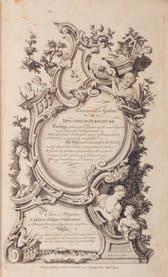

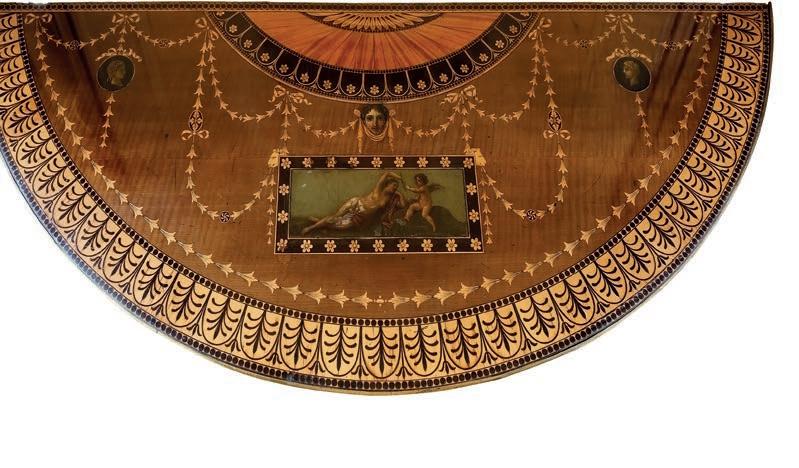
Below left Plate XXXIII from e Universal System of Houshold Furniture detailing three designs for night tables, image courtesy of Bonhams
Below William Ince, title page of e Universal System of Houshold Furniture, probably 1762. (Private Collection)
With case furniture, one common link is the partners’ use of marquetry, including large-scale motifs from antiquity, copied from engravings (habitually urns, vases or tripods), typically simply coloured and boldly inlaid on a contrasting ground. Secondly, extensive and delicate shading and surface engraving of the inlay, heightened with black, red or white mastic to mimic printed engravings. Another feature is the subtle inlaying (usually of foliage designs), differentiated from the ground wood only by the contrast of the natural colour and figure of the inlay. Other characteristics include the sympathetic modernisation and re-use of good examples of earlier marquetry, notably late 17th-century floral panels – an antiquarian trait that sets them significantly apart from almost all of their contemporaries and rivals, notably Chippendale, all constituting their original contribution to English furniture decoration.
‘The relative lack of success of The Universal System as a design manual (there were no further editions) and the paucity of documented furniture in the style of the publication (despite the claims that a number of engraved pieces had been executed) are no doubt connected’
In fact the publication plan was heavily curtailed after the issue of cahiers 19–21, advertised in September 1760. e 89 plates published by then (all but one signed by Chippendale’s principal engraver, Matthew Darly), together with six more anonymous sheets of a utilitarian and less sophisticated character, were reissued in bound folio form as e Universal System of Houshold Furniture e reason for the abandonment of the original plan was no doubt in part nancial: such undertakings were costly and risky, requiring more time and money than the edgling partnership could reasonably a ord.
However, the main cause must have been news – rst advertised by Chippendale on August 18, 1759 – of the publication (on October 6, 1759) of the rst four plates of what was to become the third edition of the Director
Like Ince and Mayhew’s work, and no doubt inspired by it, Chippendale’s plates were to be issued weekly. By March 1760, he had produced 100 plates and it must have been clear to Ince and Mayhew that the competition, reinforced by a vigorous advertising campaign, was overwhelming.
Furthermore, conscious of the considerable signi cance to his fashion-conscious clientele, for the rst time Chippendale included a number of neoclassical motifs, while Ince and Mayhew’s designs remained rmly anchored in the elaborate conventions of the high rococo.
e dependence of e Universal System on both the idea and the content of the Director has never been in doubt.
However, the inclusion of a small number of furniture types not included in Chippendale’s publication, notably tripod or ‘claw’ tables and card tables, goes some way towards relieving the charge of straight plagiarism. As does the accomplished and (within reason) fresh interpretation of certain furniture types popularised by Chippendale – for example candle-stands and beds.
Perhaps the most idiosyncratic and individual feature of the partners’ designs is the repeated use of a variety of symmetrically-formed half-Gothic, half-Chinoiserie lattice or fretwork panels and the design for two ‘Ecoinears’ (corner cabinets).
e relative lack of success of e Universal System as a design manual (there were no further editions) and the paucity of documented furniture in the style of the publication (despite the claims that a number of engraved pieces had been executed) are no doubt connected.

By 1763, the rococo style had passed its zenith – as Chippendale had certainly already realised – and taste in furniture (as in architecture) had begun to shift decisively from rococo exuberance towards neoclassical sobriety.
Top left Cabinet-onstand, incorporating late 17th-century Boulle marquetry, made for the Earl of Warwick, c. 1775, (Bowes Museum)
Top right Commode with ‘Etruscan’ marquetry, painted decoration and ormolu mounts, made to the designs of Robert Adam for the Earl of Derby, 1775, ( e Derby Collection)


Far right Detail of the Pembroke table, one of a pair, made for the Duke of Devonshire, 1786, (Chatsworth House)
Above right Musical detail from the same table made for the Duke of Devonshire, 1786, (Chatsworth House)
Right e satinwood Pembroke table in its entirety, one of a pair, made for the Duke of Devonshire, 1786, (Chatsworth House)
is variation of style was most visibly expressed in the production of commodes. is was a furniture type which, to judge from the number of documented or attributed examples that survive (or are mentioned in surviving bills), came to dominate Ince and Mayhew’s output. e rm’s most original manifestation being the semi-circular or semi-elliptical commode, a design undoubtedly due to the neoclassical architect Robert Adam.
Of this type, the earliest known, best documented and certainly most in uential example, spawning many progeny in the rm’s output, was made for Derby House in 1775. Closely allied to this form, and equally responsive to neoclassical decoration, was the semicircular, semielliptical or serpentine marquetry and giltwood pier table – again something of a speciality of the partners – with the top laid out and decorated in precisely the same way as for the top of a commode.

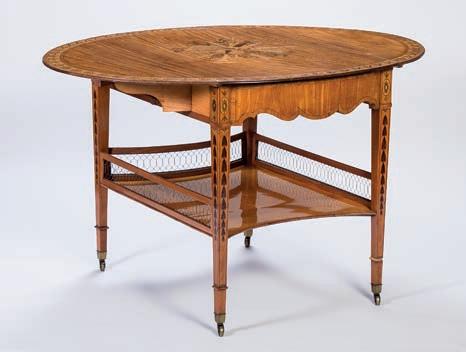
Adam may also have inspired another form in which the rm specialised, the rectilinear box-shaped commode, often made with side-opening doors and designed principally as a vehicle for the display of marquetry.

precedent, persisted in the rm’s output throughout the 1770s and well into the 1780s. is can best be seen in the continued production of the ‘Louis XV’ type of commode, with shaped apron and bombé front (a format popularised by John Linnell and Pierre Langlois in the rst half of the 1760s). Chippendale, by contrast, seems to have abandoned this style entirely around 1770 in favour of a more thoroughgoing neoclassicism.
A variation on this theme in the same period appears in commodes of basically rectangular form, but with serpentine fronts, tted either with cupboard doors or drawers framed by bold uted angles.
e French in uence was also expressed in two other furniture types, both a speciality of the rm. Corner cupboards (‘ecoinears’) were a staple of French furniture production through most of the 18th century, but uncommon in English furniture. ey appear with considerable frequency in the rm’s output, generally with a commode en suite. Upright cabinets, a great number of which were made by the partners, also derive from French precedent and function as secretaires, cupboards or chests of drawers.

On December 31, 1799, some 19 years after the intended expiry of the partners’ original articles of partnership, a new agreement was signed detailing the dissolution of the
Right Side table, one of a pair, made for the Earl of Kerry, 1769–1771 (Lady Lever Art Gallery)
Left Commode, c. 1760–1770, pine veneered with satinwood and mahogany, image courtesy of Metropolitan Museum of New York

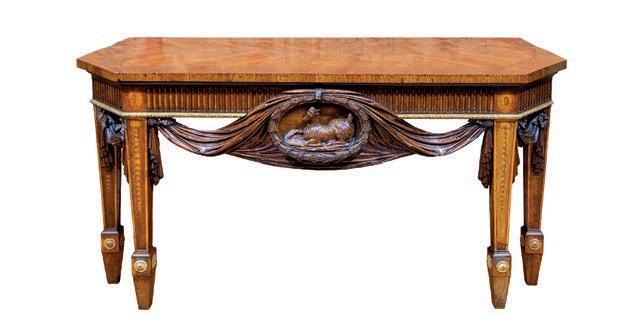
As well as marquetry, the firm’s ability to produce carving of the highest quality – whether for pier glasses, tables, picture frames, case or seat furniture – remained central to their output. This continued even after the rococo style, with its overwhelming emphasis on fluent naturalistic carving, had fallen out of fashion.
Ince (whose designing skills had been nurtured in the rococo) undoubtedly played the leading part in ensuring these skills continued into the neoclassical.

Partly in response to the new neoclassical aesthetic adopted by the fashionable world, painted decoration (‘japanned’, as it is described in most of the bills) played an increasingly important part in the firm’s production from the late 1760s, as it did with Chippendale and other leading makers.
While there was no invariable rule, it seems that painted finishes tended to be supplied for the more intimate rooms in a house, especially bedrooms, where painted rather than gilded furniture – chairs and beds in particular – were found. In general, painted furniture was probably more frequently seen in the country than in London.
If a choice had to be made, cost as much as aesthetics no doubt dictated that gilding would be reserved for the principal reception room of a house (whether in London or the country), while less expensive painted finishes would be chosen for other rooms.
Above left Top of the same commode, c. 1760–1770, image courtesy of Metropolitan Museum of New York

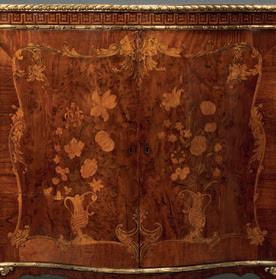
Above Front of the same commode, c. 1760–1770, image courtesy of Metropolitan Museum of New York
partnership. e reasons were no doubt both personal and nancial: the partners were in their sixties, with families requiring support, and the run of good fortune which had kept the partnership solvent had shown signs of coming to an end as the impact of the wars with France took hold.
Identi cation of the rm’s 97 documented commissions has been hampered by the fact that time and chance has dealt heavy blows to many of the families, collections and houses at the heart of them. More research can only highlight the partnership’s proper position in the pantheon of great 18th-century cabinetmakers.
Taken from Industry and Ingenuity: e Partnership of William Ince and John Mayhew by Hugh Roberts and Charles Cator published by Philip Wilson Publishers, £75.

In November, six pieces by Ince and Mayhew went under the hammer at Christie’s as part of the collection of Lord and Lady Weinstock
Assembled at their Wiltshire estate, Bowden Park, Lord and Lady Weinstock’s collection (which realised £4.4m in total) included Old Master paintings, silver, gold boxes, jewellery, porcelain and Chinese works of art, as well as English and European furniture by leading makers. e collector, Arnold Weinstock was born in Stoke Newington in London in 1924 and, despite an unremarkable childhood (his father made ladies coats), Weinstock went on to become Britain’s premier industrialist of the post-war era. rough his vision, energy and astute business acumen, he transformed the General Electric Company (GEC) into one of the nation’s greatest and most successful industrial enterprises, with products ranging from household appliances to radar systems.
In 1949, he married Netta Sobell, the youngest daughter of the entrepreneur Sir Michael Sobell, who had made his fortune manufacturing radios. In 1954, Weinstock joined Sobell’s business, Radio and Allied Industries, and quickly made his mark.
e Weinstocks began collecting in the 1960s following the purchase of their rst apartment in London’s Grosvenor Square in the mid-1960s and Bowden Park in 1967.
Highlights included a pair of George III pier tables
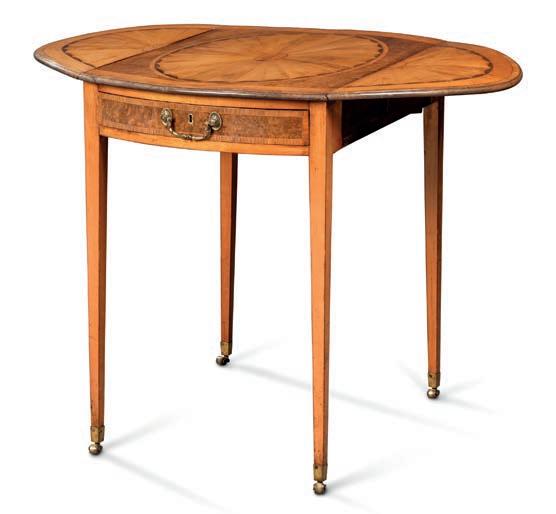
Right A George III marquetry Pembroke table c. 1770, in the manner of Ince & Mayhew sold for £5,000, against an estimate of £2,000-£3,000 at the sale, © Christie’s
Below A pair of George III gilt-metal demi-lune commodes attributed to Ince & Mayhew, c. 17751780, sold for £151,200, against an estimate £100,000-£150,000 at the same sale, © Christie’s Images
Below left A George III satinwood crossbanded mahogany chest by Ince & Mayhew estimated to make £5,000-£8,000, sold for £44,100 at the same sale, © Christie’s Images

from Lady Stern’s collection in 1967. ey were probably commissioned by one of the partnership’s most important clients, the 3rd Earl of Kerry, for Prior Park, his country house on the outskirts of Bath.
In the drawing room at Bowden Park, they sat alongside a pair of George III demi-lune commodes in Ince and Mayhew’s established style of the 1770s.
Also noteworthy was a pair of George III marquetry, giltwood and painted demi-lune console tables, probably supplied by Ince and Mayhew to the 3rd Duke of Dorset around 1777 for a drawing room in his Grosvenor Square house, which he acquired and rebuilt in the fashionable antique style in 1776-1777.
Charles Cator, co-author of Industry and Ingenuity: e Partnership of William Ince and John Mayhew and Christie’s deputy chairman, said: “It was so exciting to bring so many important pieces by Ince and Mayhew


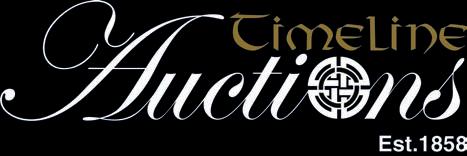


Surrounded by Worcestershire’s rolling Malvern Hills, the Malvern Flea Fair – dubbed the largest event of its type in the UK – takes place on January 15.
Held nine times a year, the event is made up of hundreds of stalls in two halls, with more outside.
Organiser, Helen Yourston, from B2B Events, said: “With everything from furniture, lighting and textiles to clothing, jewellery, teddies and toys it is the ultimate event for the interior designer, up-cycler, crafter and thrift seeker.”
Less than a week later the action heads to Kent for the Detling Antiques and Collectors Fair on January 21-22 where another thrilling array of treasures is on offer.
Above Malvern is the location for one of the rst major events of 2023

Three centuries of decorative shop signs, fitments and merchandising design feature at the first Decorative Antiques and Textiles Fair of 2023.
The winter edition of the popular Battersea Park event, from January 24-29, celebrates antique retail design and commercial signage with a special showcase in the foyer of the purpose-built pavilion in the London venue.
Pieces include painted shop signs, pharmacy jars and product containers as well as commercial display cabinets and advertising.
More than 130 exhibitors take part in the event which is a “must-visit” for collectors and interiors specialists alike.
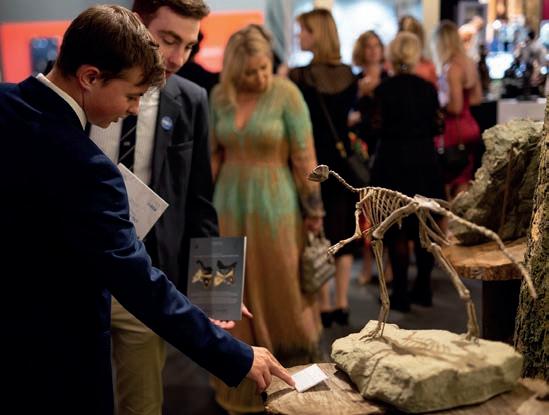
The pavilion’s mezzanine will again host the annual London Antique Rug and Textile Art (LARTA) Fair, the leading event for global rug specialists.
Above A 1930s silver-plated cocktail set including shaker with six cocktail glasses, tray, ice nips and measure, on sale from Linda Jackson Antiques, priced £275

Kick off your new year in style with a visit to the Mayfair Antiques and Fine Art Fair, in the heart of London’s West End, from January 12-15.
The five-star London Marriott Hotel Grosvenor Square is the high-end location for more than 40 fine art and antiques dealers coming together again after last year’s virtual event.
Organiser, Ingrid Nilson, of the Antiques Dealers Fair Limited, said: “It has been tough times for us all, but there are exhibitors keen to get back to this fair and its marvellous location in Mayfair. It is the first major London art and antiques fair of the year and our ninth edition.”

The fair promises a number of top-of-the-range dealers, including clocks from Dorset-based Antiques Roadshow expert Richard Price, vintage watches from London specialist Timewise, ceramics from the capital’s Carolyn Stoddart-Scott, and Chinese porcelain from Santos London.

Above A pair of Chinese export famille rose porcelain chargers, Yongzheng reign (1678-1735), Qing dynasty (1636–1911), c. 1730, from Santos London
After a three-year gap, the celebrated LAPADA Art and Antiques Fair is set to return to London in 2023 – its 30th year – with the precise date yet to be revealed.
Hosted by the London Association of Art and Antiques Dealers, the event takes place over several days in a purposebuilt pavilion in Mayfair’s Berkeley Square, its home since 2009. Described as a “collector’s paradise” the fair hosts more than 100 exhibitors offering pieces ranging from £500 to several million.
Freya Simms, LAPADA CEO, said: “We know how much both dealers and collectors have missed this annual event –watch this space for more details.” For more information visit www.lapadalondon.com
Below e popular event is set to return to London in 2023
Start 2023 by visiting your local antiques fairs. Everything is a one-o , a ordable and eco-conscious




Because this list is compiled in advance, alterations or cancellations to the fairs listed can occur and it is not possible to notify readers of the changes. We strongly advise anyone wishing to attend a fair especially if they have to travel any distance, to telephone the organiser to confirm the details given.
LONDON: Inc. Greater London
Adams Antiques Fairs 020 7254 4054 www.adamsantiquesfairs.com
Adams Antiques Fair, The Royal Horticultural Halls, Elverton Street, SW1P 2QW, Dec 10, Jan 22
Coin and Medal Fairs Ltd. 01694 731781 www.coinfairs.co.uk
London Coin Fair, Holiday Inn Bloomsbury, Coram Street, WC1N 1HT, Dec 11, Jan 8
Etc Fairs 01707 872 140 www.bloomsburybookfair.com Bloomsbury Book Fair, Booker & Turner Suite at Holiday Inn, Coram Street, London, WC1N 1HT, Dec 11, Jan 22
Sunbury Antiques 01932 230946 www.sunburyantiques.com Kempton Antiques Market, Kempton Park Race Course, Staines Road East, Sunbury-on-Thames, Middlesex TW16 5AQ, Dec 13, Jan 10, 31
The Antique Dealers Fair Ltd 01797 252030 www.adfl.co.uk
The Mayfair Antiques & Fine Art Fair, The London Marriott Hotel Grosvenor Square, London W1K 6JP, Jan 12-15
The Decorative Fair 020 7616 9327
wwwdecorativefair.com
The Decorative Fair, Evolution London, Battersea Park, London, SW11 4NJ, Jan 24-29
SOUTH EAST & EAST ANGLIA: including Beds, Cambs, Essex, Hertfordshire, Kent, Norfolk, Suffolk, Surrey, Sussex.
Guildford Antiques & Brocante Street Market
07514 680872
High Street, Surrey, GU1 4XB, Dec 11
B2B Events, 01636 676531 www.b2bevents.info Detling International Antiques, Vintage and Collectors’ Fair, Kent County Showground, Detling, Maidstone, Kent, ME14 3JF, Jan 21, 22
Dovehouse Fine Antiques Fair 07952689717 dovehousefineantiquesfairs.com Dorking Halls, Reigate Road, Dorking, Surrey, RH4 1SG, Jan 23
IACF 01636 702326. www.iacf.co.uk.
Ardingly International Antiques & Collectors Fair, South of England Showground, Ardingly, Nr Haywards Heath, West Sussex, RH17 6TL, Jan 17,18
Love Fairs 01293 690777 www.lovefairs.com Lingfield Antiques, Collectables and Vintage Market, Lingfield Park Racecourse, Racecourse Road, Lingfield, Surrey, RH7 6PQ, Jan 29
Marcel Fairs 07887648255 www.marcelfairs.co.uk Antique and Collectors Fair, Sarratt Village Hall, The Green, Rickmansworth, Herts WD3 6AS, Dec 11, Jan 8 Antique and Vintage Fair –Eagle Farm Road, Biggleswade, Bedfordshire, SG18 8JH, Dec 18, Jan 15
St Ives Antiques Fair
The Burgess Hall (One Leisure), Westwood Road, St Ives, Cambs, PE27 6WU, Jan 1
including Berkshire, Buckinghamshire, Cornwall, Devon, Dorset, Gloucestershire, Hampshire, Isle of Wight, Oxfordshire, Somerset, Wiltshire.
AFC Fairs 07887 753956 www.antiquefairscornwall.co.uk Lostwithiel Antique & Collectors Fair, Lostwithiel Community Centre, Pleyber Christ Way, Lostwithiel, Cornwall, PL22 0HE, Dec 11, Jan 8
Pensilva Antiques Fair, Millennium House, Princess Road, Liskeard, Cornwall, PL14 5NF, Dec 18, Jan 29
Arun Fairs 07563 589725 Emsworth Antiques and Collectors Fair, Emsworth Community Centre., North Street, Emsworth, Hampshire, PO10 7DD, Dec 11
Eastleigh Antiques & Collectors Fair
www.grandmasatticfairs.co.uk Place Leisure Eastleigh, Passfield Ave, Eastleigh, Hampshire, SO50 9NL, Jan 1
Gloucestershire Antiques & Collectables Market 01264 393225
The Corn Hall, 26 Market Place, Cirencester, Gloucestershire, GL7 2NW, Dec 9
Jay Fairs 01235 815633
Benson Antiques and Collectors Fair, Benson Parish Hall, Sunnyside, Benson, Nr. Wallingford, Oxfordshire, OX10 6LZ, Dec 18
SP Fairs 01278 784912 www.sheptonflea.com The Shepton Flea Market The Royal Bath and West Showground, Shepton Mallet, Somerset, BA4 6QN, Dec 11, Jan 22
EAST MIDLANDS
including Derbyshire, Leicestershire, Lincolnshire, Northamptonshire, Nottinghamshire, Rutland.
Stags Head Events 07583 410862 www.stagsheadevents.co.uk Bank Holiday Antiques & Vintage Fair, Hood Park Leisure Centre Ashby-de-la-Zouch, LE65 1LS, Jan 1
Antiques and Vintage Fair Coalville Leisure Centre Stephenson Way Coalville, Leicester, LE67 3FE, Jan 28
WEST MIDLANDS
including Birmingham, Coventry, Herefordshire, Shropshire, Staffordshire, Warwickshire, Worcestershire
B2B Events 07774 147197 or 07771 725302 www.b2bevents.info Malvern Flea & Collectors Fair Three Counties Showground, Malvern, Worcestershire, WR13 6NW, Jan 15
01584 873634 www.continuityfairs.co.uk
The International Bingley Hall Antique Home & Vintage Market, Staffordshire County Showground, Weston Road, Stafford, ST18 0BD, Dec 10-11
Midland Vintage and Antique Fair
0121 784 1581
Antique and Vintage Fair, Fentham Hall, Marsh Lane, Hampton-in-Arden, West Midlands, B92 0AH, Jan 7
NORTH
including Cheshire, Cumbria, Lancashire, Northumberland, Tyne and Wear, Yorkshire.
Cooper Events, 01278 784912 www.cooperevents.com
The Pavilions of Harrogate Decorative, Antiques and Art Fair, The Pavilions of Harrogate, Railway Road, Harrogate, North Yorkshire, HG2 8QZ, Jan 27
Jaguar Fairs 01332 830444 www.jaguarfairs.com
The Great Wetherby, Racecourse Antiques Fair, Wetherby Racecourse, Wetherby, West Yorkshire, LS22 5EJ, Jan 7-8
Glasgow, Antique, Vintage & Collectors Fair
07960 198409
31 Bellahouston Drive, Glasgow, G52 1HH, Jan 15
Brafa Art Fair
Brussels Expo I Heysel, Halls 3 & 4 (entrance) Place de Belgique 1, 1020 Brussels, Belgium, Jan 29 to Feb 5

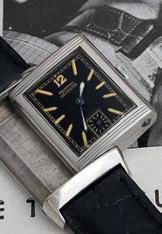
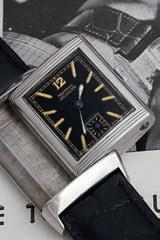
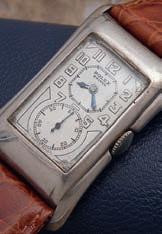


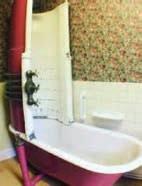
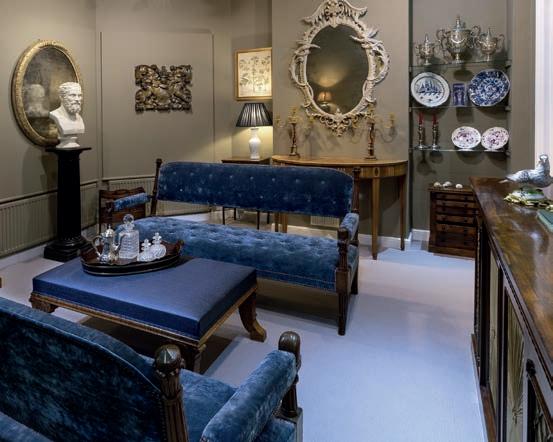
Omega Seamasters and pre-1980s Omegas in general.
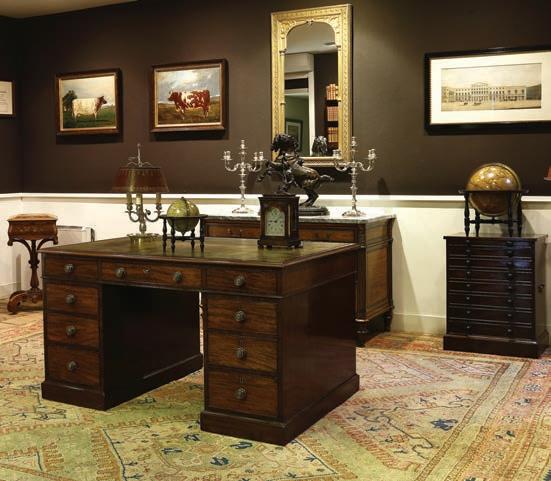
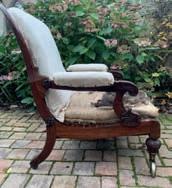
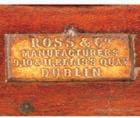
IWC and Jaeger LeCoultres, all styles. Looking for Reversos. American market filled and 14k pieces possibly, at the right price.
Breitling Top Times, Datoras and 806 Navitimers.
Pre-1960s Rolex models, with a focus in pre-war tanks, tonneaus etc. Gold or silver/steel. Also World War I Rolex 13 lignes etc. Princes.

Signed
For East Yorkshire town house renovation.
Labelled/ stamped branded furniture from Georgian to Victorian, eg Thomas Butler, Morgan & Sanders, J Alderman, Ross of Dublin (pictured), Gregory Kane, Wilkinson of Ludgate Hill, Robert James of Bristol, James Winter, W Priest, Samuel Pratt and many others. Tables all types, chairs, bookcases, , Davenport. mirrors etc. Campaign shower.
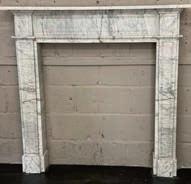

Georgian chamber horse exercise chair (pictured)
Regency,


Unusual Georgian to William IV architectural features eg doors, door frames, over door pediments. 18th century staircase spindles and handrail needed. Anything Georgian or Regency with lots of character considered.
Rectangular Georgian fanlight.
Four identical reclaimed Georgian wooden sash windows with boxes, approx 60 high x 37 wide.
Marble fire surrounds from 1750 to 1850ish. White or coloured. Bullseyes, William IV styles etc. Brass Regency reeded fire insert and Victorian griffin grate (pictured)
Human skull, stuffed crocodile/ alligator. Grand tour souvenirs.
vintagejewellery@yahoo.co.uk or tel 07958 333442
Longines, Tudors and Zeniths, pre-1970. Even basic steel models in nice condition. All the quirky oddities like Harwoods, Autorists, Wig Wag, Rolls etc, and World War I hunter and semi-hunter wristwatches.
All the quirky oddities like Harwoods, Autorists, Wig Wag, Rolls etc, and World War I hunter and semi-hunter wristwatches.
Early, pre-war ladies’ watches also wanted by Rolex, Jaeger LeCoultre etc. Prefer 1920s/30s deco styles, but early doughnuts also considered.
Early, pre-war ladies’ watches also wanted by Rolex, Jaeger LeCoultre etc. Prefer 1920s/30s deco styles, but early doughnuts also considered.
Yorkshire based, but often in London and can easily collect nationwide.
Yorkshire based, but often in London and can easily collect nationwide.
vintagejewellery@yahoo.co.uk or tel 07958 333442
Because this list is compiled in advance, alterations or cancellations to the auctions listed can occur and it is not possible to notify readers of the changes. We strongly advise anyone wishing to attend an auction especially if they have to travel any distance, to telephone the organiser to confirm the details given.
LONDON: Inc. Greater London
Bonhams
101 New Bond St, London, W1S 1SR, 020 7447 7447 www.bonhams.com
Old Master Paintings, Dec 7 500 Years of European Ceramics, Dec 7 Fine and Rare Wines, Dec 8 Antiquities, Dec 8 Prints and Multiples, Dec 13 Sir Terence Conran – The Contents of Barton Court, Dec 14 Fine Watches, Dec 14
The Bond Street Sale: Important Collectors’ Motor Cars, Dec 14
Montpelier St, Knightsbridge, London, SW7 1HH, 020 7393 3900 www.bonhams.com
Luxury Gift Sale (Online), ends Dec 9
Chiswick Auctions
1 Colville Rd, Chiswick, London, W3 8BL, 020 8992 4442 www.chiswickauctions.co.uk
A Sense of Wonder - The Curious Robot World of Matt Dixon courtesy of Pitzhanger Manor & Gallery (Online) ends Dec 11 Design and Modern Contemporary, Dec 13 Modern British and Irish Art, Dec 13 Photobooks, Dec 14
NASA: Celebrating 50 Years of Space Exploration, Dec 14 Old Master Paintings & Works on Paper, Jan 11 Interiors Homes & Antiques Jan 18 Erotica. Objects of Desire Jan 18 Fine & Oriental Rugs & Carpets, Jan 25
Christie’s
8 King St, St. James’s, SW1Y 6QT, 020 7839 9060 , www.christies.com
Old Masters Evening Sale, Dec 8 Macabre – Fantasized by Benjamin Spiers (Online) ends Dec 9
The Collection of Marvin L. Colker
(Online) ends Dec 12
Valuable Books and Manuscripts, Dec 14
British and European Art, Pt 1, Dec 15
British and European Art (Online), ends Dec 16
Elmwood’s
101 Talbot Road London, W11 2AT 0207 096 8933 www.elmwoods.co.uk
Important Jewellery Sale Dec 6 Jewellery Sale, Dec 8 Luxury Gift Sale Dec13 Fine Jewellery Sale Dec15, 20, Jan 5 New Year Jewellery Sale Jan 1
Forum Auctions
220 Queenstown Road, London SW8 4LP, 020 7871 2640 www.forumauctions.co.uk
Books and Works on Paper (Online), Dec 8, 15, Jan 12, 19
Forum Auctions @ Artsy: Late Autumn, Dec 9 Best of British, Dec 14
The Architectural Library of the late Derek Gibson, Part 2 (Online) Dec 15
Fine Books, Manuscripts and Works on Paper, Jan 26
Hansons Auctioneers
The Normansfield Theatre, 2A Langdon Park, Teddington, TW11 9PS, 0207 018 9300 www.hansonsauctioneers.com
December Winter Fine Art & Antiques Auction, Dec 17
Lyon & Turnbull
Mall Galleries, The Mall, St. James’s, London SW1Y 5AS, 0207 930 9115 www.lyonandturnbull.com Contemporary and Post-War Art, Jan 11
Noonans
16 Bolton St, Mayfair, W1J 8BQ, 020 7016 1700 www.noonans.co.uk Orders, Decorations, Medals and Militaria, Dec 7, Jan 18 British Tokens, Tickets and Passes, Jan 24
30 Berkeley Square, London, W1J 6EX, 020 7318 4010 www.phillips.com New Now, Dec 8 Evening and Day Editions, Jan 18
Knights Hill, Norwood, London, SE27 0JD, 020 8761 2522 www.roseberys.co.uk Design Since 1860, Dec 7 Modern British and 20th-Century Art, Dec 8
Traditional and Modern Home, Dec 14 Prints (online), Jan 9 - 26
Sotheby’s
New Bond St, W1S 2SQ, 020 7293 5000 www.sothebys.com Old Masters Evening Collection, Dec 7 The Personal Collection of the late Sir Joseph Hotung, Dec 7-8 Old Masters Day (Online), ends Dec 8 Old Master Prints (Online), ends Dec 9 Finest and Rarest Wines (Online), ends Dec 13 19th and 20th Century Sculpture (Online), Dec 9-14 European and British Art (Online), Dec 9-14
My Sporting Life (Online), ends Dec 15
Jack Coulter “You Can’t Change the Music of Your Soul” (Online), ends Dec 15
Small Wonders: Early Gems and Jewels (Online) Dec 9-15 Fine Japanese Prints (Online), Dec 9-16 STONE IV Jan 6-17
Emma Hawkins: A Natural World, Jan 9
SOUTH EAST AND EAST
ANGLIA: Inc. Bedfordshire, Cambridgeshire, Essex, Hertfordshire, Kent, Norfolk, Suffolk, Surrey, Sussex
Bishop and Miller
19 Charles Industrial Estate, Stowmarket, Suffolk, IP14 5AH, 01449 673088
bishopandmillerauctions.co.uk Selected Antiques, Dec 7 Jewellery and Silver, Dec 14
Christmas Auction, Dec 1 Fine Watches, Dec 1 100 Objects, Dec 2
Military and Medals, Dec 8 Music (Online) Ends Dec 11
Selected Antiques & Toys, Jan 11 Jewellery, Jan 18 Oak Interior, Jan 25-26
Bishop
Unit 12 Manor Farm, Glandford, Holt, Norfolk, NR25 7JP
bishopandmillerauctions.co.uk Wine and Whisky, Dec 9 Folk Function & Frivolity, Jan 11
Newpound, Wisborough Green, West Sussex, RH14 0AZ, 01403 700858 www.bellmans.co.uk
European Ceramics From the collection of the late Buck and Jean Harvey, Dec 7
Printed Books, Manuscripts & Maps, Dec 8
European Ceramics, Silver, Watches, Jewellery & Interiors, Jan 17
The Friday 500, Jan 20
The Auction Gallery, Lower Lake, Battle, East Sussex,TN33 0AT, 01424 772 374
www.burstowandhewett.co.uk
Luxury Watches and Clocks, Fine Jewellery and Silver, Dec 14 Antiques, Ceramics, Oriental, Furniture, Etc., Dec 15
Fine Art and Sculpture, Dec 15
Cheffins Clifton House, Clifton Road, Cambridge, CB1 7EA 01223 213343, www.cheffins.co.uk
The Fine Sale, Dec 7-8 Coins (Timed Online), Dec 16 -Jan 5
The Interiors Sale, Jan 12
The Old School House, Peddars Lane, Beccles, Suffolk, NR34 9UE, 01502 713490
www.durrantsauctions.com
Silver and Jewellery with Watches and Coins, Dec 9 Antiques and Interiors, Jan 6
A Private Collection of Fishing Items, Jan 13
Ewbank’s
London Rd, Send, Woking, Surrey, 01483 223 101 www.ewbankauctions.co.uk
Jewellery, Watches and Coins, Dec 7
Silver and Fine Art, Dec 8 Antiques, Books, Clocks & Antique Furniture, Dec 9
Fine Wines and Spirits, Dec 15 Trading Cards: Pokemon and More, Dec 16 Antique and Collector’s inc. Silver and Jewellery, Jan 4 Vintage Posters, Jan 6
Excalibur Auctions Limited Unit 16 Abbots Business Park Primrose Hill Kings Langley, Hertfordshire, WD4 8FR 020 3633 0913 wwwexcaliburauctions.com Marvel, DC and Independent Comic Books, Dec 10
TOGMAC - Collection of Model Cars, Part 2, Jan 14
Toys and Model Railways Collectors Sale, Jan 28
Gorringes
15 North Street, Lewes, East Sussex, BN7 2PE, 01273 472503 www.gorringes.co.uk Weekly Fine Antiques Sale, Dec 5, 12, 19
Winter Fine Sale, Dec 13 Bank Holiday Sale (Timed Online), Jan 2
John Nicholson’s
Longfield, Midhurst Road, Fernhurst, Haslemere, Surrey, GU27 3HA, 01428 653727 www.johnnicholsons.com General Auction, Dec 10 Oriental and Fine Antique Auction, Dec 19
A Single Owner Collection of Fine Paintings, Dec 21 Oriental and Islamic Works of Art Jan 17
Antiques Jan 18 Books Jan 24 Picture Sale Jan 25
Lacy Scott & Knight
10 Risbygate St, Bury St Edmunds, Suffolk, IP33 3AA, 01284 748 623www.lskauctioncentre.co.uk
Medals, Militaria and Country Pursuits, Dec 9
Wine, Port and Spirits, Dec 9 Fine Art and Antiques, Dec 10 Toys and Models, Dec 16 Home and Interiors, Jan 14
Lockdales Auctioneers
52 Barrack Square, Martlesham Heath, Ipswich, Suffolk, IP5 3RF
01473 627110 www.locakdales.com Toys, Antiques, Books and Ephemera, Dec 6-7 Coins and Collectables, Jan 18-19
Hawthorn House, East Street, Farnham, Surrey, GU9 7SX, 01252 203020 www.parkerfineartauctions.com Auction of Fine Art, Dec 8, Jan 12
Reeman Dansie
8 Wyncolls Road, Severalls Business Park, Colchester, Essex, CO4 9HU, 01206 754754 www.reemandansie.com
Christmas Presents (Timed Online), Ends Dec 4
Cambridge Road, Stansted Mountfitchet, Essex, CM24 8GE, 01279 817778 www.sworder.co.uk Fine Interiors, Dec 6-7 Homes and Interiors, Dec 13 Homes and Interiors (Online), Jan 10, 31
Design (Two-Day Sale), Jan 17-18 Jewellery, Jan 25
SOUTH WEST: Inc. Berkshire, Buckinghamshire, Cornwall, Devon, Dorset, Gloucestershire, Hampshire, Isle of Wight, Oxfordshire, Somerset, Wiltshire
Bearnes Hampton & Littlewood St. Edmund’s Court, Okehampton Street, Exeter EX4 1DU O1392 41310 www.bhandl.co.uk Antiquarian Book Sale, Dec 6 Fine Art and Antiques sale, Jan 17-18
The Old Boys School, Gretton Rd, Winchcombe, Cheltenham, GL54 5EE 01242 603005 www.bespokeauctions.co.uk Fine Jewellery and Watches, Dec 15 Collectables including, Jewellery, Militaria, Silver and Stamps, Jan 23
Chippenham Auction Rooms
www.dominicwinter.co.uk Printed Books, Maps and Documents, Dec 14 19th & 20th Century Literature, Modern First Editions, Children’s Books and Playing Cards, Dec 15 Printed Books, Maps and Documents, Jan 25
Auction Salerooms, Vicarage Street, Frome, Somerset BA11 1PU, 01373 462 257 wwwdoreandrees.com Fine Jewellery, Dec 6 Automobilia, Dec 13 Select Interiors – Including Furniture, Pictures, Silver, Jewellery and Asian Art, Jan 25
Donnington Priory Newbury, Berkshire RG14 2JE 01635 553 553 www.dreweatts.com
Rare Wine and Spirits, Dec 8 Old Master, British and European Art, Dec 14 Interiors, Jan 17-18
Duke’s
Toovey’s
Spring Gardens, Washington, West Sussex, RH20 3BS, 01903 891955
www.tooveys.com Wristwatches and Pocket Watches, Clocks and Barometers, Cameras and Scientific Instruments, Dec 8 Die-cast Model Vehicles and Accessories, Die-cast Model Figures and Accessories, Model Trains and Railways, Tinplate and Mechanical Toys and Models, Dolls, Dolls’ Houses and Accessories, Teddy Bears and Other Soft Toys, Miscellaneous Toys and Games, Antiquarian and Collectors’ Books, Dec 13
T.W. Gaze
Diss Auction Rooms, Roydon Road, Diss, Norfolk, IP22 4LN, 01379 650306. www.twgaze.com
Blyth Barn Furniture Auction, Dec 6, 13, 20, Jan 3,10, 17, 24, 31
Christmas Sale Special, Dec 8 Christmas Gifts, Dec 9 Toys, Dec 15
Antiques and Interiors, Dec 16, 29, Jan 6, 13, 20, 27
Unit H, The Old Laundry. Ivy Road, Chippenham, Wiltshire. SN15 1SB, 01249 444544 chippenhamauctionrooms.co.uk Antiques, Silver, Jewellery and Objets d’art, Dec 10 Enamel Signs, Shop Display, Fairground, Petroliana, Arcade Games, Vending Machines and other Early Advertising, Jan 14
David Lay Auctions
Penzance Auction House , Alverton, Penzance, Cornwall 01736 361414, TR18 4RE www.davidlay.co.uk Oak & Country, Jan12 Cornish Art & Fine Art, Jan 26- 27
Dawsons
Unit 8 Cordwallis Business Park, Clivemont Rd, Berkshire, SL6 4DP, 01628 944100 www.dawsonsauctions.co.uk Fine Art, Antiques & Jewellery, Dec 15
The Trevor Hughes Selected Vinyl and Poster Collection: Chapter Two, Dec 16 Jewellery, Silver and Watches, Jan 19 Fine Art, Antiques and Asian Art, Jan 26
Dominic Winter
Mallard House, Broadway Lane, South Cerney, Cirencester, Gloucestershire, GL7 5UQ, 01285 860006
Brewery Square, Dorchester, Dorset, DT1 1GA, 01305 265080 www.dukes-auctions.com Jewellery and Watches, Dec 8 Asian Art, Dec 9 Interiors, Dec 15
East Bristol Auctions
Unit 1, Hanham Business Park, Memorial Road, Hanham, BS15 3JE, 0117 967 1000 www.eastbristol.co.uk Antique & Vintage Silver, Dec 8, Jan 4
Antique & Vintage Jewellery, Watch & Gold, Jan 5 Antique & Collectables, Jan 9, 10
Gardiner Houlgate
9 Leafield Way, Corsham, Wiltshire, SN13 9SW, 01225 812912
www.gardinerhoulgate.co.uk
The Guitar Sale, Dec 7
Entertainment Memorabilia; Guitar Amps and Effects, Dec 8 Musical Instruments, Dec 9 Antiques & Vintage, Jan 19
Greenslade Taylor Hunt
The Octagon Salerooms, 113a East Reach, Taunton, Somerset, TA1 3HL 01823 332525, www.gth.net
General Sale, Dec 15, Jan 26 Antique and 20th-Century Sale, Jan 12
Because this list is compiled in advance, alterations or cancellations to the auctions listed can occur and it is not possible to notify readers of the changes. We strongly advise anyone wishing to attend an auction especially if they have to travel any distance, to telephone the organiser to confirm the details given.
Kinghams
10-12 Cotswold Business Village, London Road, Moreton-in-Marsh, Gloucester, GL56 0JQ, 01608 695695 www.kinghamsauctioneers.com Rene Lalique and his Contemporaries, Dec 8 Fine and Decorative Arts, Dec 9-10 Cotswold Interiors and Collectibles, Jan 20
Lawrences Auctioneers Ltd. Crewkerne, Somerset, TA18 8AB, 01460 703041 www.lawrences.co.uk Silver and Vertu, Jan 17 Pictures, 19th/20th-Century Design and Ceramics, Jan 18 Jewellery and Watches, Jan 19 Furniture, Clocks, Rugs and Collectors’ Items, Jan 20
Mallams Oxford
Bocardo House, St Michael’s St, Oxford, OX1 2EB 01865 241358 www.mallams.co.uk Modern Art, Dec 7 Design, Dec 8
Mallams Cheltenham 26 Grosvenor St, Cheltenham. Gloucestershire, GL52 2SG 01242 235 712 www.mallams.co.uk Country House Sale, Jan 11
Mallams Abingdon Dunmore Court, Wootten Road, Abingdon, OX13 6BH, 01235 462840 www.mallams.co.uk
Fine Toys and Collectors Sale, Dec 12
Moore Allen & Innocent
Burford Road Cirencester, Gloucestershire GL7 5RH, 01285 646050 www.mooreallen.co.uk Vintage and Antiques Jan 11-12
Philip Serrell
Barnards Green Rd, Malvern, Worcestershire. WR14 3LW, 01684 892314 www.serrell.com Interiors, Dec 8 Fine Art and Antiques, Jan 12
Bath Rd, Trading Est, Bath Rd, Stroud, Gloucestershire, GL5 3QF 01453 873 800 www.stroudauctions.co.uk Jewellery, Watches, Silver, Clocks, Coins and Fine Wines and Spirits, Dec 7-8
Toys, Vinyl Records, Musical Instruments, Asian & Tribal Art, Pictures & Paintings, Books, Ephemera and Stamps, Jan 11-12
Special Auction Services Plenty
Close, Newbury, Berkshire, RG14 5RL . 01635 580 595 www.specialauctionservices. Pre Loved Christmas Antiques and Collectables Auction, Dec 6 The Susan Collard Collection, Dec 8 Trains Galore, Dec 13 Photographica and Camera, Dec 20
Antiques and Collectables, Jan 4 Popular Diecast Toys and Trains Auction, Jan 24 Jewellery, Watches, Coins and Silver Auction, Jan 26 Music and Entertainment Auction, Jan 31
The Pedestal
The Dairy, Stonor Park, Henley-onThames, Oxfordshire RG9 6HF, 01491 522733 www.thepedestal.com Design For Living, Dec 6 Winter Auction (Timed), Jan 10-24
Wessex Auction Rooms
Westbrook Far, Draycot Cerne Chippenham, Wiltshire, SN15 5LH, 01249 720888 www.wessexauctionrooms.co.uk
Vinyl Records, CDs and Memorabilia, Dec 8-9 Antiques, Collectables and Furniture, Dec 10
Woolley & Wallis
51-61 Castle Street, Salisbury, Wiltshire, SP1 3SU, 01722 424500 www.woolleyandwallis.co.uk Modern and 20th-Century Art, Dec 14
Adornment: The Romy Rey Collection, Jan 4 Furniture, Works of Art and Clocks, Jan 18 Silver & Objects of Vertu, Jan 24
Tabernacle Road, Wotton-underEdge, Gloucestershire, GL12 7EB, 01453 708260 wottonauctionsrooms.co.uk Pre-Christmas Sale, Dec 12
EAST MIDLANDS: Inc. Derbyshire, Leicestershire, Lincolnshire, Northamptonshire, Nottinghamshire, Sheffield
The Derby Auction House, Chequers Road, Derby, DE21 6EN, 01332 210 000 www.bamfords-auctions.co.uk
The Bakewell Country Home Interiors and Collectors Auction Including Furniture, Ceramics, Textiles, Jewellery, Contemporary Design etc, Dec 7
The Two-Day Collector’s Grand Tour: Curated Objects and Curiosities, Dec 8-9 Medals, Militaria and Firearms, Dec 12
The Christmas Toy, Juvenalia, Advertising and Collectors Auction including Comic Books, Dec 13 Antiques, Interiors, Estates and Collectables Auction, Dec 14 Three-Day Fine Art and Antiques Auction Jan 19, 20, 23
The Mill, Great Bowden Road, Market Harborough, LE16 7DE 01858 410414
Antiques & Collectors, Dec 20 Scale Model Railways and Live Steam, Jan 24 Jewellery and Watches Jan 31
The Bourne Auction Rooms, Spalding Road, Bourne, Lincolnshire PE10 9LE 01778 422686
www.goldingyoung.com Bourne Collective Sale, Dec 14-15 Bourne Toy, Transport & Automobilia Sale, Jan 4
The Grantham Auction Rooms, Old Wharf Road, Grantham, Lincolnshire NG31 7AA, 01476 565118
www.goldingyoung.com Grantham Collective Sale, Dec 7-8
The Lincoln Auction Rooms, Thos Mawer House, Station Road North Hykeham, Lincoln LN6 3QY, 01522 524984
www.goldingyoung.com Lincoln Collective Sale, Dec 21-22
Heage Lane, Etwall, Derbyshire, DE65 6LS 01283 733988
www.hansonsauctioneers.co.uk Music and Film Auction, Dec 8 20th-Century Design, Dec 13 Winter Fine Art Auction ,Jan 9 Two-Day Specialist Toys, Models, Live Steam & Video Game Auction, Jan 26
WEST MIDLANDS: Inc. Birmingham, Coventry, Herefordshire, Shropshire, Staffordshire, Warwickshire
Cuttlestones Ltd
Wolverhampton Auction Rooms, No 1 Clarence Street, Wolverhampton, West Midlands, WV1 4JL, 01902 421985 www.cuttlestones.co.uk Specialist Collectors’, Dec 7
Cuttlestones Ltd
Pinfold Lane, Penkridge Staffordshire ST19 5AP, 01785 714905 www.cuttlestones.co.uk Antiques and Interiors, Dec 15
Antiques & Interiors, Jan 12, 26
Augusta House, 19 Augusta Street, Hockley, Birmingham, B18 6JA, 0121 212 2131 www.fellows.co.uk
Antiques, Silver and Collectables, Dec 12
Jewellery and Costume Jewellery, Dec 13
Pawnbrokers, Jewellery and Watches, Dec 15
The Gemstone Sale, Dec 19 Jewellery, Dec 20
Jewellery, Jan 10-11, 17-18, Luxury Watches, Jan 12 Gemstones, Jan 19
Jewellery and Costume Jewellery, Jan 31-Feb 1
Mill Race Lane, Stourbridge, DY8 1JN, 01384 444140 www.fieldingsauctioneers.co.uk
The Christmas Sale Incl. Jewellery, Silver and Watches, Dec 8-9 Antiques and Interiors, Jan 12-13
Bowmen Way, Battlefield, Shrewsbury, Shropshire, SY4 3DR, 01743 450700 www.hallsgb.com/fine-art.com
The Christmas Auction, Dec 7 Antiques and Interiors, Jan 11
Bishton Hall, Wolseley Bridge, Stafford, ST18 0XN, 0208 9797954 www.hansonsauctioneers.co.uk Fine Art and Antiques Auction, Dec 14
The Library Auction, Dec 15 New Year Georgian Auction at Bishton Hall: A Celebration of an Era, Jan 10
The Cobridge Saleroom, 271 Waterloo Road, Cobridge, Stoke-on-Trent, Staffordshire, ST6 3HR, 01782 212489 www.potteriesauctions.com Year End Auction. 20th-Century British Pottery, Collectors Items, Household Items, Antique and Quality Furniture, Dec 9
NORTH: Inc. Cheshire, Co. Durham, Cumbria, Humberside, Lancashire, Greater Manchester, Northumberland, Tyne & Wear, Sheffield, Yorkshire
Adam Partridge
Withyfold Drive, Macclesfield, Cheshire, SK10 2BD 01625 431 788
www.adampartridge.co.uk Three-Day Auction of Boutique, Silver, Jewellery & Watches, Toys, Wines & Spirits with Furniture & Interiors, Dec 6-8 Stamps, Antiques and Collectors Items, Jan 18- 20
Adam Partridge
The Liverpool Saleroom, 18 Jordan Street, Liverpool, L1 OBP 01625 431 788
www.adampartridge.co.uk
Toys, Wines & Spirits with Antiques & Collectors’ Items, Dec 6-7 Stamps, Antiques and Collectors Items, Jan 5- 6
Anderson and Garland
Crispin Court, Newbiggin Lane, Westerhope, Newcastle upon Tyne, NE5 1BF, 0191 432 1911 www.andersonandgarland.com Homes and Interiors, Dec 13, Jan 10
The Pictures Auction, Dec 8 The Militaria Auction, Dec 15 The Modern Pictures Auction, Jan 12
The Comics Auction, Jan 18-19 Homes & Interiors, Jan 24
The Gallery Saleroom, Scarborough, North Yorkshire, YO11 1XN, 01723 507 111 www.davidduggleby.com Musical and Scientific Instruments, Cameras and Maritime, Dec 16
Jewellery and Watches, Jan 12 Decorative Antiques and Collectors, Jan 13 Collectors and Clearance, Jan 13
The Saleroom, York Auction Centre, Murton, York YO19 5GF,01904 393 300 www.dugglebystephenson.com Jewellery and Watches, Dec 8 Fine and Affordable Art, Dec 8 The Country House Sale, Dec 9 Collectors and Clearance, Dec 14
Elstob & Elstob
Ripon Business Park, Charter Road, Ripon, North Yorkshire HG4 1AJ, 01677 333003 www.elstobandelstob.co.uk Fine Art and Antiques, Dec 16 Antiques Jan 4
Omega Auctions Ltd
Sankey Valley Industrial Estate, Newton-Le-Willows, Merseyside WA12 8DN, 01925 873040
www.omegaauctions.co.uk Antiques and Collectables with Wines and Spirits, Dec 6 TV, Film and Sporting Memorabilia with Comics, Dec 6
The Bob Solly Collection Part 4, Jan 10
Soul, Jazz and Blues Vinyl Sale, Jan 10 Vinyl Highlights Sale, Jan 24
Sheffield Auction Gallery
Windsor Road, Heeley, Sheffield, S8 8UB, 0114 281 6161
www.sheffieldauctiongallery.com Collectable Comics and Movie Memorabilia, Dec 8
Silver, Jewellery and Watches, Dec 8, Jan 5, 19
Antiques and Collectibles, Dec 9, Jan 6
Model Railway, Jan 5 Specialist Collectable Toys, Jan 19
The Auction Centre, Harmby Road, Leyburn, North Yorkshire, DL8 5SG. 01969 623780 www.tennants.co.uk Militaria and Ethnography, Dec 7
Toys & Models, Sporting and Fishing, Dec 9 Antiques and Interiors, Dec 16, Jan 7, 27
Country House, Jan 13-14 Jewellery, Watches and Silver, Jan 14
The David Stather Library, Jan 25
The Auction Centre, Marconi Road, Burgh Road Industrial Estate, Carlisle, Cumbria, CA2 7NA, 01228 535 288 www.thomsonroddick.com Pre-Christmas Sale of Antiques, Silver, Jewellery & Works of Art, Dec 6
Antiquarian and Collectable Books and Related Items, Dec 16
Vectis Auctions Ltd
Fleck Way, Thornaby, Stockton on Tees, TS17 9JZ, 01642 750616 www.vectis.co.uk Dolls and Teddy Bears, Dec 7 Diecast and Tinplate, Dec 13 Matchbox, Dec 14 General Toys, Dec 15, Jan 25 Model Trains, Dec 16, Jan 20 Specialist Diecast Sale, Jan 10-11 Military, Civilian Figures, Equipment and Accessories, Jan 23-24
Matchbox Models of Yesteryear, Jan 26
TV and Film-Related, Jan 31
Victoria Gallery, Market St, Nantwich, Cheshire CW5 5DG 01270 623 878 www.wilson55.com Modern and Contemporary Art, Dec 7
Northern Art, Dec 8 Fine & Classic Interiors, Jan 12 Modern Interiors & Collectables, Jan 26
Lyon & Turnbull
33 Broughton Place, Edinburgh. EH1 3RR, 0131 557 8844 www.lyonandturnbull.com Jewellery, Dec 7 Watches, Dec 7
Scottish Paintings and Sculpture, Dec 8 Prints and Multiples. Jan 11 The Hancock Collection - British Art and Design, Jan 25
31 Meiklewood Road, Glasgow, G51 4GB, 0141 810 2880 www.mctears.co.uk Coins and Banknotes, Dec 7, Jan 12
Jewellery, Dec 7, Jan 12 Watches, Dec 7, 12
The Scottish Contemporary Art Auction, Dec 8, Jan 22 Whisky, Dec 9, Jan 20 Antiques and Interiors, Jan 13, 27
Anthemion Auctions, 15 Norwich Road, Cardiff, CF23 9AB. 029 2047 2444 www.anthemionauction.com General Sale, Dec 14, Jan 25
Unit B, Beechwood Trading Estate, Llandeilo, Carmarthenshire, SA19 7HR, 01558 823 430 www.jonesandllewelyn.com General Sale, Dec 10
Rogers Jones & Co
17 Llandough Trading Estate, Penarth, Cardiff, CF11 8RR, 02920 708125 www.rogersjones.co.uk Asian Art, Jan 27
Adam’s
26, Stephens Green, Dublin 2, D02 X665, Ireland 00 353 1 6760261 www.adams.ie Fine Jewellery and Watches, Dec 6
Chatsworth Auction Rooms, Chatsworth St., Castlecomer, Co. Kilkenny, Ireland 00 353 56 4441229
www.fonsiemealy.ie Christmas Rare Books and Collectors’ Sale, Dec 6-7
Christmas feels a little di erent this year. It’s hard to reconcile excessive consumption when there are people who are struggling with their bills, or living in war-torn areas with no heat or water. While it’s a time to make the most of family and friends it is also a time to think about others less fortunate than ourselves.
Looking back on the last year, which has been a busy one for me, the wider consensus suggests the trade has held up well – although we are no doubt yet to feel the full fallout of more recent economic problems.
As we all know many factors have come together to compound an already di cult situation which will ultimately mean that people have less spare money to spend across the board.
ere are still bright spots. Coming out of Covid-19 lockdowns, the trade is emerging back into the world of face-to-face dealings, auction views and exhibitions.
Below Sunny times will return says Marc Allum
I’ve always enjoyed the personal contact that gives this world the buzz that keeps us all fresh. My televison work with Antiques Roadshow has returned to some sense of normality with real crowds queuing at our tables rather than the carefully orchestrated ‘distanced’ shows of the previous two years.

So, too, the lecture circuit has become revitalised and one of the things I most enjoy – engaging with a real audience rather than a digital one – has relegated Zoom into second place – although a small contingent still feel happier and safer watching online.
e lasting upside of this is that I have become a bit of a technical wizard over the past couple of years and no longer nd the idea of a ‘hybrid’ lecture daunting.
In a way, it’s no di erent from being on the rostrum juggling the live audience in the room with three di erent online platforms and a bank of phone bidders. e only di erence is that when you lecture there are more people in front of you, while today’s auction house has scant bidders in the room and hundreds on the internet.
As we all know the auction world is a highly competitive place. For me it can also be both stressful and rewarding and sometimes disappointing, although this year has had some memorable highlights.
However, it is important to re ect that none of these experiences would have happened without the skill, expertise and support of many other great friends and professionals. So, it is with a sense of gratitude that I think about all the good and gracious, generous and thoughtful people I have worked with this year in the auction markets, the world of television, magazines, lecturing and charity-based organisations, too.
e world of art and antiques has always been adaptable and this is one of its major strengths. So, despite all of the hardships many are enduring and will continue to endure as we tentatively head into 2023, let’s look forward with a sense of optimism to the good things to come. I wish you all a very merry Christmas and a happy new year.
Marc Allum is an author, lecturer and specialist on the BBC’s Antiques Roadshow. For more details go to www.marcallum.co.uk

‘So, despite all of the hardships many are enduring and will continue to endure as we tentatively head into 2023, let’s look forward with a sense of optimism to the good things to come’
Sunny times will follow the current trials and tribulations, writes Antiques Roadshow specialist Marc Allum










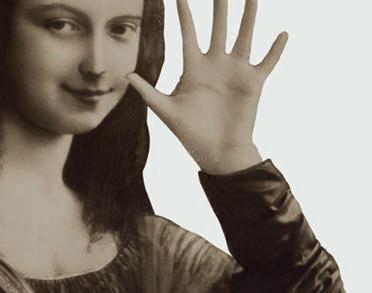


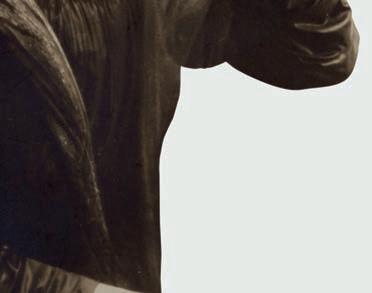







 . Photo Giquello & Associés
. Photo Giquello & Associés
Pierre Jeanneret, ‘Paddle Arm’ chair
Hammer Price: £2,500 Chorley’s
A Poole Pottery ‘Dragon’ dish

Hammer price: £160 Sworders
Louis Vuitton trunk, Monogram Estimate: £6,803


Bruun Rasmussen
Banksy, “Love is in the air”
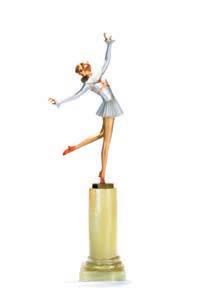
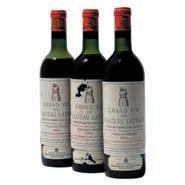
Estimate: £84,615 - £126,922 Bukowskis
9 bottles 1962 Ch Latour
Hammer price: £5,019

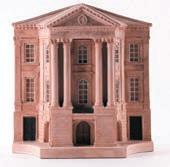
Tate Ward
Medals, Victoria, gold 1887

Hammer Price: £14,050 Sworders
Architectural model, Tyl Theatre
Hammer price: £50 Dawsons
Josef Lorenzl (Austrian, 1892-1950)

Hammer price: £1,800 Halls

Desk circa, 1930

Hammer price: £15,000 Lyon & Turnbull


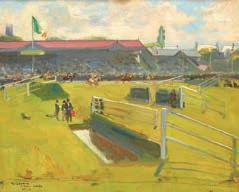
George III Silver Wine-Coolers
Estimate: £10,000 - £15,000 Tennants
Two West German Vases
Estimate: £80 - £120 Chiswick Auctions
17th century portrait
Hammer price: £8,000 Dawsons
Sir John Lavery

Estimate: £88,000 - £130,000 de Veres
1966 Austin Healey
Estimate: £46,000 Silverstone Auctions
Christopher Dresser (1834-1904)
Hammer price: £1,875 Lyon & Turnbull